




Courtney’s Got Talent
Hit songwriter and America’s Got Talent producer Courtney Harrell’s seemingly impossible path from hardship to hard-won success.
BY
KIMBERLY
ASHTON 22 Fair Play
As YouTube’s algorithm snags copyrighted songs,music educators struggle to assert their fair-use rights and keep their content online.
BY SARAH GODCHER MURPHY
28
GLOBAL PARTNER SPOTLIGHT Taking Root
Thanks to years of perseverance and a steady supply of talent, an alum’s partner school flourishes in Bogotá.
BY
KIMBERLY ASHTON
34 KEY CHANGES Audio Integrity
As live shows increasingly incorporate a synchronized audio-visual experience, playback engineers have stepped into the spotlight.
BY REBECCA BEYER
Tempo NEWS FROM OUR FACULTY COMMUNITY
FACULTY PROFILE
A Legacy of Her Own: Berta Rojas 42 BY MARK SMALL
Faculty Notes 45
INTERVALS
Searching for a Song’s Emotional Arc 47
BY SUSAN ROGERS
How to Build a Playlist that Engages Children in Music Class 49
BY DR. DARLA S. HANLEY
52 Pulse
NEWS FROM OUR ALUMNI COMMUNITY Alum Notes 54
ALUMNI PROFILES Jett Galindo 55 BY DARRY MADDEN
Ben Wilborn 59 BY NICK BALKIN
Final Cadence 62
64
Coda
Beyond the Technical: The Importance of Real-World Experience in Music Editing BY STEVEN SALTZMAN
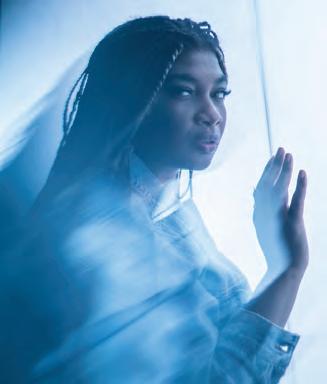
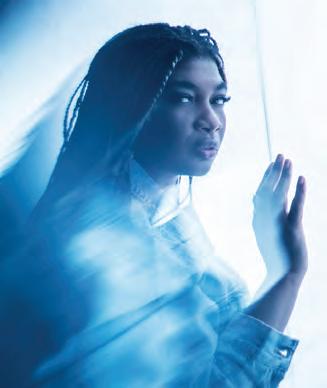

EDITORIAL DEPARTMENT
DIRECTOR
SENIOR COMMUNICATIONS MANAGER
COMMUNICATIONS MANAGER
PROOFING MANAGER
Berklee Today | Spring/Summer 2023
A PUBLICATION OF THE OFFICE OF EXTERNAL AFFAIRS
EDITORIAL DIRECTOR
CONTRIBUTING WRITERS
DESIGN
COPY EDITOR
CONTRIBUTING ARTISTS
Kimberly Ashton
Nick Balkin, Rebecca Beyer, Tori Donahue, Colette Greenstein, Darla Hanley, Darry Madden, John Mirisola, Sarah Godcher Murphy, Bryan Parys, Susan Rogers, Steven Saltzman, Mark Small
Patrick Mitchell, André Mora MODUSOP.NET
Diane Owens
Kelly Davidson, Lucy Cobos, Dave Green, Nadia Hafid, John Huet, Alejandro León, George Lindsay, Greg Mably, Liz Maney, Adam Noya, Frank W. Ockenfels 3, Takao Ogata, Omari Spears, Bryce Wymer
Nick Balkin
Bryan Parys
John Mirisola
Lesley O’Connell
OFFICE OF INSTITUTIONAL ADVANCEMENT
SENIOR VICE PRESIDENT OF INSTITUTIONAL ADVANCEMENT
SENIOR DIRECTOR, ALUMNI AFFAIRS AND ANNUAL GIVING
ASSOCIATE DIRECTOR OF ALUMNI AFFAIRS/LOS ANGELES
ASSISTANT VICE PRESIDENT FOR INSTITUTIONAL ADVANCEMENT
SENIOR MANGING DIRECTOR, INSTITUTIONAL ADVANCEMENT SPECIAL PROJECTS
Erin Tunnicliffe
Joseph Dreeszen
Dana M. James B.M. ’09
Beverly Tryon ’82
Virginia Fordham B.M. ’80
As the alumni-oriented magazine of Berklee College of Music, Berklee Today is dedicated to informing, enriching, and serving the extended Berklee community. By sharing information about college matters, music industry issues and events, alumni activities and accomplishments, and musical topics of interest, Berklee Today serves as a valuable forum for our family throughout the world and a source of commentary on contemporary music.
Berklee Today (ISSN 1052-3839) is published twice a year by Berklee College of Music’s Office of External Affairs. All contents © 2023 by Berklee College of Music. Send all address changes, press releases, letters to the editor, and advertising inquiries to Berklee Today, Berklee College of Music, 1140 Boylston St., Boston, MA 02215-3693, +1 617-747-2843, kashton@berklee.edu. Alumni are invited to send in details of activities suitable for coverage. Unsolicited submissions are accepted. Alum Notes may be submitted to berklee.edu/alumni/forms/alumni-updates. To manage print or digital subscriptions, go to college.berklee.edu/alumni/bt/subscribe. Visit us at berklee.edu/berklee-today.
Kimberly Ashton
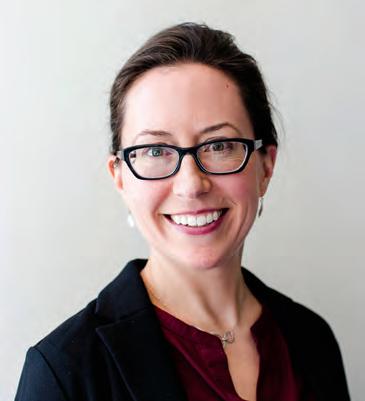
in her inauguration speech to a full house at the new MGM Music Hall at Fenway, Berklee President ERICA MUHL spoke of “a passion that is so intense it drives you to get up every day to head into the studio, the rehearsal room, the lab, the classroom, the office—just to once more give everything you have to perfect what you do...”
Her comment put me in mind of this issue, and how each of the alumni in it are driven by this same passion. Take COURTNEY HARRELL ’01 , for example. Imagine the love for music it takes to push forward as a teen mom going to college full time, and the drive required to go from there to a career as a public school teacher, a top-tier songwriter, and a producer on one of television’s top talent shows.
Or let’s look at ALEJANDRO CAJIAO B.M. ’05 and the sweat and (literal) tears it took to grow what he calls a “mini Berklee” in Bogota on an arable dream and seed money of $10,000. “I had to fight for what I was doing…I always believed in the school,” Cajiao told me.
Likewise, without perseverance and dedication, the highly successful educational YouTube channels that ADAM NEELY B.M. ’09 and Associate Professor TOMO FUJITA run (despite the roadblocks YouTube’s Content ID system presents) would have died long ago.
I was also struck by how Assistant Professor MARTY WALSH ’s students were inspired to travel back to Boston to perform a long-postponed concert with him well after graduation. “I’ve been practicing for two years for this,” said DARBY PATTERSON B.F.A. ’16 B.M. ’20.
These examples are just a few of the many not only in these pages but of the thousands in Berklee’s wider community who push forward in their art day after day. I hear it in the stories faculty and alumni tell me about their latest projects. I know many of you feel it, too.
STUDENT SHEILA DEL BOSQUE FUENTES PERFORMS AT THE CAREER JAM CONCERT IN THE BERKLEE PERFORMANCE CENTER ON MARCH 31.
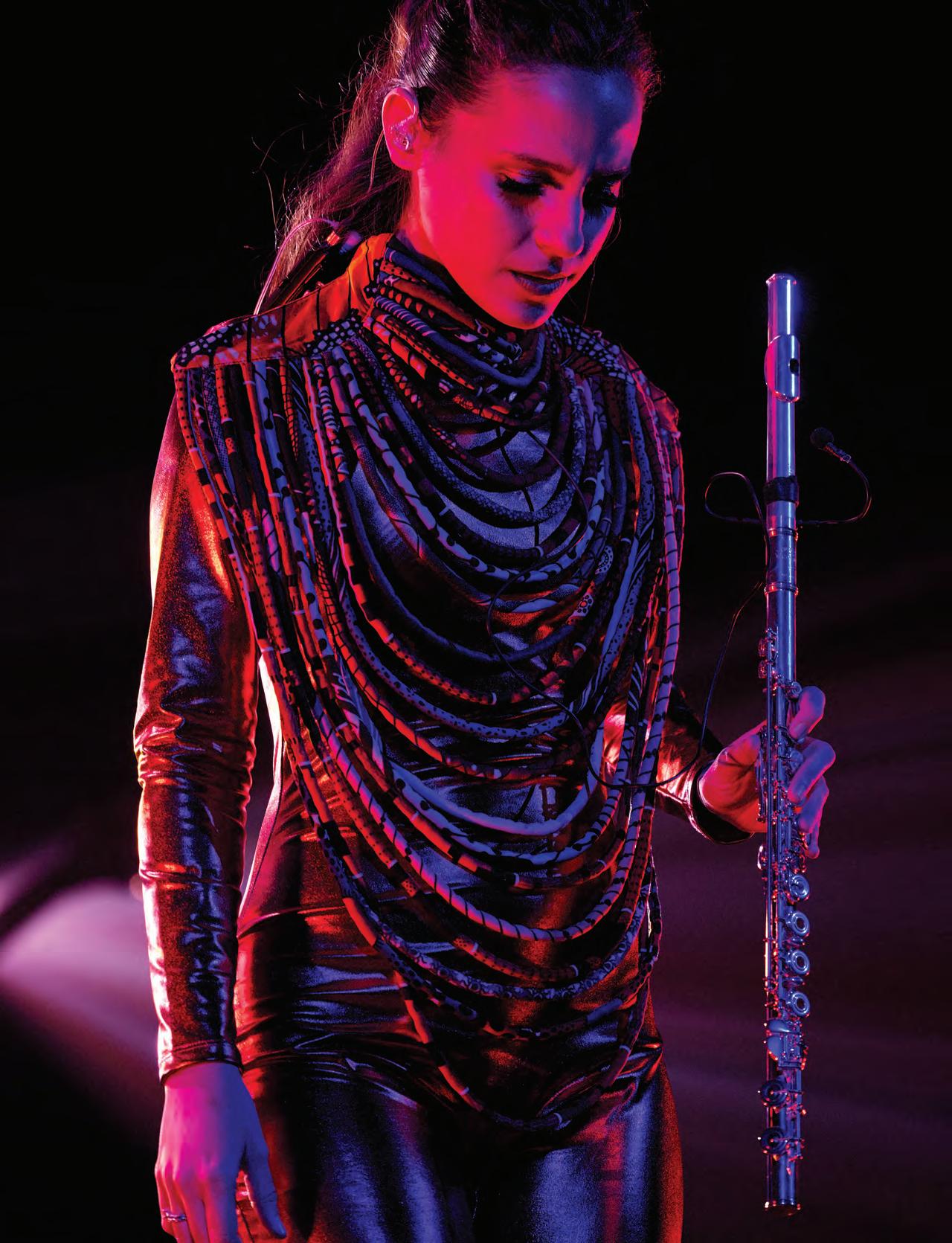
BY TORI DONAHUE
Berklee celebrated the inauguration of ERICA MUHL, DMA, its fourth president and the first woman to lead the institution, on April 4 at the MGM Music Hall at Fenway in Boston.
Muhl opened her inaugural address explaining why she loves Berklee, from its uniqueness in the world of arts education to the eagerness of its community to break conventions about what learning should look like in the arts.
“I’ve heard so many stories at Berklee about students walking into their lessons and asking to study something that turns a musical genre on its head, and the response is never ‘we don’t
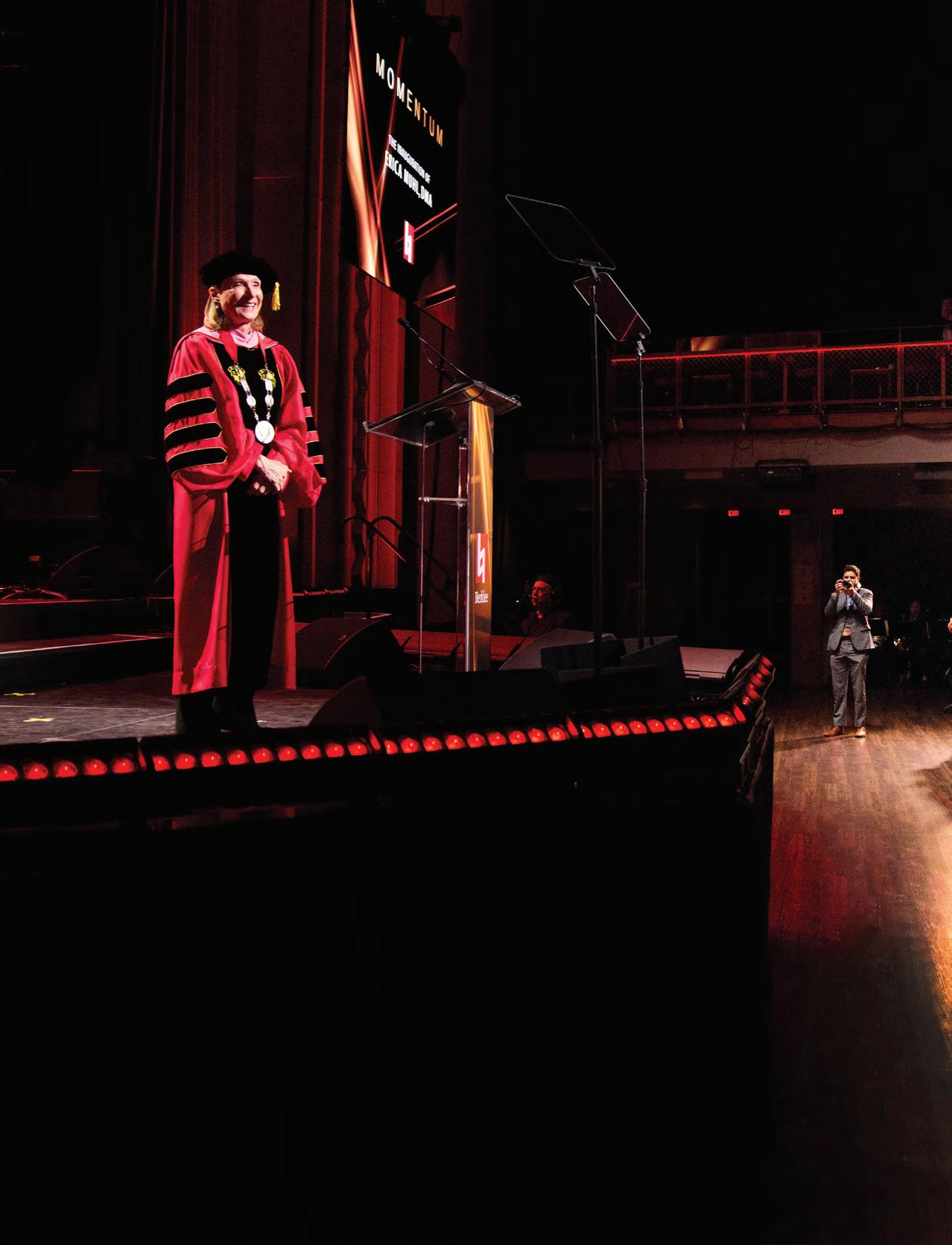
do that here’ but instead ‘let’s explore this and see what we can learn together,’” she said.
She described the five strategic pillars that shape Berklee’s future, including a focus on the principles of diversity, equity, inclusion, and belonging, and creating a pipeline of student success that begins with educational partnerships for grades K–12, and continues through Berklee and beyond. In the conclusion of her address, Muhl said, “Our work ahead will not be easy, but disrupting the status quo never is. I am excited about the future we will build from this interconnected strategy and the institution that will emerge. There is a certain chaos to the world’s momentum, and we can do our best to avoid it, and the inherent risk. But this is a community of defiant groundbreakers who are no strangers to opposition, and together we will grab that momentum and harness its power.”
During the ceremony, Muhl presented an honorary doctorate to musician and humanitarian SONA JOBARETH ’23H , the keynote speaker for the inauguration. A musician and educator from the Gambia, Jobarteh was born into one of the five principal griot families in West Africa, a hereditary
tradition that dates back over 700 years to the Mali Empire. Jobarteh is the first woman within this ancient tradition to master the kora, a 21-string instrument from the Mandeng regions. She studied it under her father, breaking the custom of handing down the art exclusively from father to son. She performed following Muhl’s inaugural address.
Other performers included the Wildmans, a student band; the Berklee Inauguration Brass Ensemble, conducted by Professor JULIUS WILLIAMS; and the Inauguration Faculty Jazz Quartet, composed of WALTER SMITH III (saxophone), KRIS
RECEIVING
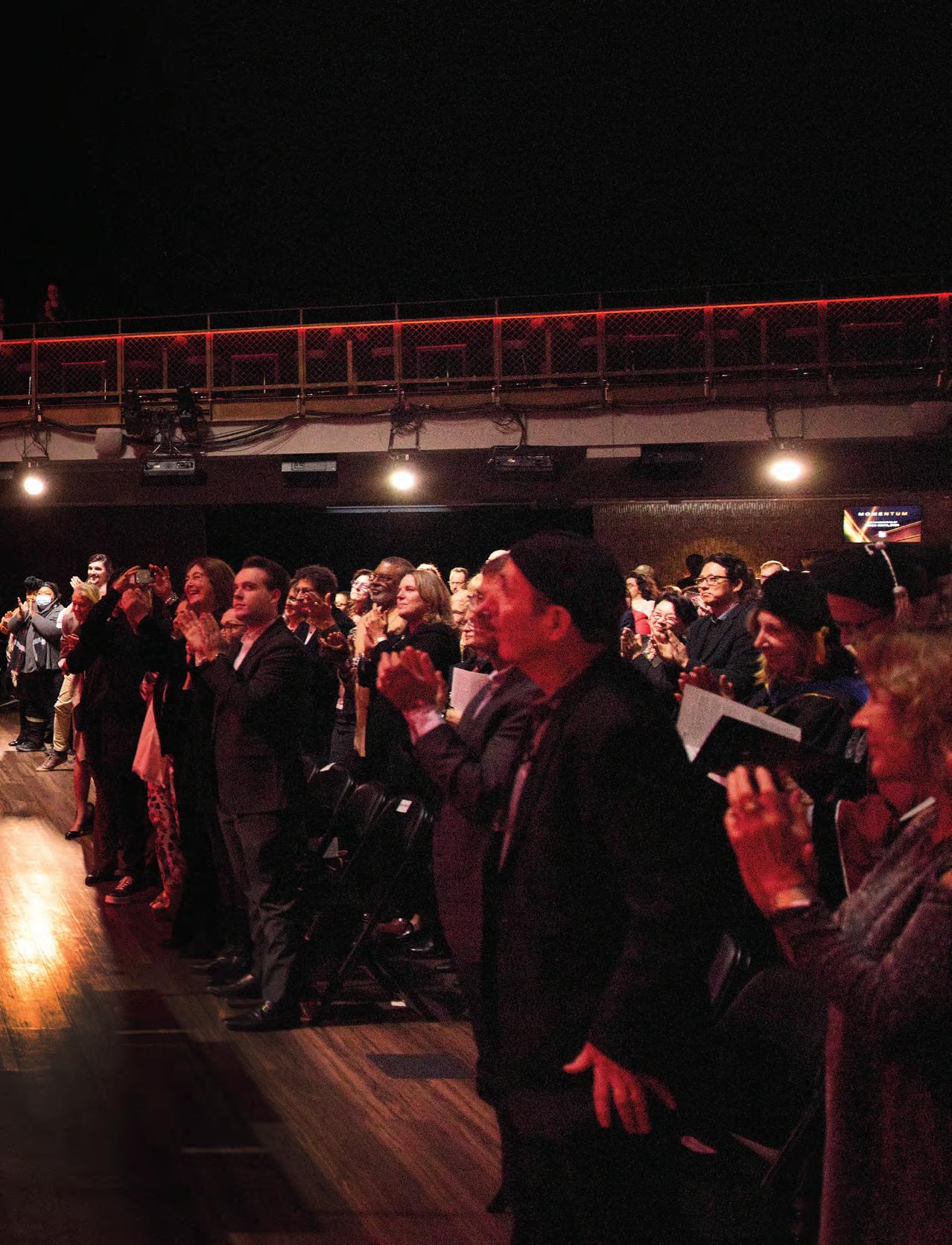
DAVIS (piano), LINDA MAY HAN OH (bass), and TERRI LYNE CARRINGTON (drums), Speakers included MARTIN J. MANNION, chair of Berklee’s Board of Trustees; Dr. LACRETIA FLASH , Berklee’s senior vice president for DEI, community, and campus culture and climate; trustee GRACE KELLY B.M. ’12; Professor LASZLO GARDONY; MARÍA MARTÍNEZ ITURRIAGA, senior vice president of international learning environments and executive director of Berklee Valencia; HAROLD RIVAS, president of the Berklee Student Government Association; and Dr. Jean Morrison, university provost and chief academic
officer at Boston University.
Berklee’s inaugural celebration began with a performance by the Berklee Inauguration Symphony Orchestra at Symphony Hall on April 3. The collaborative orchestra of student, faculty, and staff performers performed several of Muhl’s works as well as works by Joan Tower and Samuel Barber, composers whose contributions to American concert music influenced Muhl’s career.
The inaugural festivities concluded April 4 with a soldout event concert, The Great American Songbook: Girl on Fire—The Music of Alicia Keys, at the MGM Music Hall.
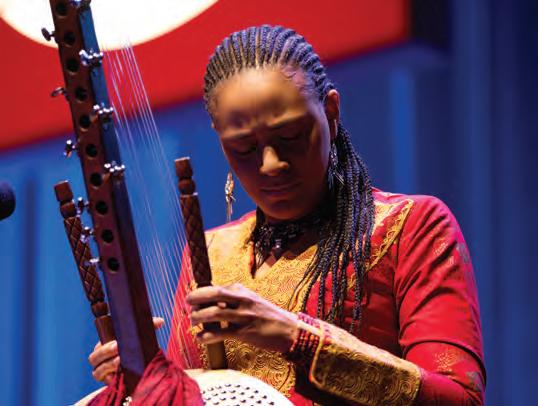
BY NICK BALKIN
Berklee presented Alumni Achievement Awards to four recipients—AMIE DOHERTY M.M. ’13, COURTNEY HARRELL ’01, QUINTON
MORRIS M.M. ’04, TOMMY TORRES
B.M. ’93—at a reception at the Westin Copley Place in Boston on March 30.
Amie Doherty has quickly become one of the most sought-after composers in film and television. Since earning her master’s degree from Berklee Valencia, she’s amassed an impressive list of scoring credits that includes Amazon’s Undone, Hulu’s Happiest Season, DreamWorks Animation’s Spirit Untamed, for which she became the first woman to score a feature film for the studio, and, most recently, the Marvel/Disney+ series SheHulk: Attorney at Law. Doherty is also an in-demand orchestrator and conductor who has worked on projects by Lady Gaga and 50 Cent.
An alumna of the City Music program, Courtney Harrell earned a full scholarship to study at Berklee, and pursued a diploma while raising a son she had at 17. After graduating, she gradually built a successful career as a songwriter, penning songs for Ariana Grande, Mary J. Blige, Brandy, and others, and later taught music in Boston’s public schools. In 2016, her blind audition on NBC’s The Voice—Harrell’s first public performance in 15 years as a lead singer—landed her in the show’s top 10 round, which led to a spot as a coach on Fox’s The Four: Battle for Stardom. She’s now a lead producer for NBC’s America’s Got Talent.
Quinton Morris is a tenured violin professor at Seattle University who has performed everywhere from Carnegie Hall to the Sydney Opera House to the Louvre Museum.
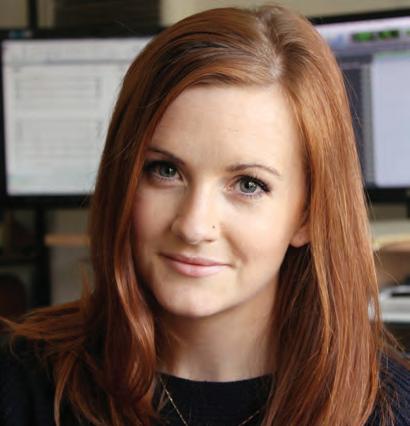
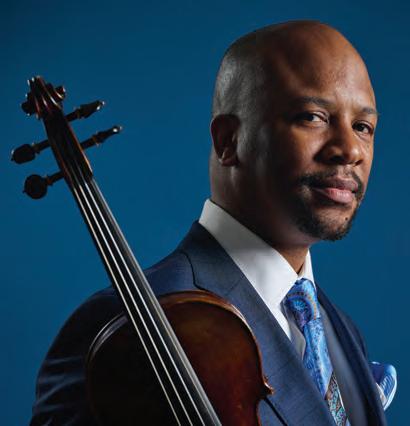
He’s also the founding director of Key to Change, a nonprofit violin and viola studio that provides opportunities for underserved students, and is the host of KING-FM’s Unmute the Voices, a radio show that highlights artists of color working in classical music. Morris’s award-winning short film and performance project, Breakthrough, celebrates the life and music of Joseph
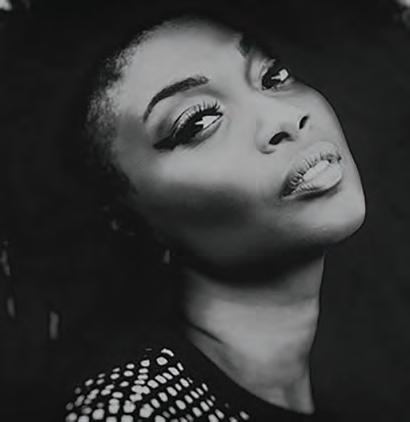
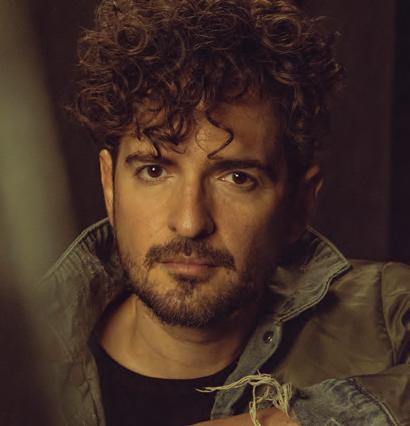
Bologne.
Tommy Torres is a Puerto Rico–born, Miami-based singer, songwriter, and producer who has worked on chart-topping hits for Ricky Martin, ALEJANDRO SANZ ’13H, Jaci Velasquez, Jesse y Joy, Ednita Nazario, and Alicia Keys, among many others. He’s also released five solo albums, the most recent of which, 2021’s El Playlist de Anoche, was produced by Latin trap
and reggaeton superstar Bad Bunny. Torres has won Grammy and Latin Grammy awards, ASCAP Latin Music Awards, and Billboard Latin Music Awards.
The evening reception featured a 15-piece band performing a medley of music from each honoree’s career. They spent the following day at Berklee Career Jam, where they met with students and participated in panels and workshops.

BOB DOEZEMA ’76 retired from Berklee last year, after nearly half a century during which he played a pivotal role in shaping curriculum and in spearheading a signature summer program. In February, he was named professor emeritus in the Contemporary Writing and Production Department.
“Bob is highly deserving of this recognition for his constant passion and dedication to teaching and mentoring,” says AMPARO EDO BIOL, chair of CWP. “During his 46 years of service to the college, Bob…set the grounds for our arranging core curriculum, which is managed in the [CWP] Department. Bob [also] served as director of the Five-Week performance program, substantially shaping its curriculum, duration, and character into the successful program we know.”
ANDREA PEJROLO, a CWP professor who for years served as department chair, remembers Doezema as “one of the most dedicated, passionate, and effective teachers I have ever known.”
Doezema says he’s honored to be named professor emeritus, calling Berklee a place that’s filled his musical life with purpose and joy. “The inclusive mission statement, forward-thinking educational philosophy, and the extraordinary music community of faculty, students, leadership, staff, and alumni: it’s the place I’ve always wanted to be.”
DARRY MADDEN
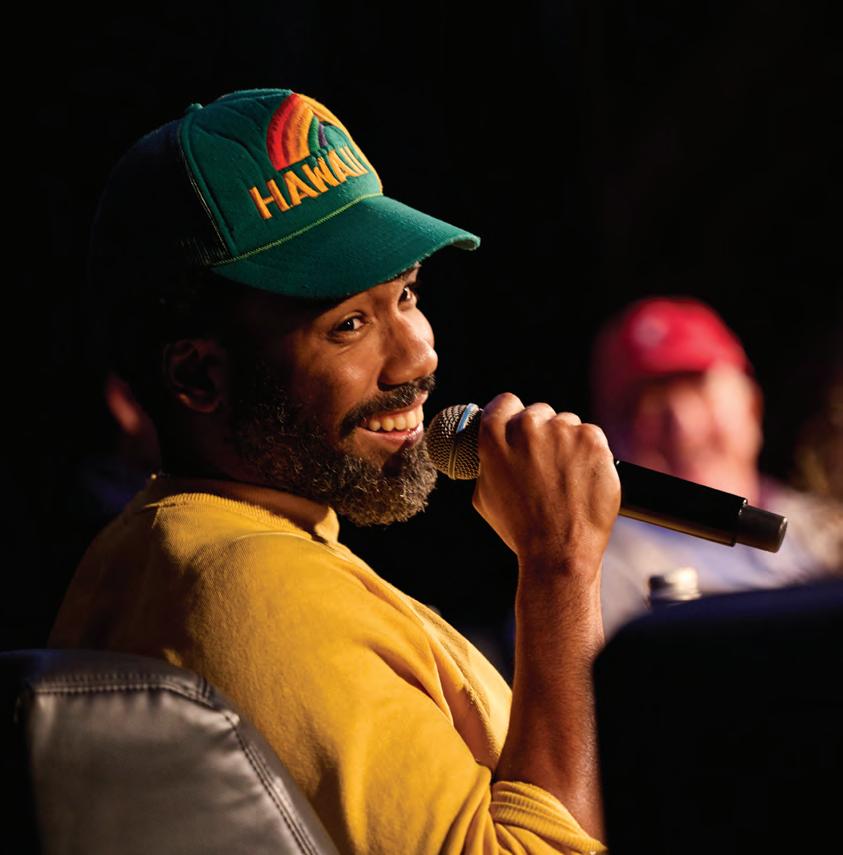
BY BRYAN PARYS
At this year’s Career Jam keynote panel event on March 31, moderator TONYA BUTLER was trying to introduce the event’s celebrity guest, Donald Glover, but was having difficulty breaking through the roars of the audience packed to capacity in the Berklee Performance Center.
“Now, you all can’t clap after every word or we’ll be here all night,” Butler joked as she listed Glover’s many talents as an artist, actor, comedian, director, and producer. The energy in the room was so high that Glover likened it to the feeling he gets before performing as Childish Gambino, his hip-hop persona.
In addition to Glover, the keynote panel included Luke Wood, former president of Beats by Dre, and Paul Wachter, founder and CEO of Main Street Advisors; Butler, chair
of the Music Business/Management Department, guided the conversation. While the panelists shared career advice from their combined decades of experience from nearly all areas of the music industry, the discussion kept returning to the theme of trust.
“Trust is the most valuable thing you can have as an artist,” Glover said, explaining that having people he can count on to be real with him is what allows him to do his job. For an artist, that job “is to make sure that your point of view is sharp and that you know who you are, and you know who you're speaking to.”
Wachter, whose clients include Bono and LeBron James, agreed: “You can't trust everyone because not everyone's trustworthy, but if you can't trust anyone, you're never going to be able to get anywhere.”
The keynote was a highlight in a day full of them. Throughout Career Jam, students had the chance to network with people from dozens of companies, such as Sony Music, Instagram, and the Boston Pops, as well as with reps from tech startups, record labels, talent agencies, and many other organizations.
Sponsored by the Career Center, Career Jam is an annual event aimed at broadening students’ career possibilities. “It provides exceptional opportunities for [students] to learn from and to connect with esteemed artists, employers, leaders, and entrepreneurs at the highest levels of the industry,” Berklee President ERICA MUHL said. “There is nothing like this anywhere.”
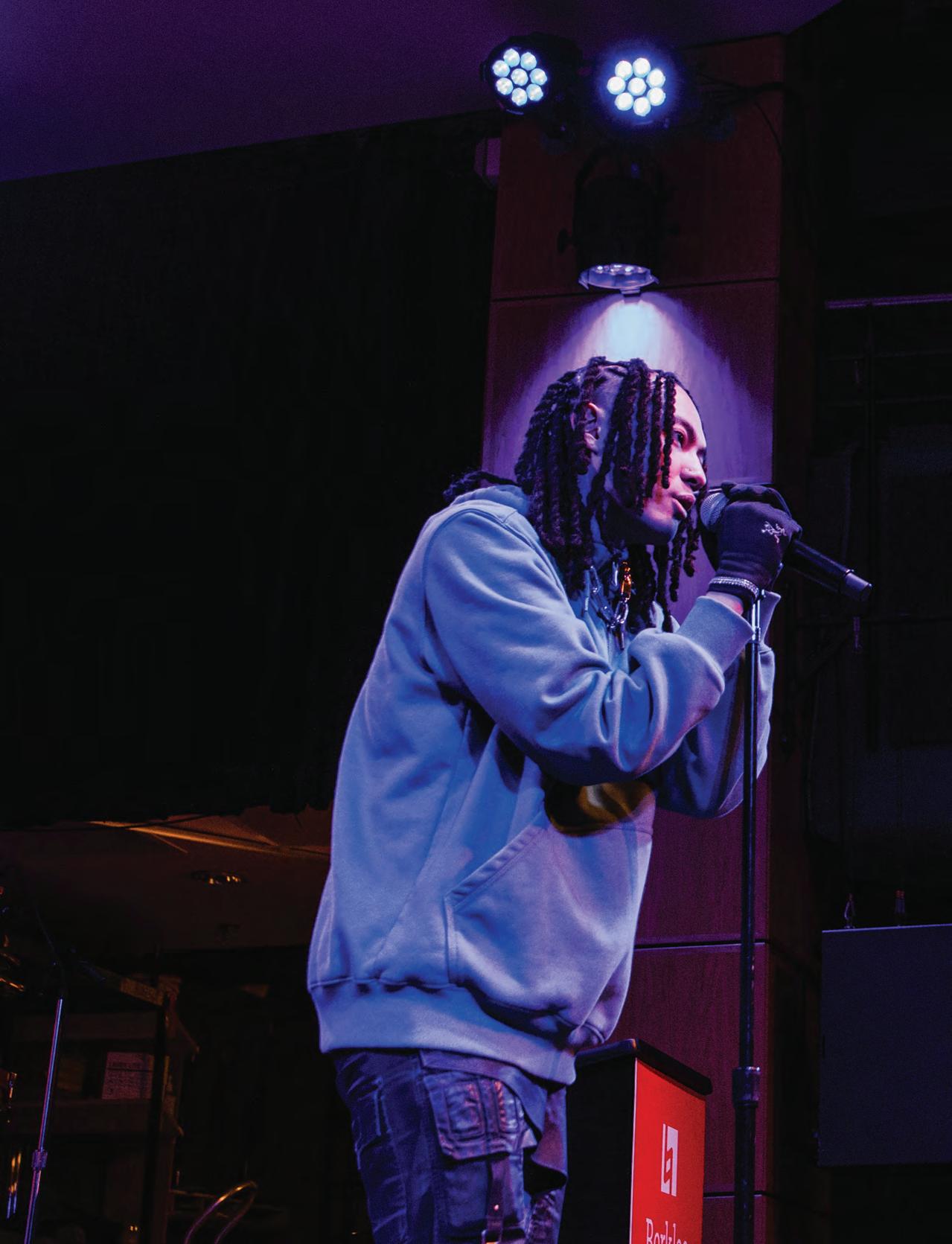
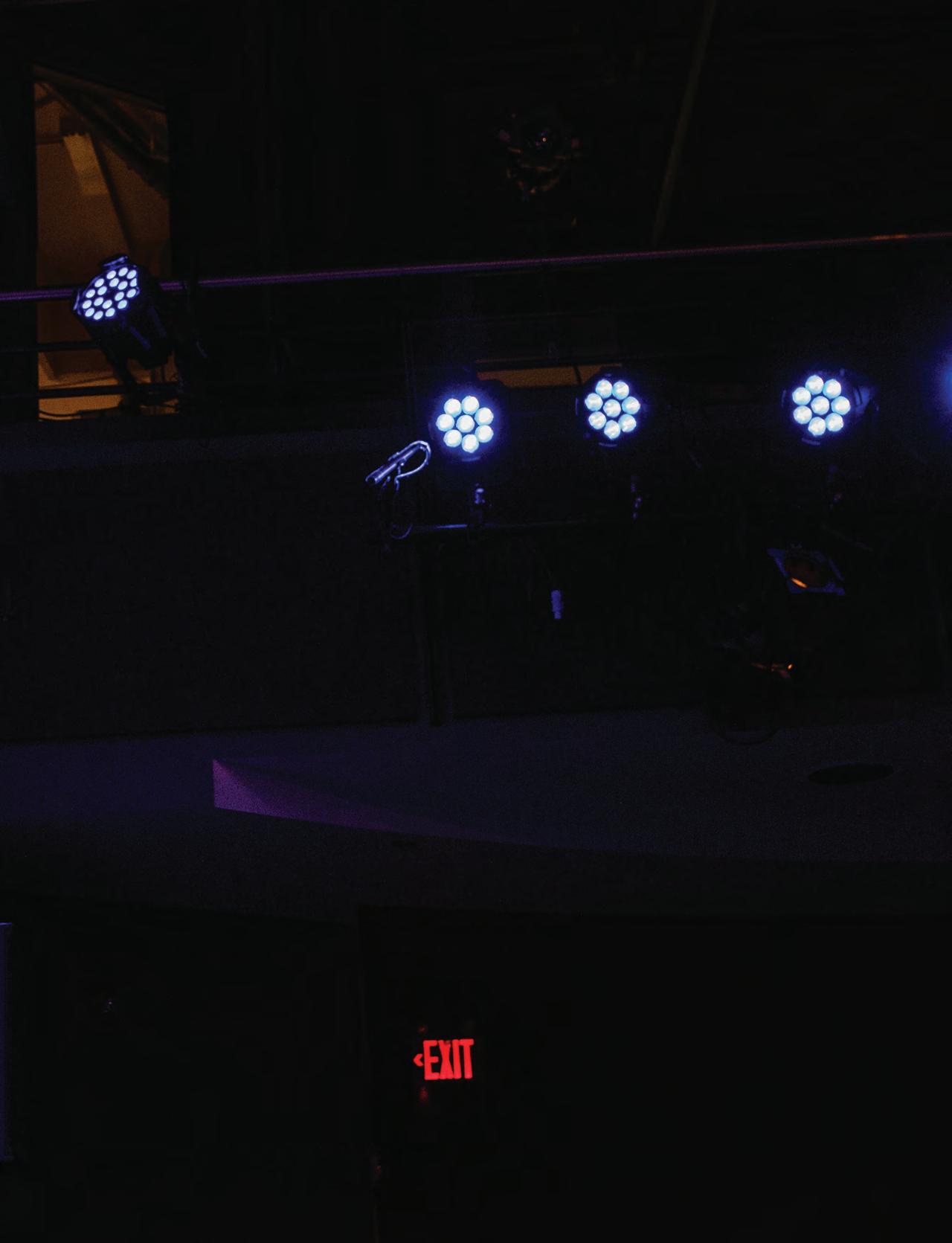
EVENT: The Second Annual International Hip-Hop Symposium
DATE: Thursday, February 23, 2023
LOCATION: David Friend Recital Hall, Berklee Boston
DETAILS: Student Taizhe Cui, who goes by the stage name Stevv Tsui, performs songs from his debut album, Vision .
BY KIMBERLY ASHTON
Assistant Professor MARTY WALSH began a directed study ensemble on the music of Joe Cocker in the fall of 2019, offering an end-of-semester concert at the David Friend Recital Hall. But Walsh felt the show—focusing on the 1970 Cocker/Leon Russell Mad Dogs and Englishmen tour—deserved a brighter spotlight and wanted to take it to a bigger venue such as the Berklee Performance Center. However, just when this became possible, the college shut down for the pandemic.
As the pandemic unfolded over the following years, many of the students who had been in the class graduated and dispersed. But they didn’t forget the ensemble. So when Walsh finally nabbed a No -
vember 2022 date at the BPC for the long-postponed show, his former students were ready to jump on board.
“I contacted every student that was ever in the class. I asked them to come back and perform,” Walsh says. Twenty-two alumni responded (in addition to the 14 students in the class at the time). “People dropped what they were doing, took off work, booked flights, hotels, drove in...”
“I [was] so jazzed,” says vocalist DARBY PATTERSON B.F.A. ’16
B.M. ’20 of West Tisbury, MA.
“Because in the past two years I would listen to the [Cocker] album just to feel good. I’ve been practicing for two years for this.”
The newly formed group quickly put a show together,
rehearsing on a weekend, loading in on a Monday, and then performing Tuesday, November 1.
“It was incredible,” Walsh says. “One for the ages.”
His former students agreed. “I flew across the country for the undeniable thrill of putting on a killer show with some of the most talented people I know, [but] the underlying reason I came back was Marty,” says vocalist RACHEL MYERS B.M. ’20, of Toronto, Canada. “He spoke about the history of the [Cocker] band: the love the musicians had for each other…the bond—the same bond that we all formed with each other over the years that this final show just solidified and strengthened.”
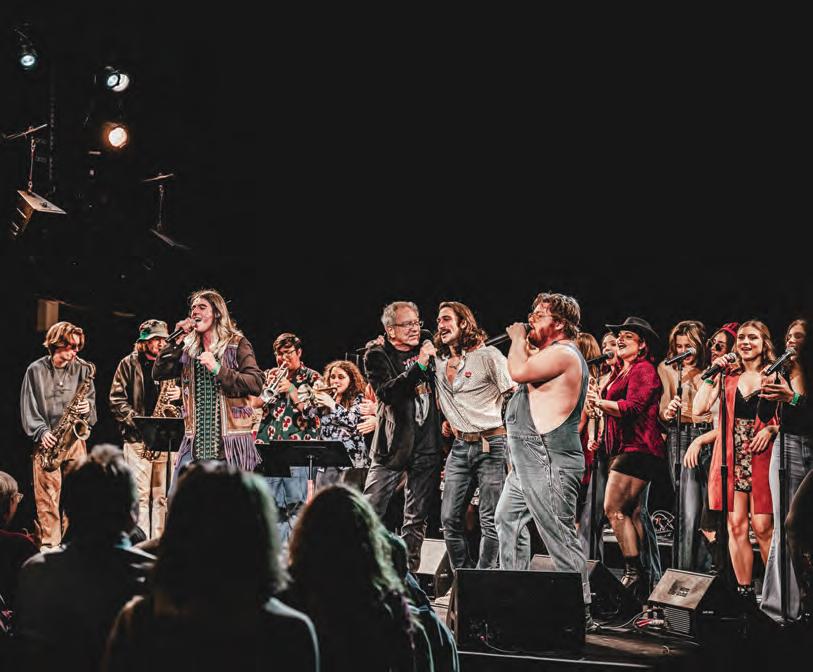
Berklee Online began offering three new degree programs this year: an M.A. in interdisciplinary music studies, a B.A. in voice performance, and a B.A. in piano performance. All three programs are taught entirely online by the same instructors who teach at Berklee College of Music, as well as by music industry professionals.
The M.A. program allows students to choose from four areas of study— music business, music production, songwriting, and film scoring—and consists of 12 courses (36 credits) that can be completed within one year.
The voice performance program teaches students how to sing as well as how to record, edit, mix, and master vocal tracks. Students will also receive weekly private one-on-one voice instruction.
The piano performance program offers students the comprehensive skills and techniques. The curriculum covers songwriting, music production, music business, music theory, and some study of other instruments.
COLETTE GREENSTEIN
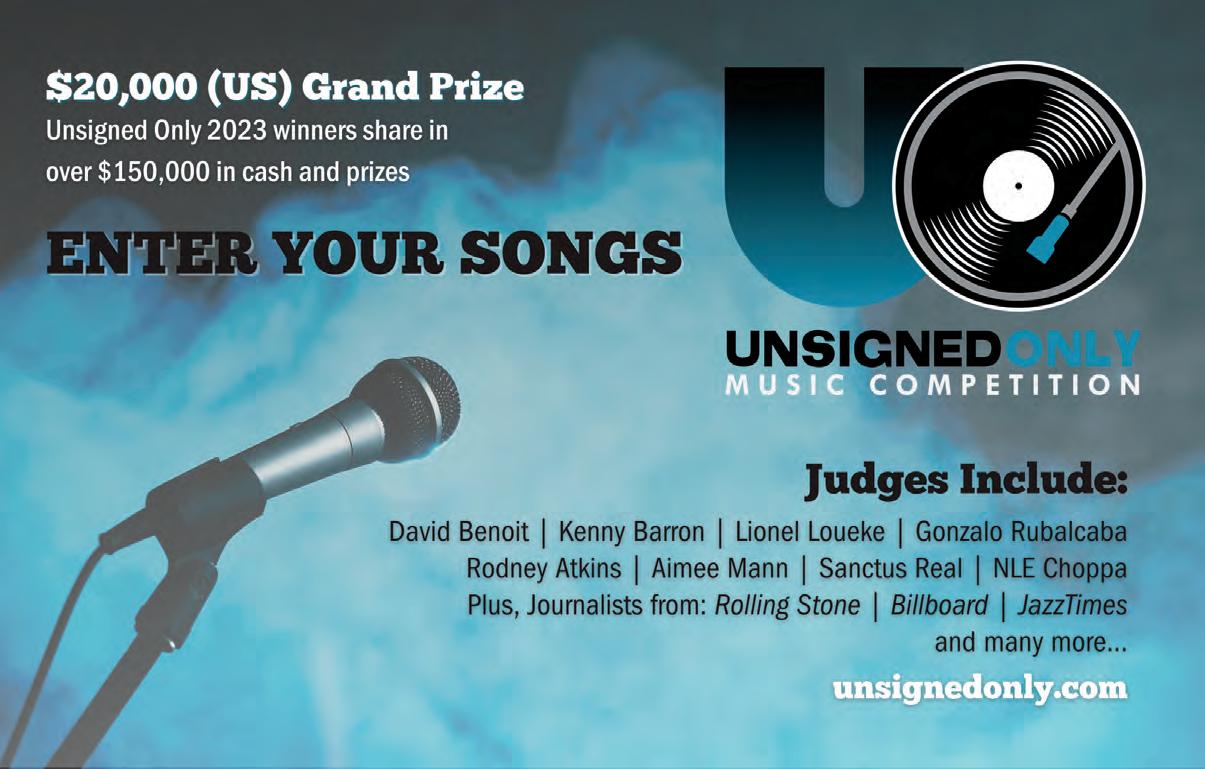
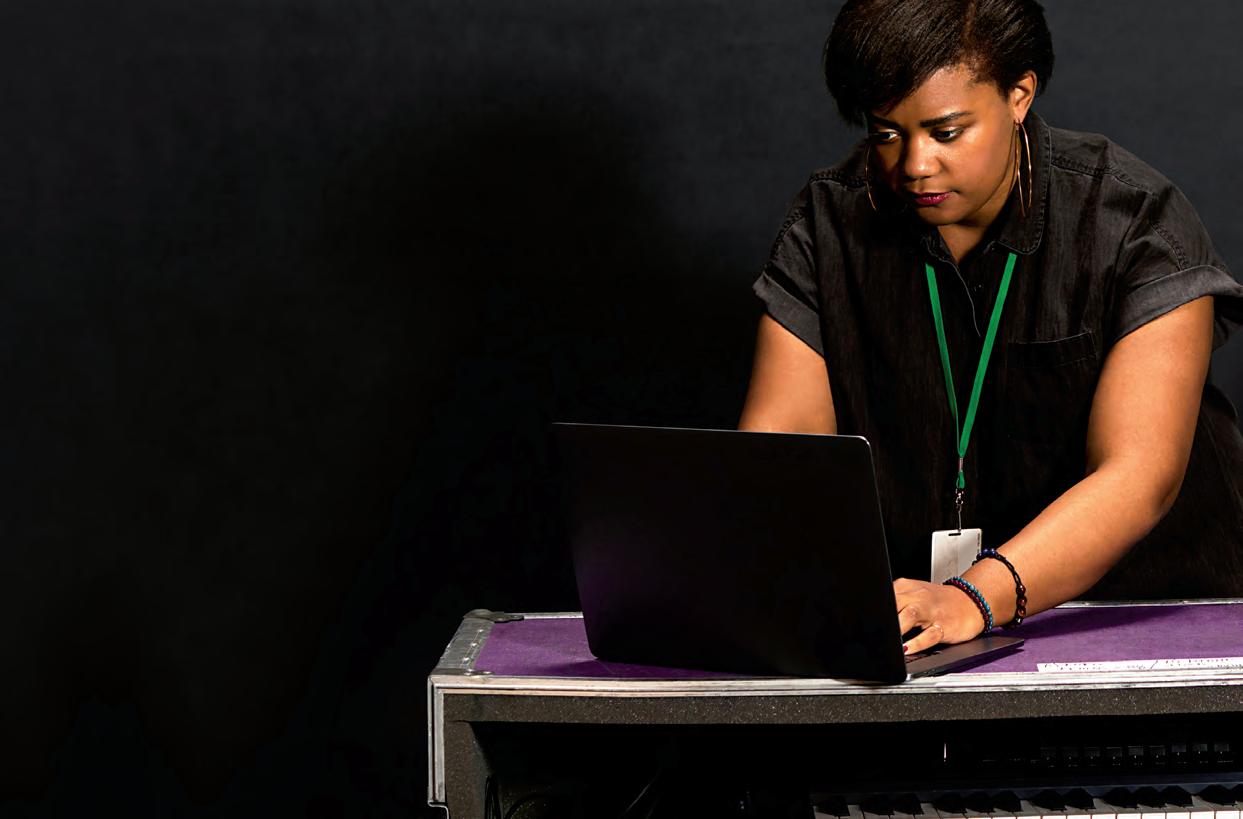
With Berklee Online, you can study at any time, from anywhere in the world. From courses, to certificates, to bachelor’s and master’s degrees, the opportunities to learn and grow are vast. Get started with a FREE sample lesson, or chat with an advisor today at 1-866-BERKLEE or advisors@online.berklee.edu. Visit online.berklee.edu/sample-a-lesson

Hit songwriter and America’s Got Talent producer Courtney Harrell ’s seemingly impossible path from hardship to hard-won success.

COURTNEY HARRELL ’01 remembers being about 11 or 12 years old when her mother, a gospel singer, started calling her up to the front of church congregations: “She would point to me, and just say, ‘Come up here,’ while she was singing, and toss me the mic.”
Her mom would do this at Faith Tabernacle Assembly, the Dorchester church where she and Harrell’s father were co-pastors, and at the many churches where she was a guest singer. “That was her way: She just threw me in the deep end,” Harrell says. Her mother expected her not to just keep her head above water but to be able to plunge into its sonic depths and glide atop its buoyant surfaces. “It’s like, ‘You’re not learning, you’re doing it, and you need to sing it like you wrote it,’” Harrell remembers.
The message—this is your moment, take it—was one Harrell internalized as an invaluable lesson that has helped her have a successful career as a songwriter for some of the biggest names in the industry, as a teacher at Boston Public Schools, as a performer who’s toured with JOHN LEGEND ’20H and landed in the top 10 on The Voice, and as a casting and lead producer for America’s Got Talent (AGT).
It’s a résumé many musicians would envy, and Harrell built it after becoming a mother at 17, while also often working jobs in retail and trying to become self-sufficient enough to get off welfare.
This spring, Harrell returned to Berklee to receive one of the handful of Alumni Achievement Awards the college gives out every year (see p. 8) and to participate in Career Jam. “Berklee is home,” she says. In March, while she was at her current home in Los Angeles as the next season of AGT got under way, she talked with Berklee Today about her unlikely path to
success, her tips for songwriting, what she looks for in musicians she’s casting for AGT, and what she calls “the big fear.”
The interview below has been edited and condensed for length and clarity.
I want to talk a little about how you grew up. What was your early exposure to music? Was your family musical?
My parents are pastors. My mom–incredible singer. Voice like PATTI LABELLE [’96H] that soars through the air. She was the first one that I saw that was like a superhero in music. She would sing at the Gospel Night at the Pops. …What is now TD Garden was the Fleet Center at one point, and the opening night they requested my mom to come and open the Fleet Center.
Everything I know about music, like songwriting, delivering emotion in song, comes from my father. He was a songwriter, too. …I have memories of him calling me into a room where he’s listening to Motown or whatever. [He’d say,] “Do you hear phrasing? Do you hear how they delivered this line? The rhythm in this line?”
There were times that a song would come to him at like 2, 3 in the morning, and he’d get me and my mom up and say, “Wake up, wake up! I hear this! Sing this part!” And then he’d record it in a tape recorder.
In addition to that, your dad was a social worker?
Yes, he worked for–I think the name has since changed in the last two years–but at the time it was dare Family Services.
Did your mom have a profession other than being a pastor?
She was a homemaker. She had a home daycare for a while, and then started teaching in Boston Public Schools. She’s still there to this day. She teaches children who are challenged, in fourth grade.
You were 15 when you entered Berklee’s City Music program. Did you enroll at Berklee right after high school?
I started at 20. [Before that] I thought, “Oh, I don’t want to do this anymore. I’m so tired of music.” I wanted to study sociology, so I went to Brandeis University for a year. [Then] I was like, “O oh, no, I miss music.” So I came back.
Tell me about your choice to major in music business if your passion was to be a performer and a writer.
I wanted to be equipped, business-wise, to pursue the goal that I had of being a singer and a songwriter. Oftentimes, you’d find songwriters and singers who would get shafted because they didn’t know the business. And I had a child; I couldn’t afford that.
I wanted to ask about that. You had your son in high school, then you went to Brandeis, and then to Berklee. How did you manage that?
I don’t know. Jesus and family. And holding on to what was in my gut, that there’s more, and now I have a reason to do it. My son was my reason to do it.
You’re saying that your son motivated you in going to Berklee and in succeeding at Berklee?
Absolutely, my son saved me.
Most people would think, “Oh, 17! You had a kid. Oh, how unfortunate! You know, your life is over.” Dylan gave me my life. Because prior to him I was talented, but I was terrified of the world. …My esteem or belief in myself was…it wasn’t there. But [after his birth] I had someone I had to do it for.
I hid my pregnancy for seven months. I was just afraid. …But I would talk to him in my womb, I would tell him I loved him. I didn’t see a doctor until I was almost eight months, and then I went into silent labor at eight months.
What is silent labor?
You’re having a baby but you don’t feel it. So I would tell him, “Dylan, you are born to do the impossible, because this is crazy. But I can’t tell you that if I’m not able to do what’s possible for me, which looks impossible to most. So now I have to do it to show you who you are.”
What part of it do you think looks impossible to most?
Teen mom, going to college, full scholarship, raising your kid, putting your kid through college, touring the world, writing for some of the biggest artists, producing on one of the biggest shows in history. Like, these are things that I hear sound incredible, and I think about it, I mean, they are.
It does sound incredible. Did you have a job while you went to school?
[I worked at the retailer] Express. …I would work two and three jobs while I was at Berklee.
So you went to Berklee fulltime on a full scholarship, you

held down a couple of jobs, and had a baby?
It was hard. It was painful.
Impressive, though. So can you tell me about those years right after you graduated from Berklee? What did those look like for you?
While I was in Berklee, a friend of mine gave me a week in his studio to write some songs, and I was like, “Well, I’m going to New York.” …On that trip I met a man at Popeye’s Chicken who I started having a conversation with, and it turned out that he was the assistant to the executive director at [the New York chapter of] ASCAP. And he was like, “I want you to meet my boss.” I talked to his boss that night, and his boss said, “Can you get here on Tuesday? Come play me your songs.” I was like, “Yeah.”
What happened from there?
I was signed to them, or I signed with them as my [performing rights organization]. Usually you don’t get that kind of attention from them if you haven’t really proven yourself. But I went in there on my three little demos, and I was like, “Here you go.” I just said, “I’m a songwriter.” I had never really written. But I was like, “This is what I do.”
...And I started writing. It wasn’t for artists at first; it just was with producers. So that’s really where the value is in the beginning: it’s the relationships with the other creatives.
CLAUDE KELLY [B.M. ’02] was one of them, right?
Yeah. Oh, I went to school with him. …At one point…he was like, “Courtney. You’re a singer. You need to get out there.” And he was my manager in Berklee. In New York, I stayed with him and his mom. …I was writing with him. Some of our first cuts early on were together, for the Cheetah Girls, or I don’t know. Like, little things…these smaller cuts that you get along the way. We got a lot of those together.
How did you go from writing for ASCAP to writing for some of the biggest artists in the industry?
You keep working. You keep making connections. You keep taking the things that seem like they’re not really a big thing, but they turn into a big thing. And eventually you’ll meet someone who’ll have a key to open the door to that room.
After you’d been doing this for a while, you started working as a teacher at Boston Public
“Ultimately, what the artist wants to happen more than anything is to just be heard. But you cannot be heard if you’re not letting your voice sing lead.”
Schools [BPS]. Can you talk about that transition?
I would ask [my son] all the time, because I was on the road, “I will stop when you ask me.” Whenever I would leave, I’m like, “Dylan. Are you sure you’re okay?” …And then one day in January of 2005, he says, “Mom, I’m not fine anymore. I want you home.” I was touring at the time with Tweed, or doing gospel spot dates here and there. And then I’m in New York, writing. …So I went from that to teaching at the Lyndon School in West Roxbury, music to kids K through eighth grade. I did that for four years and wrote in between. I would test my songs out on the kids: “Is this good?” If they can’t sing it back to you, you do not have a hit record.
Oh, really? Why?
Because it needs to be memorable. And if it’s too smart, or too anything, they ’re like, “Oh, that’s nice, Miss Harrell, can you play Taylor Swift?” …So that’s how I know that if you cannot get a kid, forget about it. And I also understood the influence of music with the middle schoolers. So there were two very important, urgent lessons that I learned that prepared me for being a songwriter. I keep them in mind every time I put my pen to paper.
If you can’t get them to sing the song, you don’t have a hit song. And…
What you write shapes their world. It shapes their perception of themselves. I would see how they would come and tell me what they wanted to do with their lives. …A lot of times the influences were not good. We had little girls who aspired to be
video hoes. I mean, that’s what they said at the time, and that was a cool way of saying it. So, okay, I have to bear that in mind.
What kind of messages do you think about putting into your music, having those kids in mind?
I just think about writing what is true and what is vulnerable and what is beneficial and hopeful. I like to write the world the way I’d like to see it.
I noticed at the AGT auditions you ran at Berklee last month that you would encourage students to sing their inner truths. Is that how you help shape artists that you work with?
Absolutely. Ultimately, what the artist wants to happen more than anything is to just be heard. But you cannot be heard if you’re not letting your voice sing lead. Your voice, your experiences, your point of view, your fears, your hopes for a better tomorrow or a better 30 seconds from now— that’s where you have to come from. Or else, it’s just sound. But music needs context. Music needs truth. Music needs power and honesty and vulnerability and badassery—it needs all of that. It needs audacity. It needs courage. And if you don’t have that then it’s not going to work.
This reminds me of a video clip I saw of you talking about the difference between an artist and someone who does music.
Yeah, there is a difference. … There are some people who are just there to make you feel good. And then there are some people who are there to move the needle, to crack your heart open.

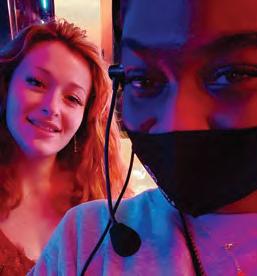
To shape your world. To throw you a lifeline. To say, “No, you’re not crazy. I feel that way, too.”
And it’s to color your world with hope and understanding.
You left your job as a public school teacher in 2009. What made you decide to leave?
I left BPS because it was time to go.
Did you have another job lined up?
No. …But I felt inside like, “I need to prepare myself for what’s next.” And I planned on making a comeback as a songwriter. So I just worked on songwriting for about a good five/ six months before I got a call to come in and audition for John Legend, out of the blue.
How does that happen?
My godbrother had called me, and he said, “Courtney, you’re going to get a call. Just say yes.” So the call came the following morning, and I got a call to sing for Lady Gaga. I was like, “Hmm. Something about this doesn’t feel like a good fit for me.” I was on the verge of eviction. But I was like, “This is not the way I’m supposed to go.”
How did you know that?
I just felt it. This is fall 2009.
Was this to be a backup singer on her tour?
Yeah. I would have got paid a lot of money. I’m sure of it. It would have changed things for me financially. …the next day [the same person] calls and says, “How about John Legend?” I said, “That I can do.” The line to audition for him was two New York blocks. There were 500 girls out there.
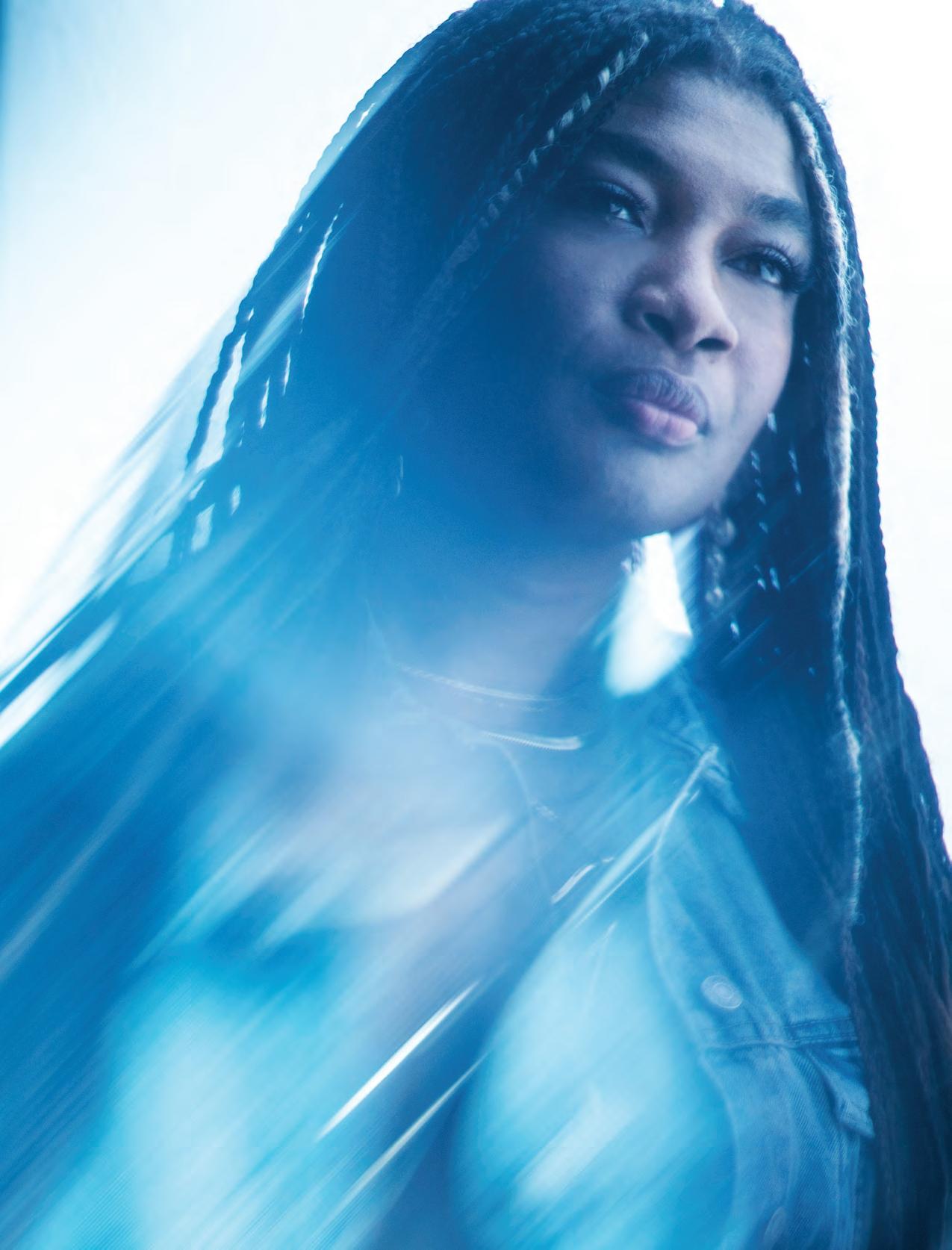
For one spot?
One spot.
What happened from there?
In 2010 I started with John Legend. I was still writing. On a break we had in L.A. I connected with a producer named Harmony Samuels, who I had worked with before on a project that seemed like it was nothing. (Remember, I was saying it’s always a thing that you think, “Oh, I don’t have time for that”: that’s the thing that changes everything.) …I went and did a session with [Samuels]—within 45 minutes the song just flowed out of me. And it was [about] my life during that time, which was very hard. I was on the verge of losing my place, eviction, it was crazy. I was still on Section 8. I was still on welfare. I wasn’t ever making enough to not need help.
Even while you were working for Boston Public Schools?
Yes! Even while I was singing with John Legend!
So I connected with Harmony…and then another songwriter, Eric Bellinger, came the next day. The three of us started writing a lot. Those songs got us in the door with Chris Brown. And then it just started going click, click, click, click. But a lot of the songs, like, from Mary [J. Blige] or Beyoncé…they’re songs that I just wrote, and they heard them and they liked them. …I wrote what was true to me.
What are some of the top tips you would give to songwriters?
Study, study, study. Study the greats. Study not just the songwriters, study the artists. Also, don’t be afraid to live, because
you have to have something to write about. It’s okay to put the pen or pencil down. My pen is down right now. It’s down. When I pick that joint up again, though, I’m gonna have something to say. I’m studying [the TV show] Frasier right now for the third or fourth time: Look at the timing. Look at the storytelling in it. …And then, [there are] exercises that you should do. Just write for 10 minutes and don’t stop, and don’t worry about whether or not it makes sense. Or take an object in your room and let that be the prompt that you write a story about for 10 minutes. And then listen. Songwriters, you need to listen. Your songs are all around you. Songs are in the jobs you don’t want to take because you’re too cool for it.
What
If you’re working as a barista, do you know how many stories you’re going to get? Take the job! You know how many stories I encountered selling clothes? Teaching kids? The world is your prompt notebook. Work at Starbucks! Know what it is to be the person you’re writing to. I think that’s why, if one says that I connect, it’s because…I am you. I’m not too cool to be you. I’ve struggled. I’ve suffered for this. I’ve paid for it. …But the musicians, they annoy me because they’re too cool for a lot— they’re too cool.
And if they’re too cool they don’t get the stories.
Nope. You too cool. Nobody can tell you anything. You’re so worried about being a rock star. Rock stars pay for that. Otherwise, you get to the top, and then you don’t have what you need to sustain it.
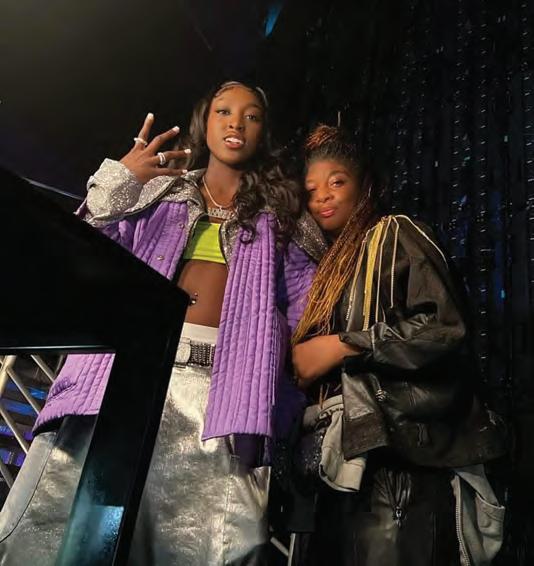
You mean you don’t have something to write about?
Yes, and you don’t have life experience enough to keep you sane when you get to where you think you want to go. Because the air, it’s thin up here. It’s thin.
Let’s fast-forward a few years to your 2016 audition for The Voice. How did that come about?
[My vocal coach, Nick Cooper] says, “Courtney, can you come teach these kids at my studio in downtown L.A. about songwriting?” I say, “Yes.” He says, “Why don’t you sing something for us?” I sing a hymn, “It Is Well.” The Voice sees that video. That’s what made them invite me.
Oh, your coach put it online?
My mentee at the time, who has become a brother to me, Lamont Leak, he put it online, because he came with me.
…But what you should know is that I was songwriting for all these people, but streaming had taken place as king, really, and so the money ran out. So at the time that I was singing for these kids, I was in the process of losing my home. …By August 2015, I had lost my home. …I was couch surfing…and would drive up to do sessions or what have you,
“You don’t have to be the best talent, but you gotta make us feel something.”
and never tell anybody that I was homeless.
Were you homeless when you auditioned on The Voice?
I had just got into my place three weeks before.
During your audition for The Voice, you said you hadn’t sung publicly in 15 years.
That was publicly as a lead singer.
How did your life change after that audition?
In a lot of ways it didn’t. [Laughs.] But in a lot of ways, it did. I changed. I faced the big fear.
What’s “the big fear”?
Of being seen, being heard, and being rejected. …The Voice was hard for me in a couple of ways… there was an unraveling that was happening. There was death. Two significant deaths in my family at the time that no one knew about. I didn’t have the full understanding of what stress was doing to my body, so my breathing was off when I was on the show. I had a sore throat. …And then the opinions of people who don’t know anything about you, and then the guilt of “Man, what my peers on this show are trying to achieve, much of it I already have. Is it fair for me to be here?” And that guilt would impact the way I would perform, too.
When you say you had what they were working for, do you mean a successful songwriting career?
Yeah, on paper. But there was no money in songwriting at the time. …Now that I’m more stable, I don’t have the financial concerns as I did.

This stability, did it happen after The Voice?
Well, yes, but…it’s in production [work]. I’m a music producer at America’s Got Talent.
Tell me about the transition to becoming a casting producer for AGT.
Lamont Leak, who was a TV producer, had his name in the hat for this particular job. They were looking for a music industry professional to come in on the casting side, just so that we would elevate the type of artist that we placed on stage, because, you know, the executive producer is Simon Cowell, so music is a big deal. And I think taste level is important. … [Leak] couldn’t do the show, so he asked me if I was interested, and I said yes.
When you do casting, what do you look for in a musician?
I don’t know. The truth. Something that says, “Oh, my God, you have to see this. You have to hear this.” And I don’t know what it is until I see it.
…You have to have grit, you have to have belief in yourself, even if there’s some doubt, you gotta have belief. You don’t have to have the best talent, but you gotta make us feel something. I gotta feel it. I don’t care what it sounds like. We’ve heard it all. We haven’t heard life through your perspective, though. That’s what’s missing. The best to ever do it have already come and gone.
…We [as singers] are trained to think, “Oh, we need to be the next big whatever.” No, you don’t. You need to be the next big you, and you is imperfect. …Michael Jackson missed notes. Whitney missed notes. They don’t sing everything in tune! [But] it was
real. And that’s why it was magic. …Kobe made most shots, but he didn’t make every shot. LeBron didn’t make every shot. What you need to learn is resilience. You need to learn to fail quickly. Fail and fail fast. …You can’t say, “Oh, man, I didn’t get that shot.” Drop it and then study the tape afterward. But when you’re in it you cannot think about that.
In auditions, do you see people getting caught up in their heads, thinking about that note they just missed?
Yes. And that means that you won’t get the moment that you came for and you wasted your time. The moment that you want—which is to be heard, to be seen, to be accepted—won’t come unless you give it to yourself first. …That’s how I got that job with John Legend out of 500 people. Not that I was the best singer.
A lot of people in auditions think they need to be the best.
You just gotta be the best you. I saw some this season who I’m like, “Oh, you have no idea how much you are in your own way.”
So they are kind of denying themselves.
Yes! And hiding behind all these things that they think they need to have together.
What are those things that they hide behind?
Oh, “I need the right song,” or “I’m not good enough as a singer,” or “I need more practice.” You’re doing too much. …You have to be able to throw yourself in the deep. It’s what my mother did with me: “Take the mic, Courtney… I’m passing you the mic. Take the mic.”
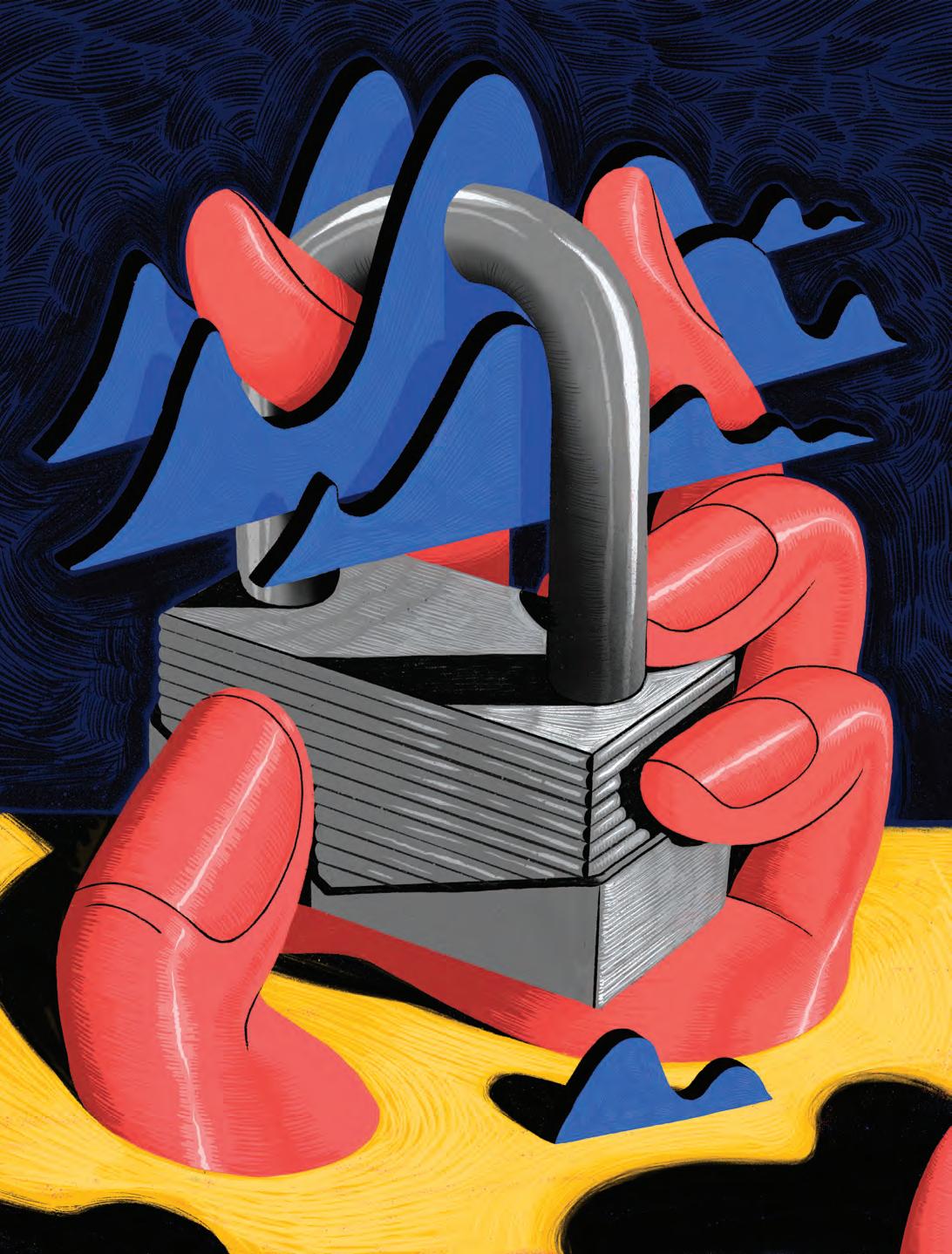
As YouTube’s algorithm snags copyrighted songs, music educators struggle to assert their fair-use rights and keep their content online.
Over the past decade, many music educators have embraced YouTube as a platform to share educational content, reach a broader range of students, and, hopefully, supplement their income with a bit of ad revenue. The platform is hugely popular with music students of all skill levels, providing everything from beginner guitar lessons to in-depth analysis of iconic jazz solos. More than any other social media, YouTube connects independent learners with teachers who can help them.
While this may sound like a match made in heaven, the platform’s copyright management policies create roadblocks for educators who post instructional videos on the site. YouTube uses a digital fingerprinting system known as Content ID to automatically scan every video uploaded to the platform, searching for copyright-protected material. Excerpts of songs as brief as five seconds can result in a video being flagged or taken down for copyright infringement, even though the video may be perfectly legal under the fair use doctrine, which allows educators to use copyrighted songs as examples of the con-
cepts they are teaching.
But what is legally considered fair use isn’t always straightforward. What may be fine for a closed educational system like a college or middle school becomes much murkier in the wide- open—and revenue-generating—world of YouTube. Let ’s say, for example, you are teaching a lesson on how to reharmonize a jazz standard. In all likelihood, your lesson would include excerpts of recorded music, illustrating various harmonic approaches used by artists over the years. In the classroom environment, this undoubtedly would be considered fair use.
But if you were to record this lesson and upload it to YouTube—sharing your lesson with the platform’s 2.6 billion users—your right to fair use isn’t so clear cut. Because Content ID is fully automated, the system cannot distinguish fair use exceptions from outright piracy—which means that educational content gets ensnared just as easily as bootlegged copies of Beyoncé’s latest single. And, once a video has been flagged, the copyright holder can opt to have the video removed, thereby deleting the educator’s lesson.
ADAM NEELY B.M. ’09 has experienced this problem firsthand. As one of the most popular and beloved music educators on YouTube, with 1.69 million subscribers, Neely says that nearly all the content on his channel has been flagged for copyright infringement.
“I think—and many of the other people on YouTube also think—that this is an issue of fair use,” he says. “We legally have the right to use these small snippets for purposes of commentary and analysis.”
Neely creates video essays and lessons that use brief clips of recorded music (each less than 10 seconds long) interwoven with his thoughts on everything from music theory and history to psychology and pop culture. The resulting videos feel like a lecture delivered by your favorite college professor crossed with a clever talk show host; and they’re “highly polished, cleverly edited, and consistently funny,” says Spin magazine.
“If I’m trying to make some kind of broader cultural or music theory or historical reference, I need to be able to use that bit of the copyrighted work; otherwise my commentary is meaningless,” Neely says. “There is no other way of doing it in the medium of YouTube.”
Associate Professor TOMO FUJITA , who launched his YouTube channel in 2019, strongly agrees, adding that YouTube has become an essential tool for connecting with students online. “It’s the only way. On Facebook, Instagram, Twitter, people say amazing stuff, but that’s all. They just talk, talk, talk,” he says. “Those [platforms] are just making buzz. It doesn’t do anything about anything unless you have a YouTube.”
Fujita’s approach to videos feels more personal—something akin to a private lesson in his
home, during which he shares not only guitar instruction, but also life stories, jokes, and footage of his cat, Dexter. Fujita has built a following of 505,000 subscribers. But, he says, he cannot count on YouTube ad revenue for income, because of copyright issues. “I don’t really expect [it to make money],” he says. “But if it does, great.”
That’s because whenever Content ID finds a copyright-protected song in a video, YouTube allows the copyright holder to appropriate any ad revenue generated by the video. This practice, known as monetization, means that large corporations like Universal Music Group, Sony Music Entertainment, and Warner Chappell Music can take revenue away from educators like Fujita and Neely simply because they used a snippet of a song in one of their videos.
Monetization began as an attempt to protect intellectual property, but has turned into a cash-generating machine for rights holders. According to YouTube’s most recent Copyright Transparency Report, “… because of Content ID, YouTube has created an entirely new revenue stream from ad-supported, user-generated content—paying more than $7.5 billion to rights holders from ads alone as of December 2021.” And while Content ID has helped ensure that artists rightfully get paid for their creations, it also ensnares content creators who are acting above-board.
The volume of Content ID claims is staggering. According to the transparency report, copyright holders made approximately 759 million claims in the second half of 2021 alone. Combined with data from the first half of 2021, nearly 1.5 billion Content ID claims were made in one year.
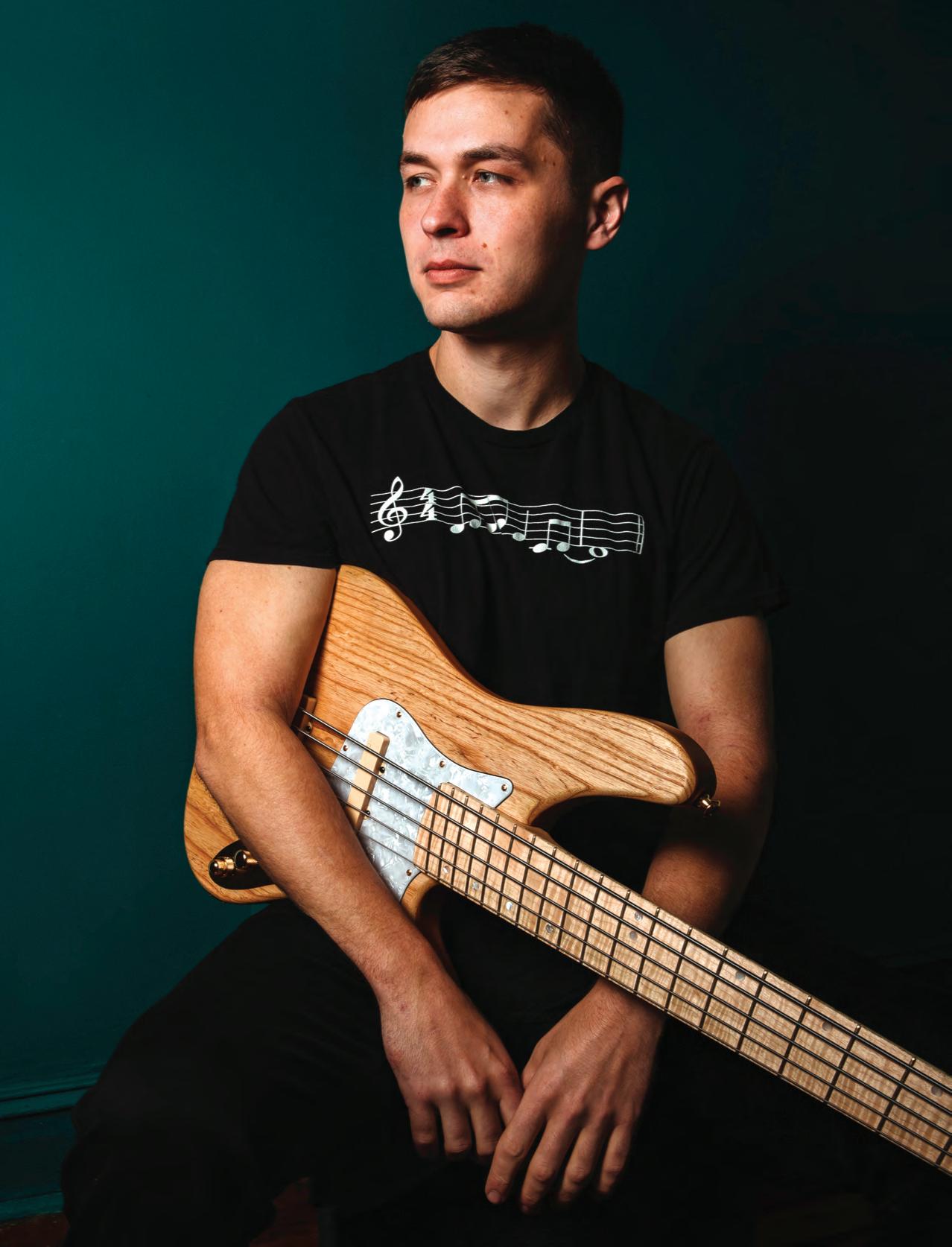
“If I’m trying to make some kind of broader cultural or music theory or historical reference, I need to be able to use that bit of the copyrighted work; otherwise my commentary is meaningless.”
ADAM NEELY
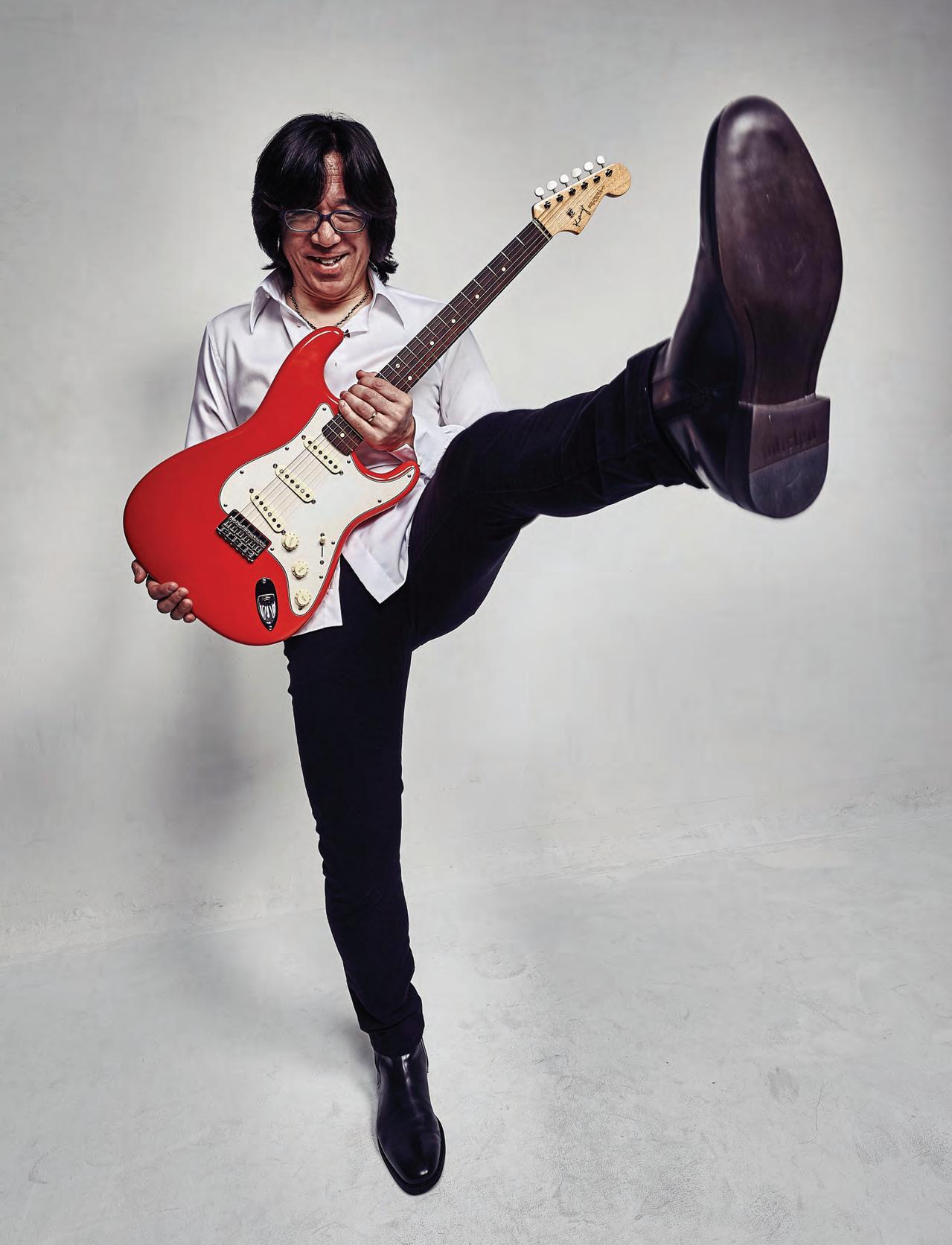
“I don’t really expect [my YouTube channel to make money]. But if it does, great.”
TOMO FUJITA
If an uploader believes his use of a recording is protected under the fair use doctrine, he can dispute the claim, following specific guidelines laid out by YouTube. But ultimately, the copyright holders themselves get final say in the dispute phase. In other words, the owners of the material are effectively deciding the legality of its fair use.
The lengthy process of fighting Content ID claims has become a regular part of Neely’s life as a YouTuber. In most cases, he says, the rights holders ultimately drop the claim, and the ad revenue finds its way back to Neely.
“The amount of money in ad revenue that they might claim for one of my videos might be $1,000, $1,500—which is very significant for me, but in the grand scheme of things for their legal department, it’s like, ‘Nah, that’s not worth it,’” he says.
Fujita says he never disputes copyright claims. The process takes too long, he says, so he chooses to forfeit the ad revenue. His long-term strategy is to attract new students via YouTube content, then encourage them to subscribe to his personal website, Guitar Wisdom
“I do not argue. Whatever happens, I move on,” Fujita says. But he understands why Neely disputes claims: “He spends so many hours on one video. He has to fight. I focus on making a better video for my Guitar Wisdom.”
Neely has resigned himself to the Content ID dispute process, for all its hassles and delays in ad revenue payments. And he has turned to Patreon as a consistent source of income. But there is more than income at stake when it comes to fair use, he says.
“It’s very important to make music a lived tradition—to make it something that people are talking about…. YouTube and
social media is a very important part of that shared culture,” he says. “Digital rights management actively works against that in a way that is hard to quantify but is very serious.”
Neely points out that YouTube’s copyright policies exist in “a legal gray area” and have never been tested in court. While this ambiguity makes life challenging for YouTubers, copyright law is inherently complicated in that it must balance the rights of authors with the needs of the public—as well as the needs of other authors who use the original material in a transformative way to create work of their own.
“Fair use is necessarily a gray area,” says JAY FIALKOV , a professor of music business/management. “There’s a lack of
certainty. People can disagree.”
Fialkov serves as deputy general counsel for WGBH, where he frequently advises television and radio producers on matters of fair use. He also spent decades representing musicians such as Phish and Maurice Starr, as well as record labels. Having viewed the fair use doctrine from all sides, he believes ambiguity in the law is essential.
Even within the gray area, some areas are grayer than others, he says, characterizing fair use claims as a spectrum of “dark gray vs. light gray.”
“The problem is, even if it’s light gray, it’s still legally uncertain. Someone can sue you, and you’d have to win on a defense,” he says. “The question then becomes, whose rights should win? The rights of the copyright holder or the rights of the user? And the reality is, reasonable people can disagree about that.”
Fair use is a legal doctrine that permits limited use of copyrighted material without explicit permission from the author. It is a defense against copyright infringement for purposes of commentary, criticism, news reporting, and education. In deciding matters of fair use, courts typically take into account whether the use of copyrighted material is considered transformative and whether its purpose is commercial or noncommercial.
“The copyright law conceptually serves two purposes, and sometimes they compete,” says Jay Fialkov, professor of music business/management. “The first is to provide a financial incentive for authors to create work, so if they’re creative they can spend their time doing that, and they don’t need a day job as a blacksmith or at McDonalds.”
In other words, copyright law protects authors so they can collect income for their work. Fair use is the exception that seeks to balance the rights of authors with the needs of the public.
“It’s also the purpose of the law to protect the public’s interest in having access to these works once they are created,” Fialkov says. “Publication without access would defeat the social purpose of copyright law.”
In the world of YouTube, both sides usually resolve disputes inside this gray area, without a clear legal polestar. The company cannot make judgments when it comes to fair use, says Jack Malon, policy communications manager at Google, which acquired the video-streaming platform in 2006. “It’s not up to YouTube to decide who owns the rights to content,” he says, adding that the company offers tools for both copyright holders and content creators to plead their case. “This dispute process is a routine part of a healthy Content ID ecosystem,” he says.
Neely believes YouTube has made a good faith effort “to try and find what’s the fairest in the system.” But he goes on to say that the legality of that system is “almost irrelevant.”
“This is just what we’ve all collectively agreed to right now. This is all pretend. Because nobody wants it to go to court,” he says. Neely points out that he has never been sued for copyright infringement, and he does not expect to be any time soon because if a record company or publisher were to lose such a lawsuit, it could spell the end of Content ID—and all its concomitant revenue. “It’s too lucrative,” Neely says. “Content ID is an amazing thing for rights holders; so, nobody wants to lose that.”
As a composer and member of the band Sungazer, Neely says he sees both sides of the debate: “I’m empathetic to rights holders. I make music too, and if somebody was uploading my album and making money off it, I’d be like, ‘Hey, don’t do that.’”
But, he adds, “It’s important to be able to talk about copyrighted work, using what’s necessary from that copyrighted work to make that commentary—and nothing more. But nothing less either.”


Thanks to years of perseverance and a steady supply of talent, an alum’s partner school flourishes in Bogotá.


InOctober of 2019, Abraham Granado and his father left their home in Valencia, Venezuela, to begin what would turn out to be a two-day journey to Colombia so that the teenage drummer could audition in Bogotá for Berklee.
The frontier between the two countries had been closed because of conflict, so the men took a 12-hour bus ride to a border checkpoint. From there, once in Colombia, they walked for a couple of hours to catch another bus that would take them on the 17-hour journey to the capital.
The college was in town holding auditions at Escuela de Música, Medios, Arte, y Tecnologia (emmat), a Berklee academic partner and one of the premier schools of contemporary music in Latin America. Granado and his father made it to emmat, where Granado’s talent proved so impressive that he was not only admitted to Berklee but was also given a 50 percent scholarship.
Though this wasn’t enough for Granado to make the move to Boston, emmat offered him a scholarship to study in Bogotá, and for the past two years he has been honing his skills to try out for a bigger Berklee scholarship while at the same time earning credits he hopes to transfer to the college.
As a Berklee academic partner, emmat is one of 24 music schools worldwide that have a credit-transfer agreement with
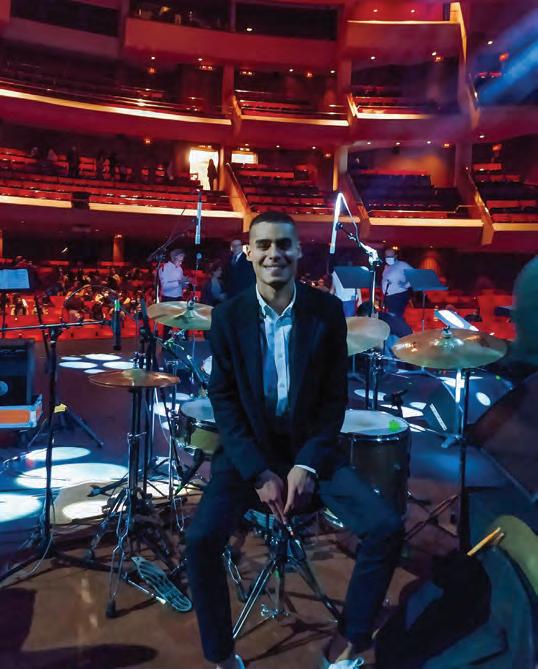
Its students can transfer as many as 39 credits to Berklee, or nearly a third of what they will need to graduate. The arrangement allows students to save money by living closer to home while they take required courses such as ear training and harmony. emmat is among the schools that send the most students to Berklee: before the pandemic, it sent eight students, more than any other partner school except for SJA Music Institute in South Korea and Rimon School of Music in Israel.
Preparing a considerable numeber of students for Berklee is only one of emmat ’s many achievements. It’s also turned out leaders in the Colombian and Latin American music in-
dustries. Last year, former emmat students were nominated for 15 Latin Grammys, and one alumna, Juliana Velásquez, won the Latin Grammy for Best New Artist. Two others, Paula Arenas and Camilo, were nominated for Grammys.
Though emmat ’s success is impressive, it has been hardwon, due in no small part to the dedication of its faculty and staff, and in particular to the grit and determination of its director, ALEJANDRO CAJIAO B.M. ’05.
Cajiao’s road to emmat began with his time at Berklee. He had come to the college in 2000, after completing an economics degree at Boston University. At Berklee, he pursued his film scoring major nonstop for five years, all summers included, eventually racking up more than 200 credits. After graduating and spending an easygoing year in Los Angeles, he considered going to India to work in Bollywood, but a friend approached him with another idea: the friend’s cousin back in Bogotá, MARIA JOSÉ MORALES B.M. ’01, wanted to open a music school, and the friend suggested they help her do so.
“I thought it was a wonderful idea. And a good project, good life,” Cajiao says. The friend, Alejandro Morales; Maria José Morales; and Cajiao banded together, and the trio later brought PABLO SCHLESINGER B.M. ’98 onto the team. With only $10,000 to start, they bought equipment and rented a 3,200-square-foot house in Bogotá’s upscale La Castellana neighborhood. “It was very scary because the rent was so expensive,” Cajiao says. The two Alejandros spent the next six
months transforming the building into a one-of-a-kind school.
Claudia Valencia, the current academic director at emmat, was a student in those early years. “There was something charming and special about the house…they also had a spiral staircase leading to the second floor, and there was always a fresh pot of coffee in the kitchen,” she says. “It was so cozy. My experience as a student, when I first got there, was like, ‘Oh my god, this is the best place in the world. I’m at home here.’”
But for all of the new school’s charm, only 22 students enrolled the first semester, in 2007. This wasn’t enough to cover rent and salaries. The partners got jittery. Cajiao offered to buy their shares, with interest, and kept them in the fold. Maria Morales became a teacher, which she still is today; Schlesinger became academic dean and continued in that role until the pandemic; and Alejandro Morales stayed on for a year as an engineer.
Cajiao, then, became the sole owner. “I had to fight for what I was doing. And I believed in the school. I always believed in the school,” he says. But he was worried, too. Though the student population doubled the second semester, emmat still wasn’t on solid footing.
It was about this time, in 2008, that Alejandro Morales told him about an exciting new social media network. “He was telling me, ‘Man, get on Facebook. It’s so cool! You can check out your old school classmates and stuff.’” Cajiao wasn’t too interested, but Morales convinced him to join. “I got into Facebook, and then I see an ad that says, ‘We’ll bring chocolate bread to your office,’” Cajiao remembers. It was from a bakery in Bogotá. How, he wondered, did they put
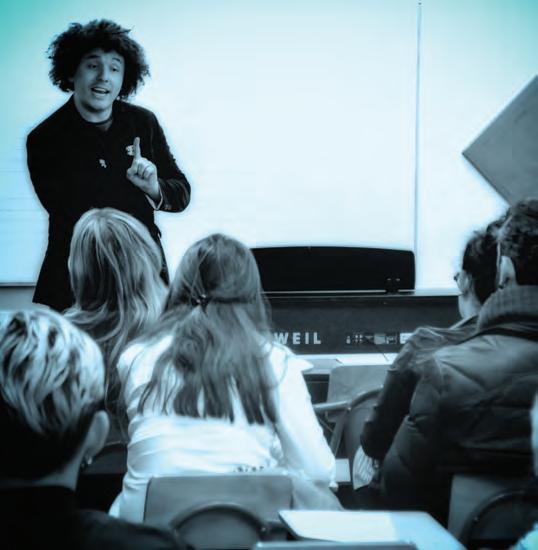
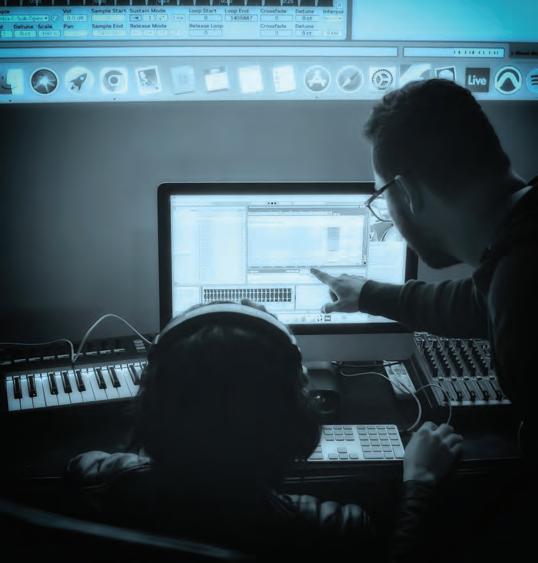
“I had to fight for what I was doing. And I believed in the school. I always believed in the school.”
ALEJANDRO CAJIAO
an ad on Facebook? He started asking around.
Advertising on Facebook wasn’t yet on many people’s radar. “I was probably one of the first companies in Colombia to put ads on Facebook,” Cajiao says. He put $5 a day on an ad, set up a webpage to link it to, and went on vacation to Cartagena, Colombia. When he came back, two weeks later, his email was full of requests for more information about the school. He upped the ad to $20 a day.
“I jumped from 40 or 50 students to almost 150,” he says. The following year, he bought the house next door to enlarge the school and accommodate its growing population. He also brought in four more investors, who remain co-owners today.
The next big leap forward for emmat came a few years later. Although Cajiao had been interested in being a Berklee partner since the founding of his school, his effort began picking up speed in 2012, when he asked Berklee to start doing auditions and interviews (a&i ) there. At the time, he says, “I didn’t even have enough money to offer [Berklee] a welcome cocktail.” So he went to the U.S. Embassy, which not only agreed to host a reception but also offered to hold it at the ambassador’s home. After much coordination between the embassy and Cajiao, they put together an event for 250 of the most influential figures in the Colombian music and cultural scenes. Later that year, Berklee began annual A&I visits.
A few years later, in 2015, emmat became an official academic partner. ANDRÉS FELIPE LEÓN SUÁREZ B.M. ’21 was among the first batch of students to take ad-

vantage of the agreement. León, a music production and engineering major who now works as a studio manager and producer in Bogotá’s booming music industry, started taking classes at emmat while he was still in high school, as part of their junior program. He had been involved in musical theater since he was 8 years old and says that “within that medium, I guess I started hearing about Berklee engineers, Berklee teachers… and then I started coming to the seminars [Berklee] did every year at emmat and started getting into Berklee’s world.”
He remembers emmat as being very familial: “It’s very close…you could talk to Alejandro [Cajiao] and he would give you feedback after a concert. Or he would go to a class and just be there watching you take an exam.” This level of individual attention was matched by a first-rate music education, he says. “The teachers are excellent here. And they have professional backgrounds and work with top-class artists.”
GODI GAVIRIA B.M. ’18 , another music and production engineering major who transferred emmat credits to Berklee, agrees. “ The professors were all super top-level, and very experienced…so they could be very personalized—all the Berklee methodology and whatnot. And I felt, when I got to Berklee, like I was musically very mature, very prepared,” he says. Today Gaviria works in Bogotá as a music producer and for the New York–based advertising agency Pickle Music Studios.
Both León and Gaviria say that emmat ’s partnership with Berklee was a principal reason they attended the school. In fact, Cajiao says, emmat ’s Berklee relationship is one of the most important ingredients
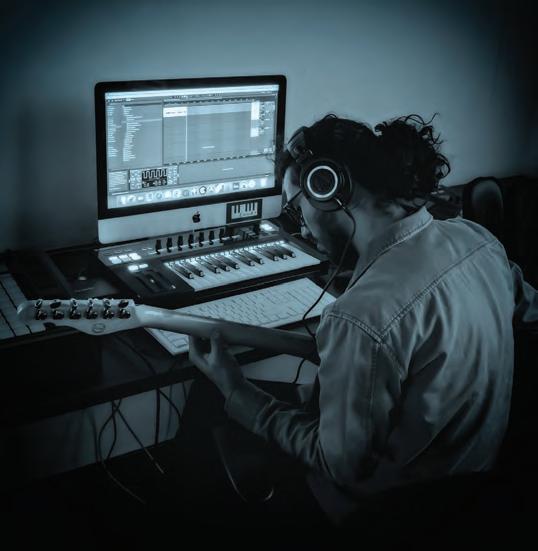
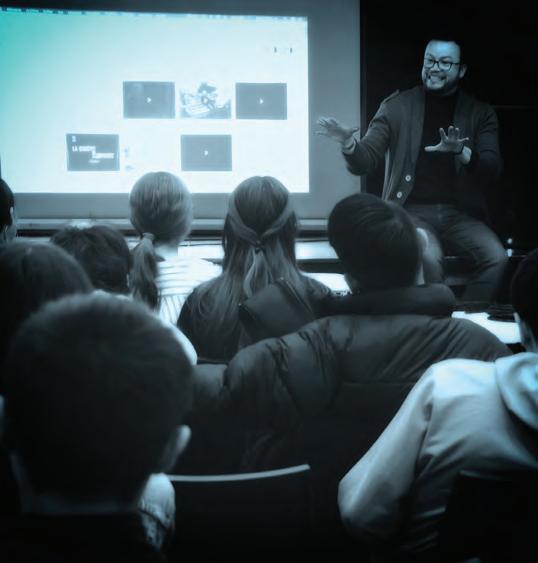
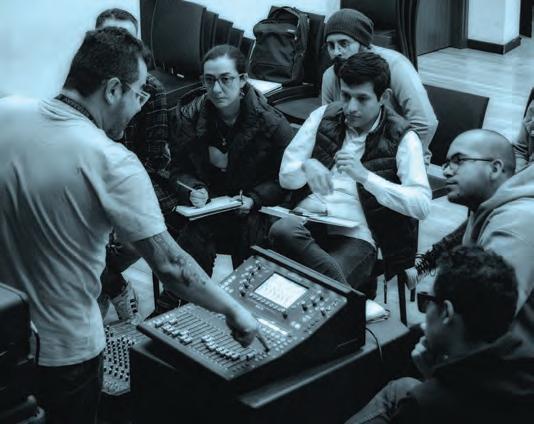
of its success.
“Berklee is very attractive for students who come…[considering that] they also have the option of going to local universities that have music programs, and they can graduate [from those] with a professional degree,” Valencia says. emmat offers twoyear diplomas, not degrees. “But some people leave those universities and come here because they say…what I study in six semesters [in a university], you cover them here in two years. It ’s very condensed and well-structured, and it’s Berklee material and Berklee methods.”
And though a severely devalued Colombian peso has made transferring to Berklee much harder for many emmat students, they can still study with Berklee books and techniques.
“You know how they say human beings were created in the image of God?” Cajiao asks. “emmat was created in the image of Berklee.”
When word got out that emmat had entered a partnership with Berklee, enrollment went up and both houses were packed. “So the only way was to move up,” Valencia says. emmat began work on a new home, in the Rio Negro neighborhood, and two years later moved into a six-story building that features nearly two dozen classrooms, a theater with seating for up to 170 people, a cafeteria, a spacious student lounge (and a rooftop lounge that affords a view of the city and the surrounding mountains), two ensemble spaces, two computer labs, several practice rooms, a resource center and shop, and two recording studios (one of which Cajiao is upgrading as part of a plan to get it Dol-
by Atmos–certified, a rarity for a music school in South America).
Roger Brown, Berklee’s president at the time, attended the building’s 2017 inauguration.
Today, that building is full, to the point where the school is planning to limit the number of students it accepts. About 470 students attend emmat, which has about 25 staff members and 55 teachers, nearly a quarter of whom are Berklee alumni. (Cajiao estimates that about 40 Berklee alumni have taught at the school over the years.) emmat offers a weekend junior program for high schoolers, daytime classes mainly for those just out of high school, and nighttime classes that tend to attract 30and 40-something professionals such as accountants and doctors. In addition to its contemporary music program, emmat offers film scoring and production programs, is designing a songwriting program, and is in the process of getting a government license for an entrepreneurship program. It also collaborates with Colsubsidio, a large employee-benefit company, on a jazz program in which emmat teachers provide instruction for 57 students.
What’s more, emmat boasts a robust online platform. Inspired, in part, by Berklee Online, emmat Online began in 2012, but initially sputtered out. It relaunced in 2015 but struggled to thrive because, Cajiao says, he didn’t understand the online market: students wanted guitar and voice lessons, not harmony instruction videos. It wasn’t until 2020 that emmat Online took off, and that was because of the pandemic.
After Colombia went into lockdown in the spring of 2020, em-
SCENES INSIDE EMMAT CLASSROOMS AND LABS (PREVIOUS PAGES).
mat began holding classes over Zoom and Google Classroom. But the teachers felt uncomfortable and the students weren’t happy. Half of them dropped out. Soon, the money dried up and Cajiao couldn’t pay his employees. The teachers threatened a strike, putting the school on the verge of collapse.
Cajiao, who had moved with his wife and children to the mountains outside Bogotá, asked the teachers not to give up while he waited for banks to give him credit. “I sent a message almost crying,” he says. He also sent his faculty and staff large bags of groceries, thanks to a connection with a food-distribution center, to make sure they at least had something to eat.
Auspiciously, it was then that the Colombian government announced it would award 29 million pesos (about $10,000 at the time) for the digital development of music courses. emmat won the award and used the cash to pay teachers and create an entirely new online experience. Teachers started making videos of their lessons two weeks in advance so the content could be up on YouTube in time for class. Over the course of six months, they shot more than 1,000 videos.
“It was tough work for everybody,” Cajiao says. “All the teachers had to learn how to do videos, to edit…they had to become YouTubers, learn how to teach in a different way.” And, as at Berklee, while classes such as ensembles and piano labs proved difficult to transfer online, others were more adaptable. Percussion teachers, for example, made videos on how to build instruments at home. “Grab a bucket, grab this table, grab these seeds from the rice in this can…[the teacher] made it work,” Valencia says.
“It was so cozy. My experience as a student, when I first got there, was like, ‘Oh my god, this is the best place in the world. I’m at home here.’”
CLAUDIA VALENCIA
The online push saved the school, and it permanently transformed how emmat educates its students. During the pandemic, Cajiao and his team learned about an educational concept from the 1990s called the “inverted classroom” in which students watch a lesson ahead of time and then spend class time going deeper into the concepts covered in the videos. Today, all students, including those on campus, are encouraged to follow this model.
Cajiao sees expansion of emmat Online as the school’s “most important growth platform for the future,” because it’s a way to reach all of Latin America without laying a single brick. He’s looking into other ways to fortify emmat, too, especially as he eyes stepping down from his role as director in the next five to 10 years. He’s exploring a transfer-agreement program with a local university so that students who may not be able to go to Berklee have another option for finishing their degrees. He’d also be open to bringing in another investor, such as a university.
Cajiao says he intends to retain part ownership of emmat after he retires, but to do so from a distance. He plans to move to the countryside and farm. After more than 20 years of growing a school, he wants to grow food. “We never thought 15 years ago we were going to go this far with this school, and grow so much,” he says. His labors—and that of all those who’ve cultivated the talent at emmat—are bearing fruit: this April the school got news that four of its students were offered full scholarships to Berklee. One of them is Abraham Granado.

KEY
STORY BY Rebecca Beyer


As live shows increasingly incorporate a synchronized audio-visual experience, playback engineers have stepped into the spotlight.



The dry ice YUSUKE SATO B.M. ’15 ordered never arrived, so he improvised. Using heat reflective blankets and some broken lantern sticks, he created a shelter of sorts to block the sun from the two laptops—one primary, one backup—he was running to power playback for JP Saxe at the Rise Festival, a two-day concert in the Mojave Desert.
The 2021 event was Sato’s first major role as a playback engineer, and Saxe was a big draw, with two scheduled performances (Saxe’s 2019 hit song “If the World Was Ending” had taken on a whole new meaning during the global covid pandemic).
Sato wasn’t taking any chances.
“I’ve played festivals in hot places,” Sato explains. “I’ve had laptops go down.”
But a dead laptop isn’t an option for a playback engineer, who controls everything from the clicks and cues musicians hear in their earpieces and the prerecorded studio sounds that play behind them to the synchronization of lights and other special effects.
“In my opinion, playback is the most stressful job in live entertainment,” says Sato, who has also worked as a session guitarist and in other live sound engineering roles. “If my laptop dies, there is no show.”
Increasingly, if there’s no playback engineer, there is no show. Today, audiences expect live performances to sound like the studio-produced songs on their Spotify playlists. Because playback engineers—and the ever-changing technology they use—make that possible, the role is in high demand.
“We can’t give the industry enough playback engineers,” says MICHAEL BIERYLO , chair of Berklee’s Electronic Production and Design Department.
LOUDON STEARNS , director of Berklee NYC’s Live Music Production and Design program, which launched in 2021, agrees, adding that playback engineers are integral to the success of live shows.
“Today, the language of the studio is really the language of the song,” Stearns says. “The effects that are used, the sounds that are used are just as important as the lyrics. Once you get to that point, it’s incumbent on us to present that in a live event.”
There are many sound engineering roles in music. At a live event, for instance, monitor engineers are responsible for getting the right sound to the right musicians, and front-of-house engi-
neers mix the sounds together for the audience. Playback engineers control all of that sound, and much, much more.
“It’s the brains of the show,” says JAYMZ HARDY-MARTIN III ’00 , who has done playback for Mary J. Blige and Ne-Yo, among others. “It’s the membrane. The lighting people are depending on me, the video people are depending on me, and, of course, the band is depending on me. That’s job security.”
Bierylo says the disconnect between studio sound and concert sound became noticeable as far back as the 1960s. But, until the advent of personal computers, playback wasn’t really possible on a broader scale. In the 1990s, Bierylo lugged around a Macintosh SE/30, piping in electronic sounds as part of performances with a band called Birdsongs of the Mesozoic.
Hardy-Martin remembers burning tracks to CDs that could then be loaded onto hard disk recorders; any edits to a show required that the whole process be started over.
“It was a superlong process,” he says. “Between shows, I got no sleep.”
Technology has driven most of the changes in playback engineering. The rise of digital audio workstations (DAWs) changed the field dramatically. Playback
GEORGE LINDSAY
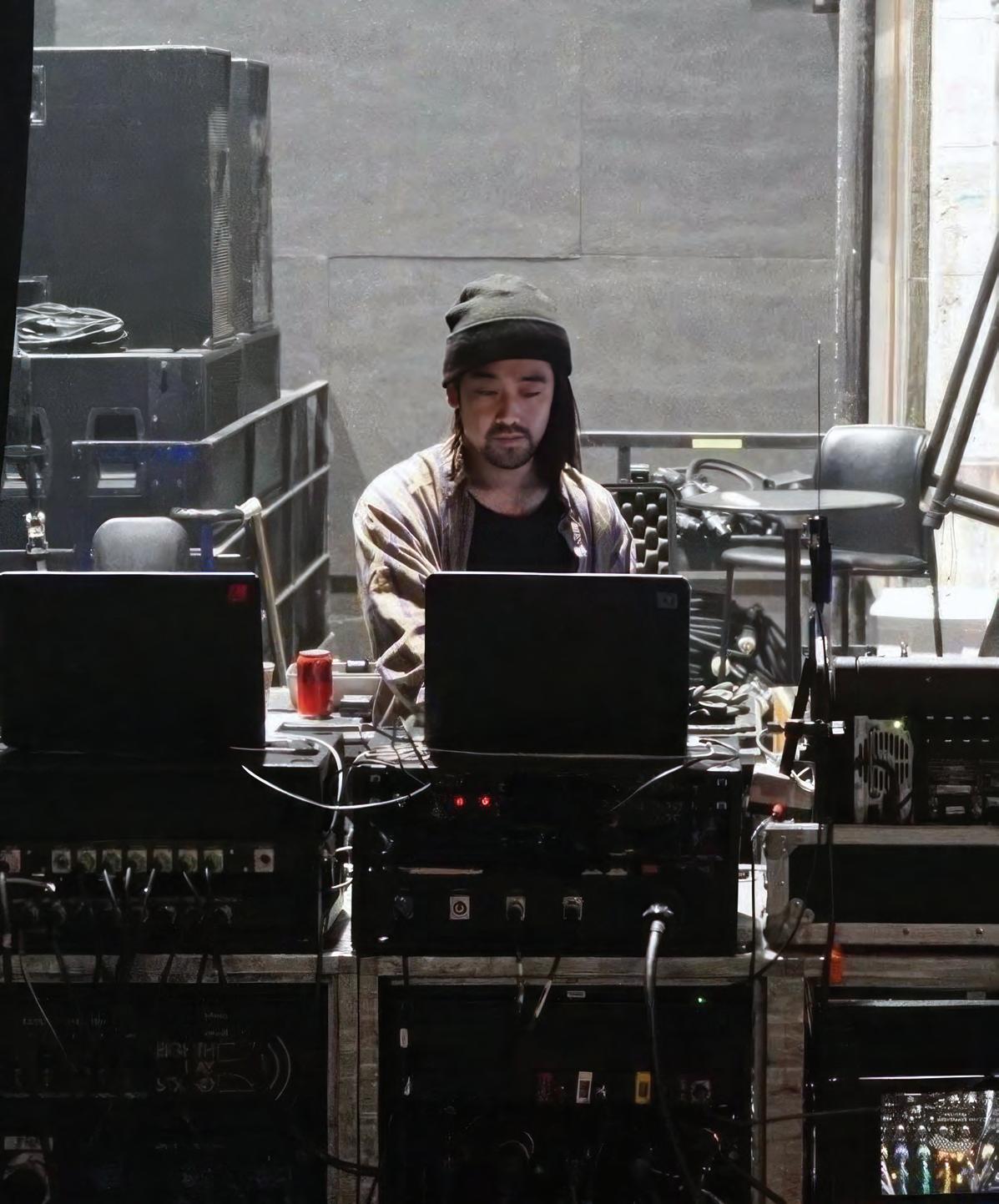

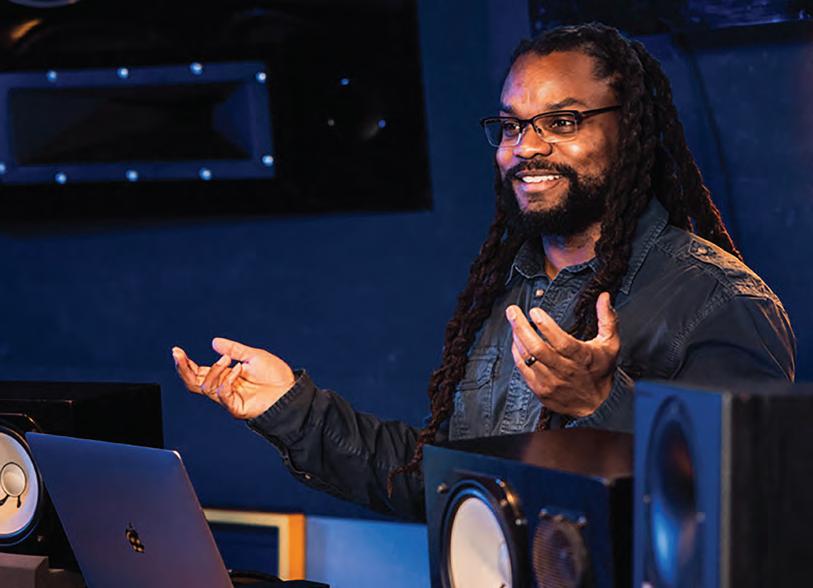
engineers can now use DAWs to curate entire events from start to finish on rigs they often customize for their own—and their musicians’—comfort. One of the most popular DAWs is Ableton Live, first released in 2001. The software has several versions and is now on its 11th edition.
“Ableton Live was a gamechanger,” Bierylo says.
Early playback work—and even some playback today for musicians who are just starting out or have a straightforward live show—was pretty simple, usually handled by a drummer or keyboard player.
“It used to be you were just the spacebar guy,” says Hardy-Martin with a laugh. “You hit the spacebar to start the track and to stop the track.”
But modern DAWs allow playback engineers to become musicians in the show. They can jump from place to place in a set at an artist’s request and make last-minute changes to arrangements. DANIEL “VAGO” GALINDO B.M. ’14 once quickly recorded the name of a couple who was getting engaged and dropped the audio file into the track for the lead singer, who was then able to announce the happy occasion.
“That was very stressful,” he remembers.
Sato, who has been touring with corook ( CORINNE SAVAGE
B.M. ’17) since last year, says playback engineers help translate ideas into reality.
“I love being able to take an artist’s vision and not just create it but blow them away,” he says. “There’s no limit.”
Sato, who had majored in professional music, took a Berklee Online course on synchronization and began teaching himself Ableton Live during the pandemic because he thought p layback engineering skills would make him a better music director. Today, he does playback work on his own and for Electronic Creatives, a company founded by Laura Escudé, a prominent figure in playback engineering.
The idea of playback engineering as a skill that can be cultivated and taught is a relatively new one, Bierylo says, adding that Escudé has been at the leading edge of that trend.
“She trains people to go out and do these shows,” he says. “She has a whole educational program.”
For years, students at Berklee have had the opportunity to learn the basics of playback engineering, including in a course dedicated specifically to the role
and in preparation for Berklee’s major live events such as commencement, Singers Showcase, and Great American Songbook.
But students were looking for more, says Stearns. That’s why he helped design Berklee NYC’s one-year Master of Arts in Creative Media and Technology program, which offers three specializations. The one Stearns directs is called Live Music Production and Design.
“We want to teach the way shows are actually being put on now,” Stearns says. “And the way shows work now is you make your music in a studio, you use all the tricks you want, and then you hire a playback engineer to figure out a way to replicate that on stage. We created this program with the assumption that there will always be a computer at live events. That’s the paradigm.”
The Live Music Production and Design program brings together about 20 students who rotate through all the roles required to put on a live show, including playback engineers, front-ofhouse and monitor engineers, lighting designers, camera operators, technical directors, video operators, and content creators, among others. Every Friday, the cohort puts on a live show together.
JULIANNE MERRILL M.A. ’22 , a pianist and music director who
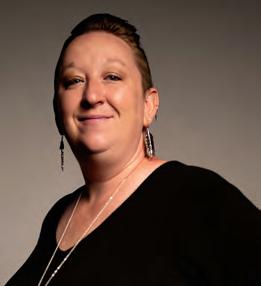
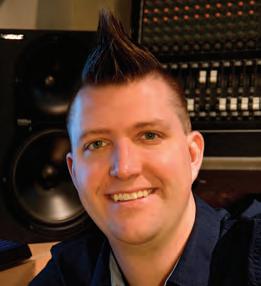
has worked mostly in musical theater, was part of the first group of students in the Berklee NYC program. With her background in keyboard programming—she worked on the Tony Award–winning musical A Strange Loop while she was in the Berklee NYC program—she found playback engineering to be a good match for her skills and talents.
“My interest has always been the integration of technology and music in the live experience,” she says. “My creativity comes from problem-solving and execution.”
After graduating from the program, Merrill, who works under the professional name PatchMaster Productions, was hired to do playback for the Broadway musical Some Like It Hot. In that role, she used a proprietary software she and Stearns developed that makes it easier for conductors to control playback tracks from the pit of a Broadway show. Merrill is also piloting the software, called Go Button, as the playback engineer for a new off-Broadway show called White Girl in Danger
Because musical theater prioritizes the role of live musicians, playback engineers on Broadway don’t carry the weight of an entire show on their shoulders: Unlike Sato in the desert with JP Saxe, if Merrill’s comput-
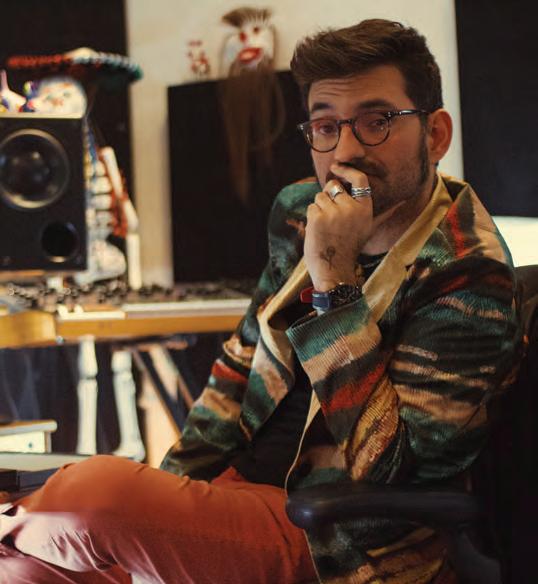
ers go down, the show will go on.
“Some Like It Hot has a 17-person orchestra,” she explains. “If Ableton goes down, it’s not like those 17 other people aren’t going to be able to play. But playback does make the show that much more sparkly.”
Playback engineering—like many roles in a live performance—requires a certain temperament and an ability to perform under pressure.
“It’s nerve-racking,” Stearns says with a laugh. “I hate it.”
Others thrive in that environment.
“Every single show, no matter how small or big, I get super anxious and nervous, but I love it; I can’t wait,” says Galindo, who recently wrapped a 10-day residency with Elvis Costello and is creating playback tracks for Juanes to use on tour with songs from his album Origen.
“It’s a lot of stress,” Merrill agrees. But, she adds, the result—a seamless performance— is worth it.
”The biggest compliment an audience member could give me would be that they have no idea which timpani are mine and which are real, which harp is mine, and which is real,” she says.
OPPOSITE PAGE: JAYMZ HARDY-MARTIN III. THIS PAGE, CLOCKWISE FROM UPPER LEFT: JULIANNE MERRILL, DANIEL “VAGO” GALINDO, AND LOUDON STEARNS.
For her contracts with Some Like It Hot and White Girl in Danger, Merrill negotiated for— and received—the official title of playback engineer (past playback personnel on Broadway have been listed as “Ableton programmers”). This was strategic on her part—an effort to stake her name to a skill set that is now ubiquitous, not just in concerts but in live events of any kind.
“All the genres are melding,” Merrill says. “More stadium-style shows are coming to Broadway; more Broadway shows are being filmed live for television; movies are being made of Broadway shows. It made sense to use the same nomenclature so the role would be a constant.”
On the concert side as well, opportunities abound. Since Sato added playback engineering to his resume, he’s been busier than ever. When he was working primarily as a session guitarist, “I was not that booked,” he says.
Last year, he spent all but four weeks on tour, mostly as a playback engineer. In addition to corook and JP Saxe, he’s worked with Oh Wonder and Walk the Moon.
“I’m already booked for the summer, and I have three tour offers for the fall,” he says. “Learning playback is the best thing I’ve ever done for myself, 100 percent.”
ASSOCIATE PROFESSOR FRANCISCO NOYA CONDUCTS THE BOSTON CIVIC SYMPHONY ORCHESTRA AT NEW ENGLAND CONSERVATORY’S JORDAN HALL.
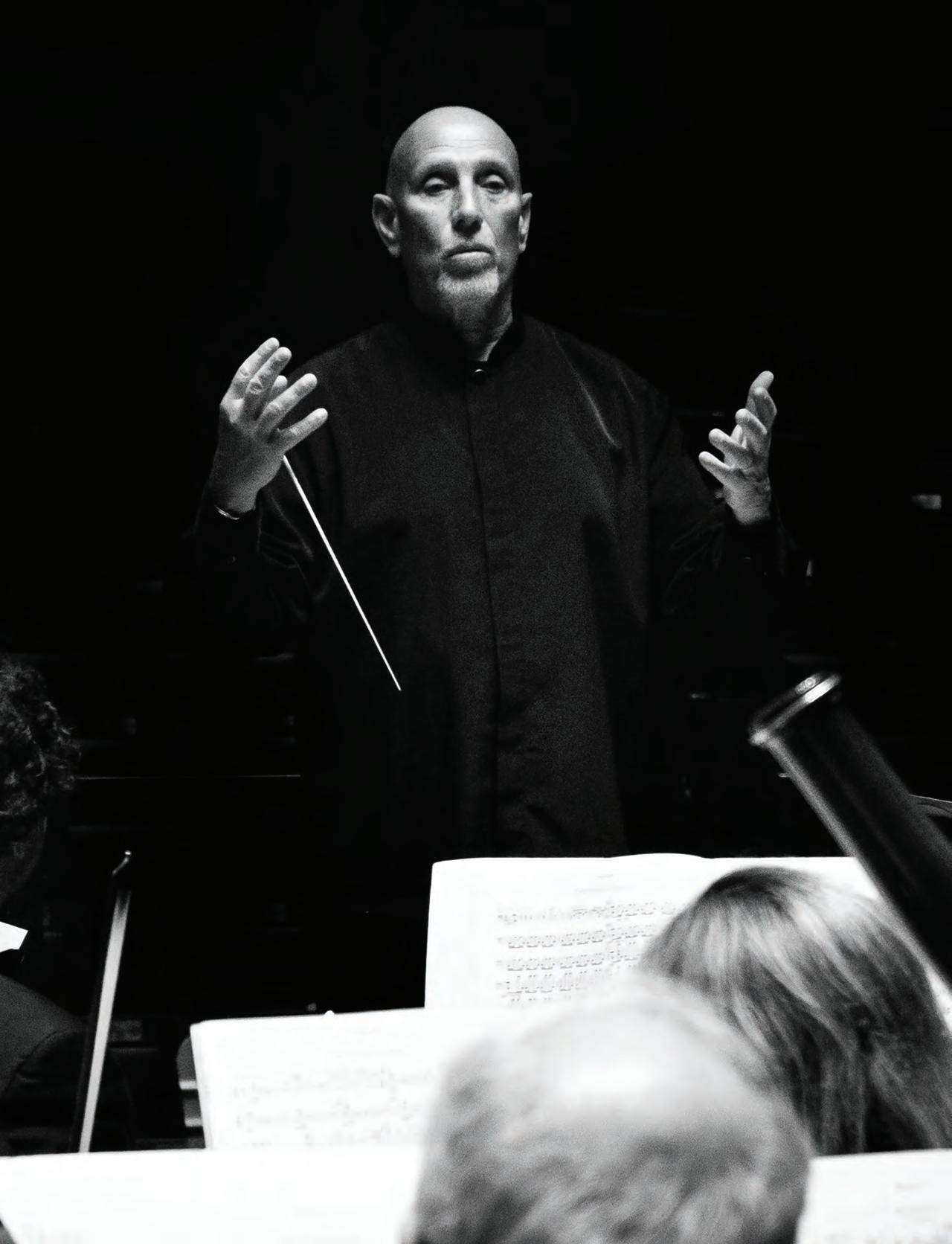
Classical guitarist Berta Rojas discusses a banner year of awards, honors, and the return of her irreplaceable stolen instrument.
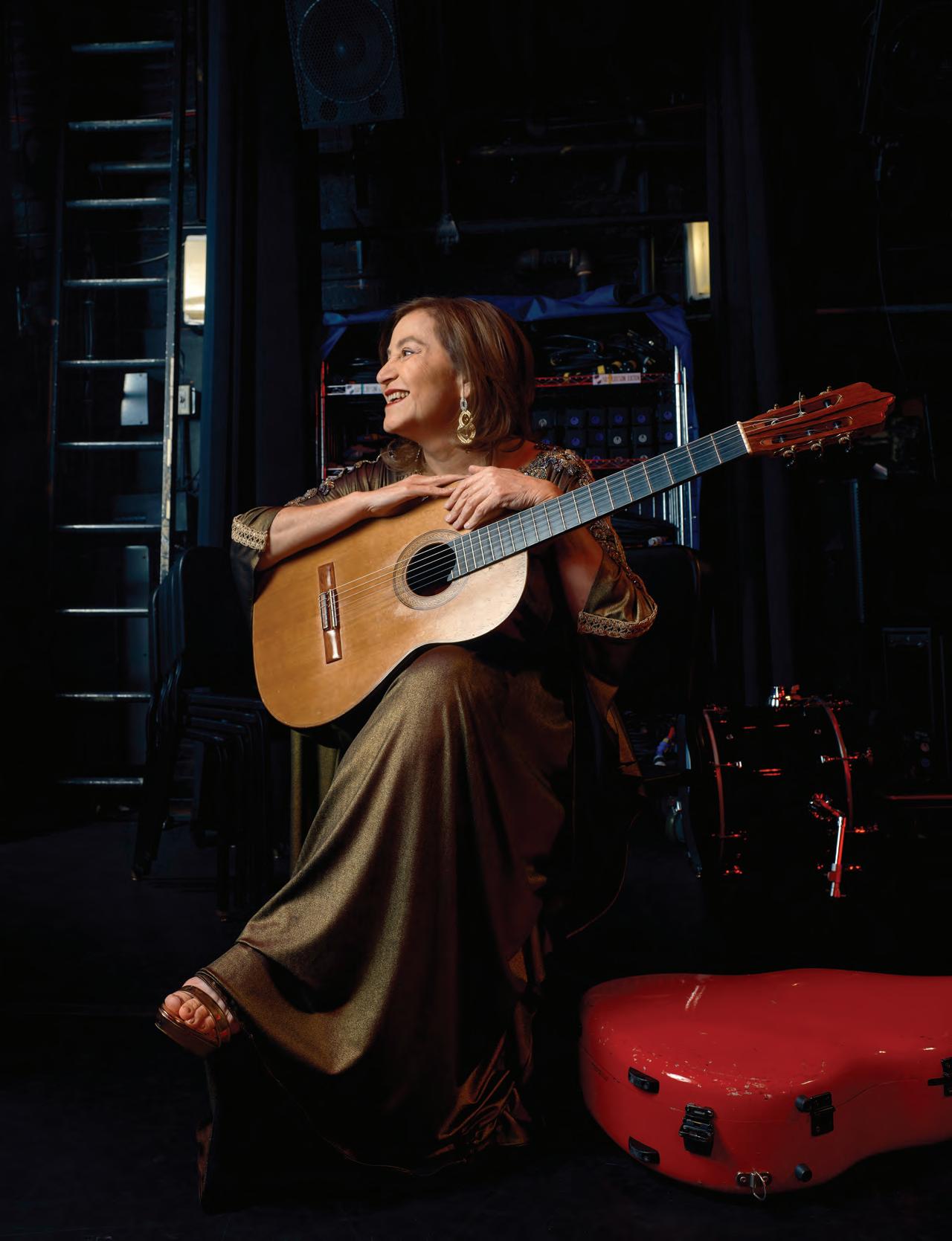
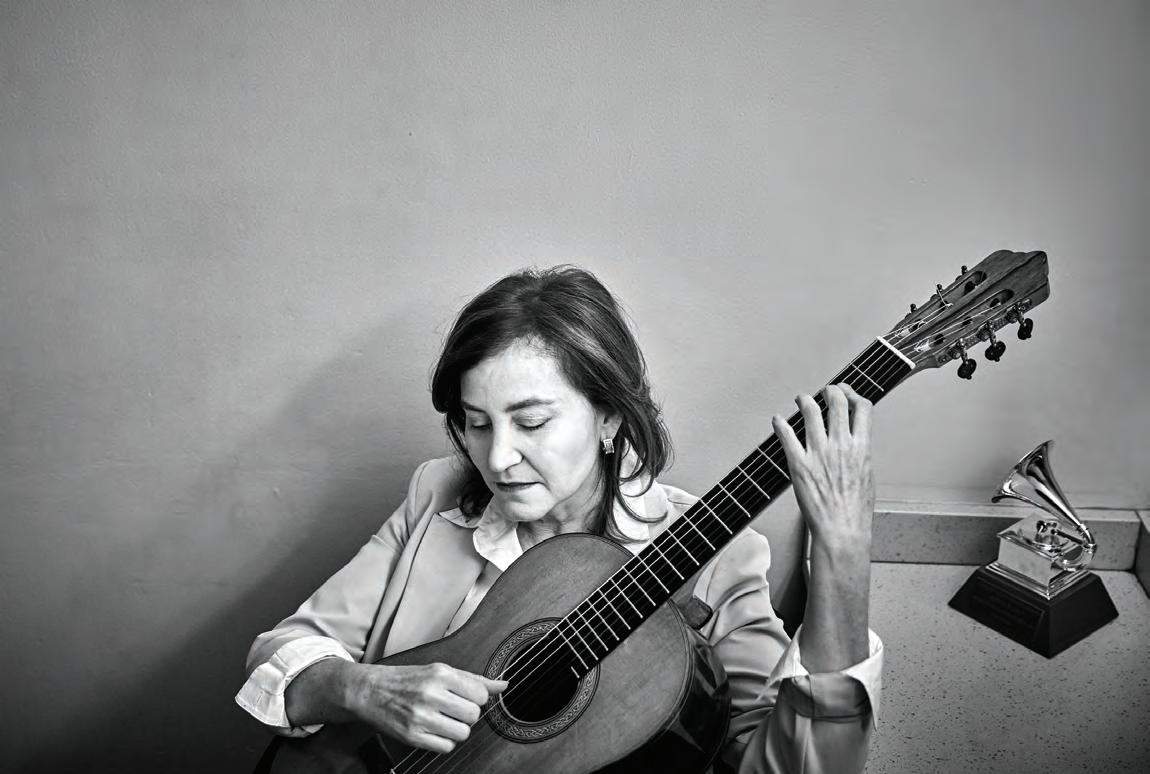
“The guitar is my instrument and there is nothing I do with it that is not deeply felt.”
Since completing her latest album in 2022, guitar professor BERTA ROJAS has experienced both career highs and uncertainty. Her album, Legado (meaning “Legacy” in Spanish), is a tribute to guitarists and composers Ida Presti (France, 1924–1967) and Maria Luisa Anido (Argentina, 1907–1996). The album’s dozen tracks include works penned by or dedicated to Presti and Anido, both pathfinders for women in the classical guitar field.
“Legado was a powerful way for me to share the story of women who—in spite of difficulties they confronted in their day— went ahead with what they felt called to do and had fantastic careers,” says Rojas. “I wondered why these and other women of the guitar were not more revered and wanted to start a conversation about them.”
Rojas did indeed begin the conversation by making an album that ultimately netted two Latin Grammy Awards. (Notably, fellow
Berklee professor RANDY ROOS served as the album’s recording engineer.) Legado was named Best Classical Album for 2022 and “Chacarera,” a movement from the suite Anido’s Portrait, which Rojas commissioned from Sergio Assad, won the award for Best Classical Contemporary Composition.
The Latin Grammy Awards ceremony in November was a triumph for Rojas, ending a year that earlier looked a bit bleak after her irreplaceable Michael O’Leary guitar, valued at around $20,000, was stolen from a car prior to her April 2022 concert in Cleveland, Ohio. The night before flying to Cleveland, Rojas had felt impressed to record the final track of Legado in her home studio despite fatigue after teaching all day. After the guitar was taken, Rojas felt at least some consolation knowing all tracks on the album featured the same instrument. But losing her constant musical companion of more than 14 years was devastating. Rojas had publicly stated that if she got the guitar back, no questions would be asked, and after two agonizing months it was unexpectedly and fortuitously returned to her.
The Latin Grammy was a boost both ca-
reer-wise and personally for Rojas. “Feeling embraced by the academy and my colleagues who have sold millions of records, and their embrace of this story about these women, was very rewarding for me,” she says.
Becoming the first person from her native Paraguay to earn a Latin Grammy was cause for celebration there. On March 17, when she returned home, Paraguay’s minister of Foreign Affairs bestowed upon her the Gran Cruz, a high honor recognizing those who have made significant contributions to Paraguay’s cultural heritage. She will return later this year for a series of concerts.
Rojas feels her life has been blessed in multiple ways, including the dialectic she enjoys with her students and faculty peers. “I am living in really happy and creative times at Berklee,” she shares. “Teaching here since 2017 has given me a chance to learn about jazz, and crossing the paths of classical and jazz has brought a lot to my music. The guitar is my instrument and there is nothing I do with it that is not deeply felt. All this has happened as a result of my sincere love for music.”
BERKLEE BOSTON
5 Assistant Professor VIVIENNE AERTS’ new album, Typuhthâng, was released March 3 for Women’s History Month. Featuring 100 female musicians, and made in collaboration with Original Beans Chocolate, Typuhthâng aims to empower the female cacao farmers of Virunga State Park in the Democratic Republic of the Congo. Visit vivienne aerts.nl.

ESIN AYDINGOZ, assistant chair of the Screen Scoring Department, was an arranger on the Netflix series Wednesday and wrote music for Netflix’s series Princess Power. She was also a fellow at the Los Angeles Film Conducting Intensive and was nominated for a Society of Composers & Lyricists’ award.
Professor JOHN BABOIAN performed Christmas and holiday concerts with the Boston Pops’ traveling orchestra throughout New England in December.
Associate Professor SERGIO BELLOTTI recorded percussion on the latest Pat Petrillo Big Rhythm Band album, Power Station Sessions, which also features NILE RODGERS ’18H and Associate Pro-
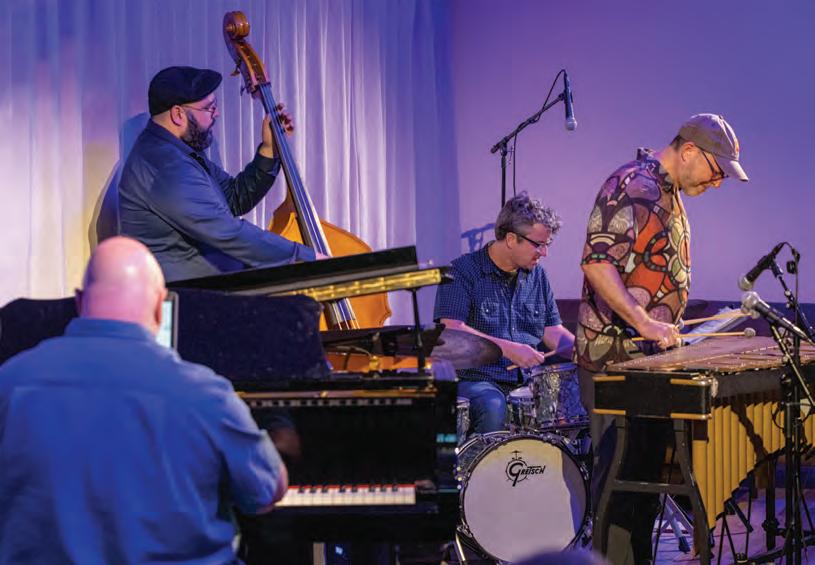
in Massachusetts, around the country, and internationally.
RHODA BERNARD, assistant chair of the Music Education Department, is giving in-person and online professional development workshops, consultations, and minicourses on accessible arts education pedagogy at numerous school districts, arts organizations, and conferences
Professor FREDDIE BRYANT will release a song cycle of 16 movements, Upper West Side Love Story, this summer. The album was commissioned by a CMA Foundation grant. Bryant wrote its music and lyrics, which were performed three times by an allstar nonet in 2022. Visit upperwestsidelovestory.com.
5 Assistant Professor CRISTI CATT toured with Tapestry in Milwaukee, WI; Kalamazoo, FL; Scripps College in Claremont, CA; and in the greater Boston area. The group focused on women-identifying composers from Juana Inés de la Cruz to Ella Jenkins, Lili Boulanger to Florence Price, to composers of today. Visit tapestryboston.com.
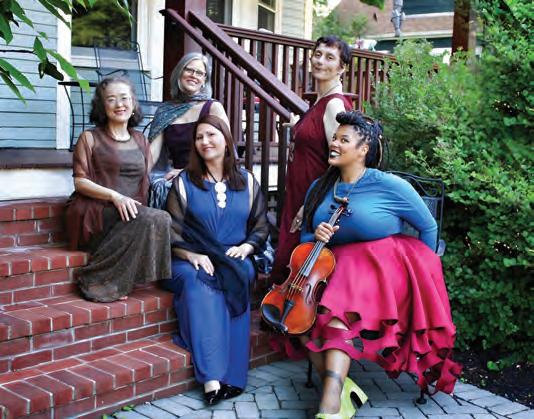
Professor RICH
and Associate Professor MARK SHILANSKY have a new album, Green Sky. They performed it at Scullers Jazz Club in February with collaborators Professor PETER KENAGY, Associate Professor NICK GRONDIN, and GREG TORO ’06.
Assistant Professor DAVIDE CERRETA is using his platform as a singer, pianist, composer, and educator to bring awareness to pollution, global warming, and climate change through his original compositions and local activism. Cerreta will be performing coast to coast this spring, collaborating with musicians based in New York and California.
Music from Associate Professor ADY COHEN’s score for the animated feature film The Legend of King Solomon was performed in January by the Israel Philharmonic Orchestra, with the Tel Aviv Collegium Singers, at a sold-out concert in the largest hall for music in Tel Aviv.
Professor BETH DENISCH’s composition “Star V” for primary duo (Sarah Bob, piano; Aaron Trant, percussion) was commissioned by the New Gallery Concert Series and premiered in April at Longy School of Music. In addi-
5 Associate Professor PATRICE JÉGOU-OYELESE was selected as a spring 2023 mentor by the Recording Academy for the GRAMMY U program. This is her fourth semester serving as a mentor.

tion to traditional notation, “Star V” uses various levels of improvisation and aleatoric techniques. Visit newgalleryconcertseries. org/begin-anywhere.
Professor LASZLO GARDONY’s new trio album, Close Connection (Sunnyside Records), received a four-star review in DownBeat magazine. His trio includes Associate Professor JOHN LOCKWOOD and YORON ISRAEL, chair of the Percussion Department. They celebrated the album with a sold-out concert at the Birdland Theater in New York in December.
Professor JERRY GATES has been busy writing chamber orchestra works for the Boston group the Orchestra on the Hill. He also wrote string arrangements for producer Hassan El Shafei and for Assistant Professor OLIVIA COLLELLMIR as well as orchestral treatments for the jazz quartet Poetic Jazz.
Professor BRUCE GERTZ was a finalist in the 2022 USA Songwriting Competition for his composition “Snowfall.” He collaborated with fellow bassist Claus Freudenstein in Germany to record and publish it on streaming platforms. He’s also a finalist for a 19th International Acoustic Music Awards for his song “For Burt.”
Assistant Professor ANNE H. GOLDBERG-BALDWIN’s solo piano album, Permutations, was released on Ravello Records, through PARMA Recordings, in February and is available on all major platforms.
Assistant Professor BENNY GROTTO produced, engineered, and mixed a full-length record for Boston-based Ghanaian instrumental group Kotoko Brass, and is producing a concept album project by progressive metal band Questing
Beast, featuring Warbringer’s Chase Bryant on bass.
Professor JON HAZILLA offers inspiration from the Covid lockdown with his fourth book, Haiku—Images and Words. In it, he imports the outside world inside using photomontage and haiku.
Professor MICHAEL HEYMAN composed and performed the sound poetry/throat-singing piece “A Conversation with Spákonufell” in Skagaströnd, Iceland, while on a NES Artist Residency.
Professor GEORGE HOWARD did a TEDx talk this winter. Visit youtu. be/x_kjKZDH4J4.
Associate Professor HEY RIM JEON’s album Groovitude, featuring several Berklee faculty members, was released in October. It was in the top 20 albums on the JazzWeek Radio Chart for several consecutive weeks. She had a sold-out album release
5 ANNE PECKHAM, chair of the Voice Department, released a new book, Vocal Studies for the Contemporary Singer, the third in her Contemporary Singer series (Berklee Press). Her publications have been adopted by vocal programs around the world and translated into several languages.
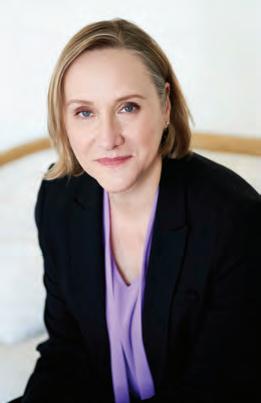

1 Professor LAUREN PASSARELLI performed and recorded a new full-length release at home, Just Like Earth. It features Kate Chadbourne, Mike Bishop, and Mary Douyard.
concert at Scullers Jazz Club in February. Visit heyrimjeon.com.
Associate Professor PETER JONATAN released an orchestral arrangement of the Christmas classic “It’s the Most Wonderful Time of the Year.” He arranged, orchestrated, produced, and performed the song together with the Budapest Scoring Orchestra. The single is available on all streaming platforms. Visit peterjonatan.com.
Professor SHEILA KATZ is teaching meditation online, as well as in person in Mexico, focusing on weekly sessions, weeklong silent retreats, and one-on-one support with her yearlong series Deepening Concentration Practice Intensive. She also teaches Jewish meditation, holds women’s meditation retreats, and offers heart-opening chant practices.
Professor TEODROS KIROS wrote Rationality of the Human Heart, his 21st book, as well as a series of articles on Ethiopia in Aiga Forum. He also has an interview with Noam Chomsky published in African Ascent International. His novel A Passionate Man is circulating among publishers.
Assistant Professor CLAIRE MARIE LIM was featured in an article on the music technology website Create Digital Music. The article, in which Lim spoke about vocals in live electronic performance, covered her solo artist project, dolltr!ck, as well as the material she teaches under her
BY SUSAN ROGERS
In theory, theory and practice are the same. In practice, they are not.
—albert einstein
In theory, crafting a record must involve some attention paid to the record’s emotional arc. This point is frequently emphasized in Berklee’s music production and engineering classes. It seems logical that record makers should, after all, consider how their work might make someone feel. Yet the perspective is faulty. No amount of craft can inject emotion into a record because, well, records don’t have feelings.
A large body of evidence from behavioral, physiological, and neuroimaging studies shows that experiencing an emotional response while record-listening is contingent on a number of factors: internal, such as attention, motive, and preferences; and external, such as context and cultural norms. To complicate matters, time has a way of reweighting each factor as our lives and our world change.
Our music-loving brains begin forming in utero. By the time we reach adulthood, the neural assemblies tasked with processing melody, lyrics, rhythm, timbre, and music’s aesthetic features such as novelty, abstraction, and authenticity, have conspired with the dopaminergic reward system to shape our unique listener profile. Your profile is similar to your taste in food and fashion; you know what you like because—through trial, success, and error—you have discovered what works for you.
Music’s primary job is to serve some purpose for a listener. Because we have a variety of needs, we typically enjoy a variety of music genres. Some of your favorite records are cherished for their lyrics, others for their rhythms or melodic changes. Some cause you to feel nostalgic while others launch
your dreams of the future. No record maker can build in such responses or predict what listeners will consider to be the perfect part or performance gesture. What record makers can do is capitalize on ancient brain circuitry that ignites the sympathetic nervous system: the chill response.
When Whitney Houston hits a high note with an extraordinary dose of power to spare, or when Jonny Greenwood plunges into a guitar solo from the melodic high dive, the acoustic features of these sounds can trigger goosebumps. Also known by its technical term—piloerection—the chill response has a social origin. Musical events that cause chills are often those that parallel the sound of a child or animal in distress.
Like many primates, we humans are quick to recognize the contact calls of our own offspring, and we can ignore nonemergency calls that don’t concern us. Distress calls, on the other hand, are a special class of signal,
the kind that generates an innate response. This privileged signal causes our auditory, motor, and emotion systems to alert the entire nervous system that something needs immediate attention. Distress-like sounds in music can trigger a chill.
In theory and in practice, composers and record makers employ unexpected chord changes, arousing timbres, and emblems of emotional contagion to guide a listener’s ear toward those musical treats sprinkled throughout the composition. Yet the moment a record, as an acoustic pressure wave, excites the listener’s eardrums, it elicits a unique one-of-a-kind mental event. Examining the emotional arcs of listeners is far more complicated than the theoretical parsing of a record’s emotional arc. Getting in touch with our own listener profiles and teaching students how to do the same helps us align both the theory and the practice of music.
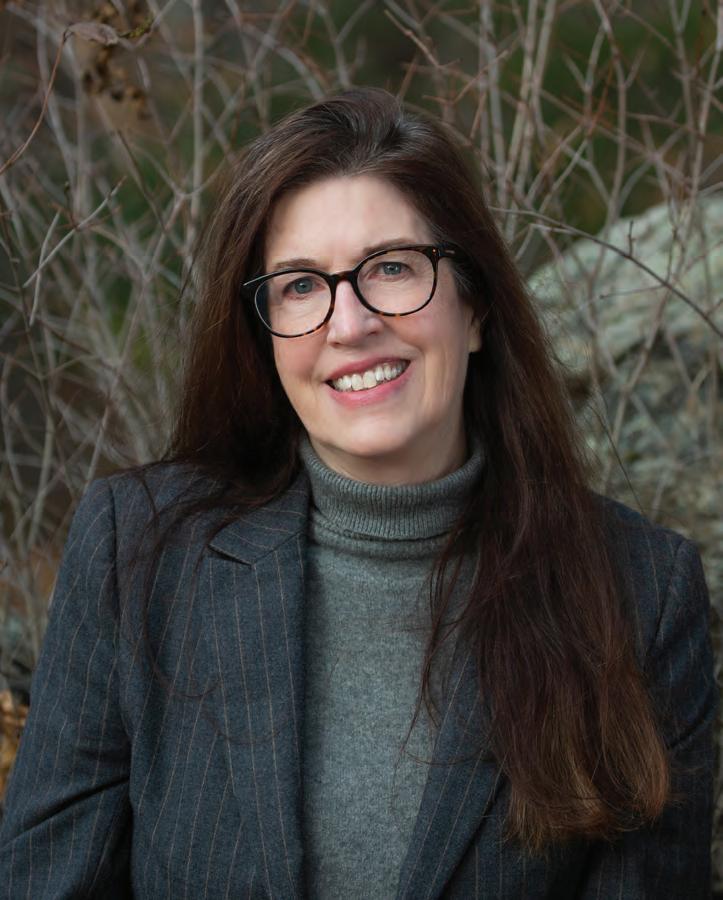
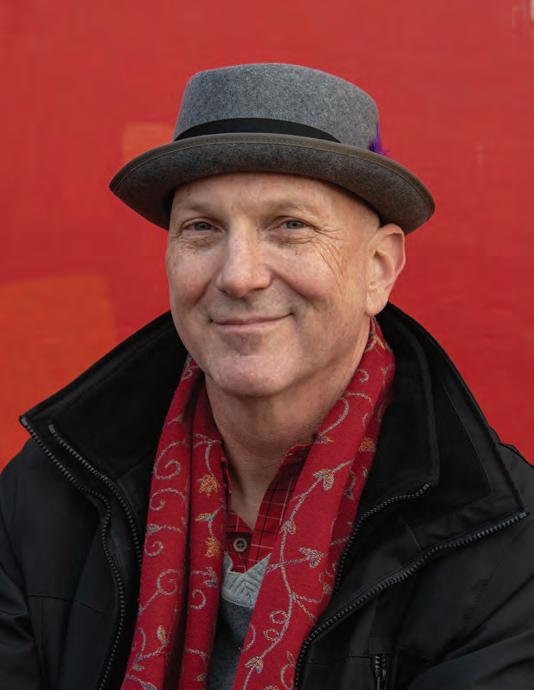
7 Professor TIM RAY finished his tenure as pianist and music director for the legendary Tony Bennett with the singer’s retirement last year. This spring, Ray released Fire & Rain, his third album on the Whaling City Sound label, and performed at Scullers Jazz Club to celebrate this event.
educational moniker, the smol prof.
MICHAEL C. MASON, inaugural chair of the Africana Studies Department, gave a presentation, “A Few Best Practices in Antiracism Education,” at Arcadia University. He also served on the committee to welcome Taneshia Nash Laird as inaugural CEO and president of the Greater Roxbury Arts and Cultural Center.
Assistant Professor YOSHIE NA-
5 Professor STEVEN KOWALCZYK SANTORO mixed and mastered a studio recording with the famed Turtle Island Quartet. The project is a song cycle for voice and string quartet on the subject of mortality, and consists of contemporary pieces in multiple genres with sections of improvisation. It is tentatively titled Here. Gone.
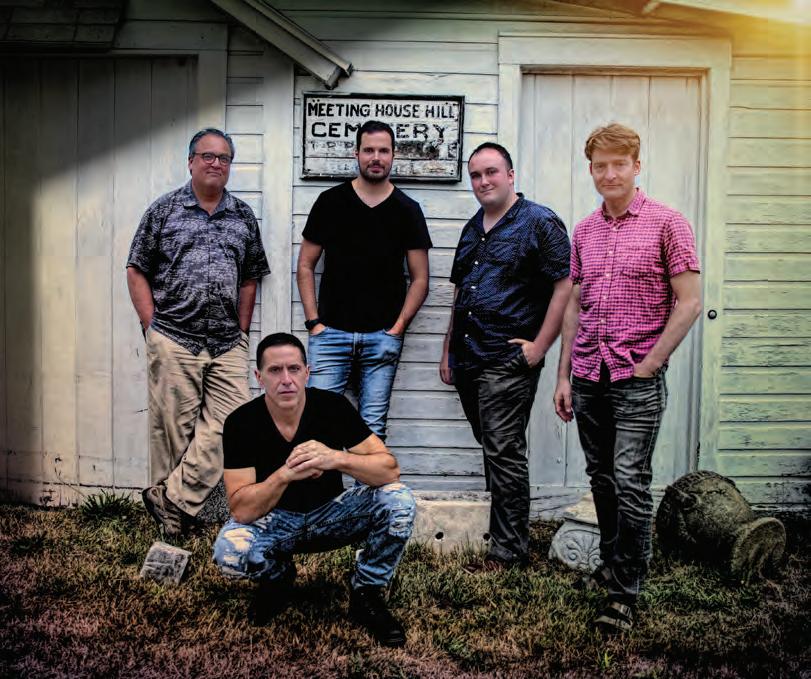
KAYAMA released an cappella arrangement for “Ichigetsu Ichijitsu” that was covered by Japanese media and Reuters. In January, she presented an a cappella workshop in Tokyo using this song as well as her arrangement for “Don’t Sit Under the Apple Tree.”
Associate Professor FRANCISCO NOYA conducted the Boston Symphony Orchestra’s Youth and Family Concerts this spring. Visit bso.org/events/bso-youth-andfamily-concerts.
Professor ALISON PLANTE scored the documentary Turkey Town, which premiered on PBS on Thanksgiving. Visit wgbh.org/ turkey-town.
Professor MIMI RABSON wrote a new piece for the Jazz Composers Alliance Orchestra. “Construction” was inspired by the Center for Computing & Data Sciences, known as the Jenga building, on the Boston University campus. The piece was
5 WALTER SMITH III, chair of the Woodwind Department, released an album, Return to Casual (Blue Note Records), in April. Visit bluenote.com/artist/waltersmith-iii. He also performed with his band for a week this winter at the Village Vanguard in New York City.
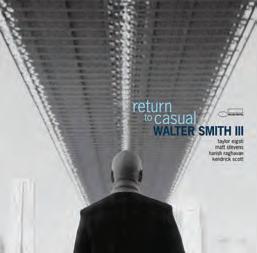
Intervals
BY DR. DARLA S. HANLEY

Have you ever observed a child respond to a compelling musical example? If you really pay attention in these moments you will often see a natural engagement filled with movement and joy—and a full presence driven by freedom and a sense of wonder. Further, you will see (and hear) their creative expression and original voice unfold. It’s magical.
In music class, children listen, imitate, perform, and create as they explore the musical world around them through sounds and play. They respond to learning experiences led by teachers who make decisions regarding the curriculum, instructional mo -
dalities, and musical examples. These teachers shape the education offered to students and, in turn, shape what students know and are able to do independently. This means it is essential for music teachers—especially at the elementary level—to know and bring a variety of high-quality musical examples, across styles and genres, into their work.
Today, the world of music is literally in our hands. With technological advances like streaming audio, anyone is able to listen to a variety of music at any time of day. Yet, after years of work with Spotify and with classroom teachers in the United States, a pilot group I led learned that one of the biggest
p Identify tracks that make you smile—children will mirror your response —especially when it makes your heart sing.
p Get organized and curate playlists.
p Let the music tell you how to use it in an educational context (responding, creating, performing, critical listening).
p Use tracks to engage children to arrange, compose, connect, describe, improvise, imitate, lead, listen, move, play, read, sing, and write.
challenges teachers face when using streaming audio to enhance instruction is identifying which examples to use.
One way to select streaming audio tracks and organize them for use with students is to create curated playlists based on musical styles, artists, themes, or historical periods. If we take jazz, for example, we could create a playlist that represents various types of jazz (e.g., big band, swing, bebop, free), one that focuses on iconic artists from yesterday (e.g., Louis Armstrong, DAVE BRUBECK ’09H , Ella Fitzgerald), or one featuring artists of today (e.g., Victor Wooten, Hiromi, Bria Skonberg). We could also curate jazz playlists to promote creative movement (e.g., “Thunderwalk” by GEORGE BENSON ’90H , “Hay Burner” by COUNT BASIE ’74H ), instrument play (e.g., “Pick Yourself Up” by DIANNE REEVES ’03H , “Cool Struttin’” by Sonny Clark), singing (e.g., “C Jam Blues” by DUKE ELLINGTON ’71H ), and/or dramatic play (e.g., “Everybody Want to Be a Cat” by Roy Hargrove). These well-crafted playlists can then be used to promote authentic engagement, creativity development, and artistic performance as the recorded tracks anchor the children’s musical experiences.
Finally, when using the playlist, lead children to listen and respond by making music, expressing preferences with rationales, sharing musical decisions, offering original ideas, and applying their developing skills and knowledge. Children will rarely disappoint you when the music is compelling and the opportunity to be creative is welcoming and well-structured. Remember, we’re never too young to enjoy and experience music… it’s elementary!
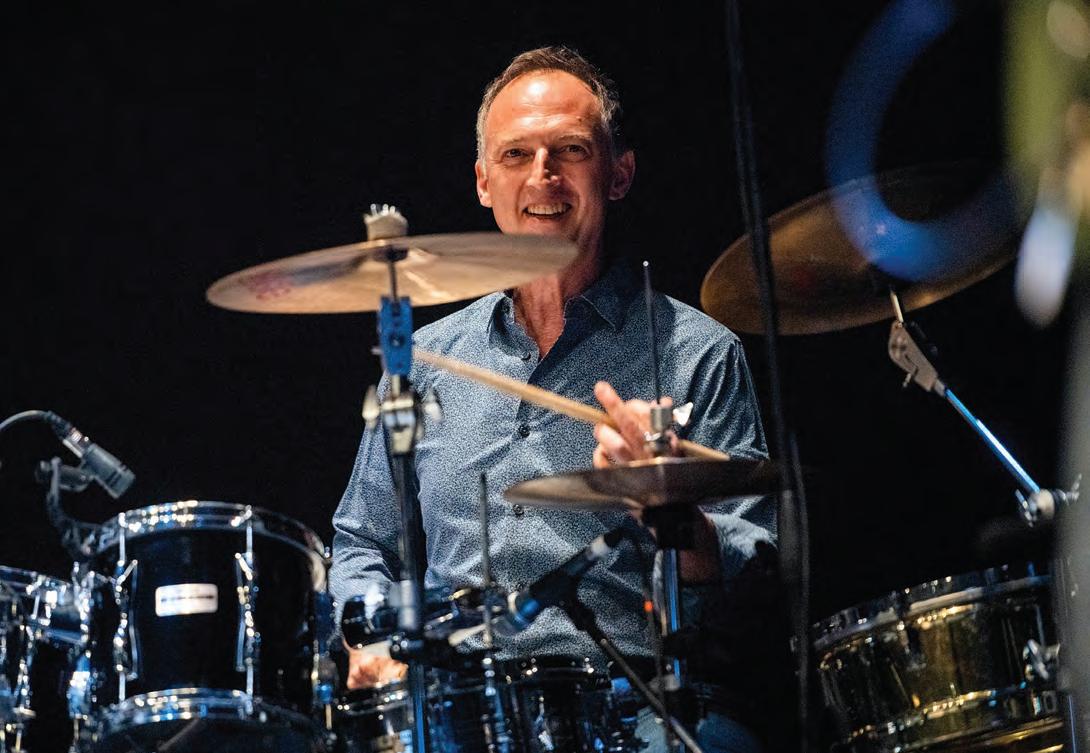
1 Professor MARK WALKER is recording his original big band suite, Spirit in Rhythm, and presenting original projects at several music venues. He also joined Arturo Sandoval’s band, touring Europe, South America, and the U.S., and began working as an extra with the Boston Pops.
performed at the Berklee Performance Center in March.
Associate Professor JUSTIN RHODES directs and stars in the film King of Dallas and is also in House of Beats, a reality television show about music producers. The second season airs this spring. Visit youtu.be/ADPj9pckO3o.
Professor JOHN ROBERTS was the director of the nearly sold-out show the Janet Jackson Experience on February 3 at the Berklee Performance Center. The show honored Jackson’s legacy for the past 30-plus years, 25 of which Roberts worked as her drummer. Professor TIA FULLER was the show’s assistant director.
Assistant Professor GRETCHEN SHAE’s band, Gretchen Shae & the Middle Eight, released a music video in October for its single “Skeleton Closet (Living with Secrets).” Visit youtu.be/ DWlNIapHrSQ. The band has also been asked to participate in the Rock ’n’ Roll Rumble. Visit
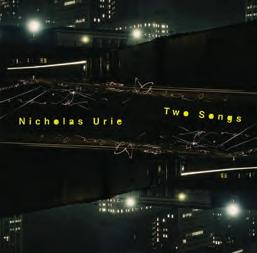
linktr.ee/gsm8_official.
Assistant Professor RYAN SULEIMAN is a member of the Coastal Climate for Change Research Group; was a guest speaker at Boston University’s Composers’ Forum series; had his symphonic puppet show for children, Red
7 Associate Professor NICHOLAS URIE released Two Songs, featuring Instructor AUBREY JOHNSON. He also contributed a chart for the double-bass virtuoso James Oesi’s upcoming recording as well as orchestrations for a concert in Eindhoven, Netherlands, with STEVE VAI ’79 ‘00H and the Metropole Orkest.
Velvet Violin, performed by the Davis High Symphony Orchestra; and premiered two chamber works.
Associate Professor JERI SYKES will orchestrate an original rock musical, Born to Do This, based on the life of Joan of Arc. It will premiere at the Company Theatre in July. Visit companytheatre.com/the-joan-of-arcrock-musical.
Associate Professor JON WHEATLEY’s jazz guitar duo with SHERYL BAILEY, assistant chair of the Guitar Department, performed at Mezzrow in N.Y.C. for the Mandorla Concert Series; in Jamaica Plain, MA; for Lexington Community Education (with Howard Alden); and at the Ar-
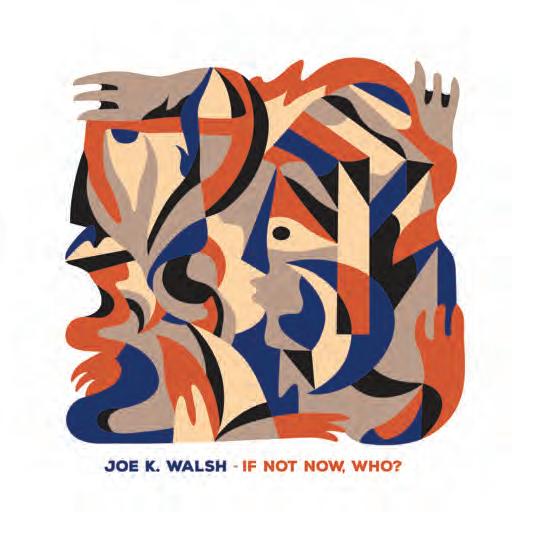
1 Assistant Professor JOE WALSH released a solo album, If Not Now, Who?, on Adhyâropa Records in January. The instrumental acoustic string-band record features several alumni and debuted at no. 7 on the Billboard Bluegrass charts.
lington Jazz Festival. Visit youtu. be/rMAjHsSKlBc.
Associate Professor ELIZABETH WONG wrote Space Nunz of the Rescue Mainframe, which was commissioned and produced by Hook & Eye Theater in N.Y.C. last fall.
Professor JONATHAN WYNER delivered a keynote talk, “A.I. and Creativity,” to the Norwegian Society of Composers and Lyricists (NOPA) at its annual gathering in Oslo, Norway, in January.
Associate Professor MARK ZALESKI is performing May 5–6 at the Mt. Hood Jazz Festival in Portland, OR; June 22 at the Loft at Hermit Woods in Meredith, NH; July 20 at Smalls Jazz Club in New York City; and September 2 at Rudy’s Jazz Room in Nashville. Visit markzaleski.com.
BOSTON CONSERVATORY AT BERKLEE
Assistant Professor JANELLE GILCHRIST recently received her M.A. in teaching with a focus on dance. She’s also a full-time
dance instructor for the Boston Public Schools and runs her own dance company, Janelle Gilchrist Dance Troupe, which has performances in May. Visit janellegilchrist.com.
Assistant Professor JENNIE ISRAEL performed the role of Volumnia in Coriolanus by William Shakespeare at the Plaza Theaters for Boston Center for the Arts this spring. Visit actorsshakespeareproject.org/ plays-events/coriolanus.
Associate Professor PAUL LARAIA recently joined the Conservatory’s Instrumental Studies Department, teaching viola. His quartet released a new album, Uncovered, Vol. 3: Coleridge-Taylor Perkinson, William Grant Still & George Walker. The album is on Spotify.
Associate Professor DOUG LOCKWOOD appears as Touchstone from June 2 to 25 in the Actors’ Shakespeare Project’s production of As You Like It, in association with the Theater Offensive, at Tufts University’s Balch Arena Theater. Visit actorsshakespeareproject.org/plays-events/ as-you-like-it.
Associate Professor MARTA VERDE BAQUEIRO is on the Max/MSP Certified Trainers team. She’s the only woman in Spain, and one of the few in Europe, on the team.
3 Instructor JOSHUA WHEATLEY released the album Drumless Tracks along with a digital sheet music book. The album is available at joshuawheatley.bandcamp.com. He also performed with Song Ah Chae Trio live at Fifty-Fifty Jazz and Poetry Festival 2022. Visit youtu.be/qZ_gttwzTDE.
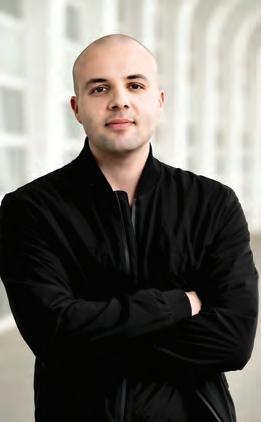
5 Assistant Professor VIKTORIJA PILATOVIC released her album Skybridges in March. Visit lnk.to/Skybridges and viktorijapilatovic.com.
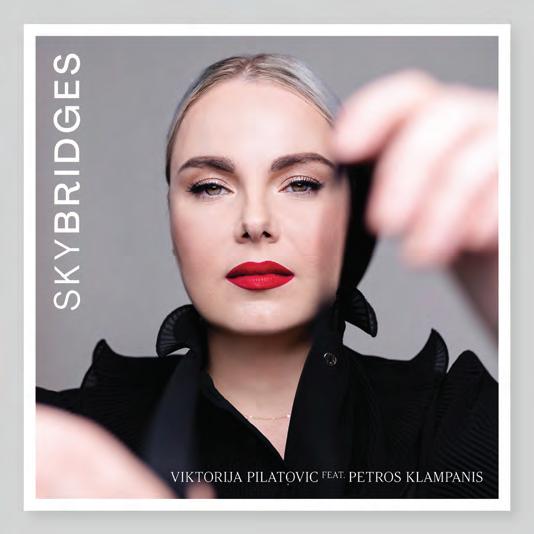
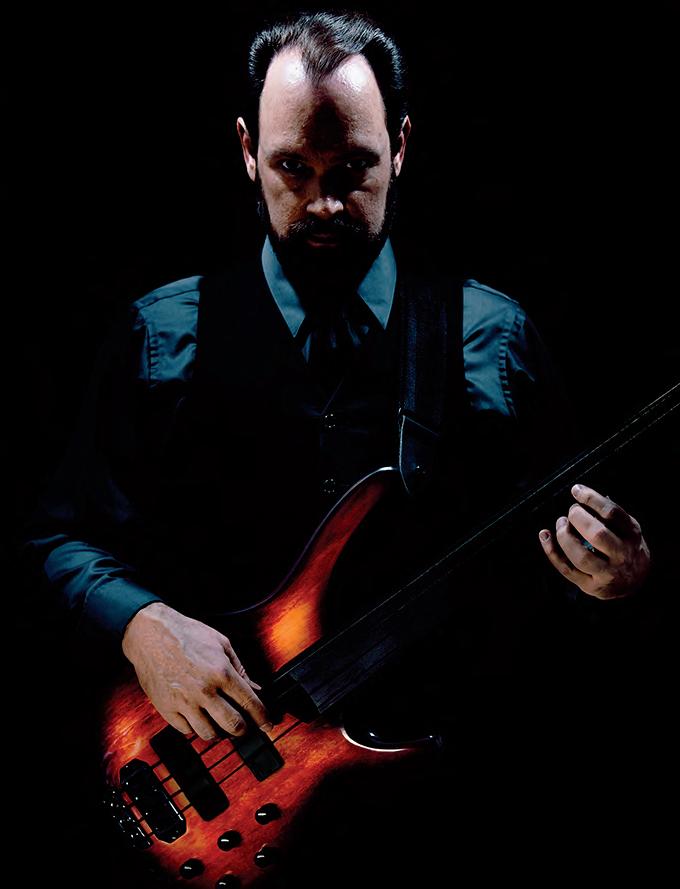
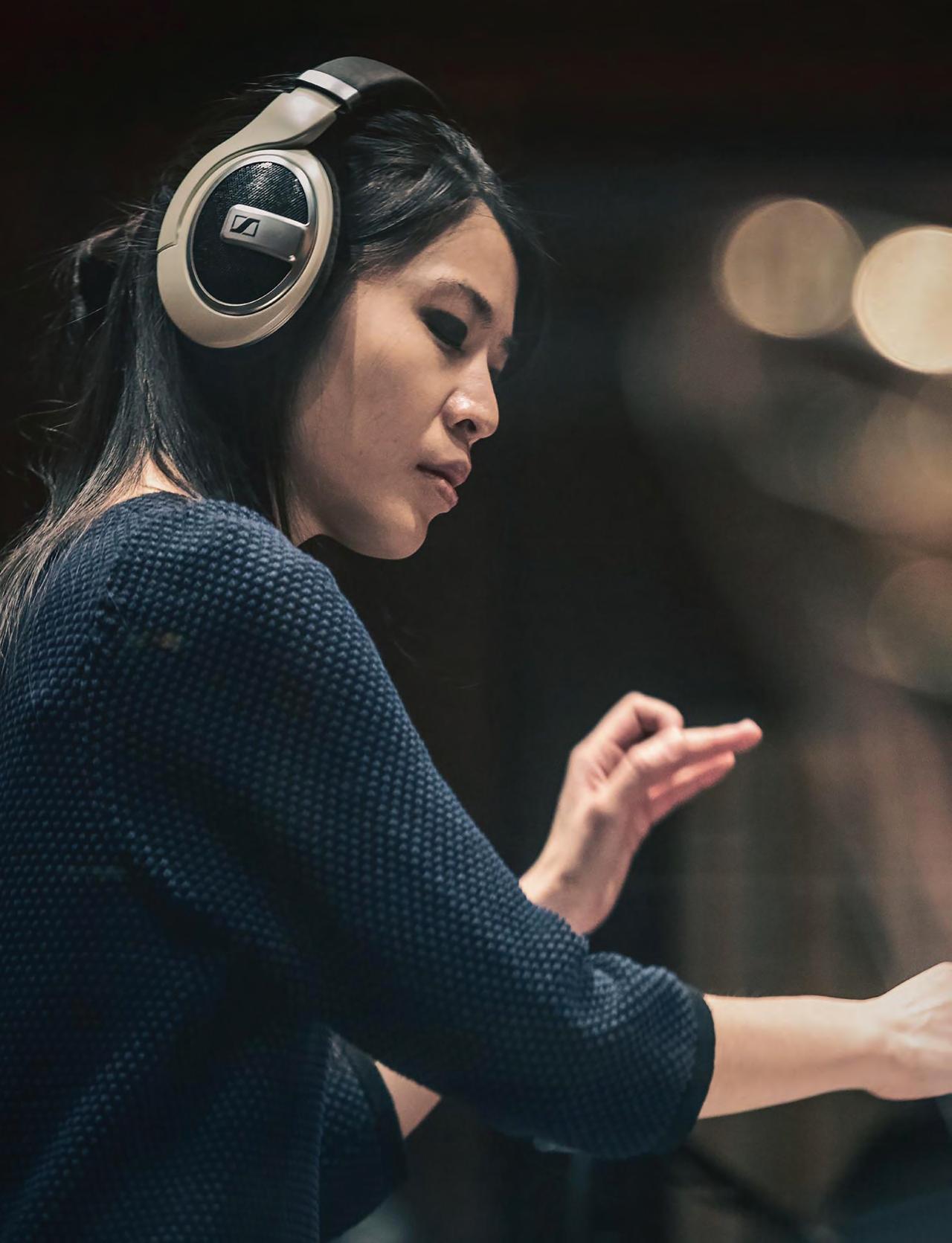
1969
STEVEN LIPMAN B.M. of Ridgefield, CT, founded Inside Music Schools in 2010 after a successful 40-year career at Berklee. IMS is a boutique consulting company working with music students and their families to identify the right-fit music colleges and to help them prepare to apply and audition.
JOSEPH RAYMOND LOMBARDO of Frederica, DE, played in the U.S. Army Blues jazz band for three years before getting his degree in respiratory therapy.
1970
STEPHEN SMITH of Hillsborough, NC, released an album of 13 original piano solos, Light of the Morning. It is available for download on Bandcamp and is on streaming platforms.
1974
PHILLIP FRANCO of Manchester, CT, teaches percussion and drums at Middlesex Music Academy.
KEN HATFIELD of Astoria, NY, is an award-winning composer and guitarist who played guitar on Stirrings Still, a set of 11 intimate duets featuring the distinctive baritone vocals of song stylist Eric Hoffman. Hatfield composed six of the songs and produced and arranged all the material.
JOHN VAN NEST of Burbank, CA, owns Resonate Music + Sound, which has worked with En Vogue, Latin superstar Becky G, Nickelodeon’s Good NEWZ Girls, the Walt Disney Company, LIONEL RICHIE ’17H, QUINCY JONES ’51 ’83H, Eric Clapton, Sheryl Crow, Miley Cyrus, Olivia Rodrigo, and the Jonas Brothers, among others.
3 HOLT VAUGHN ’80 of Nashville, TN, has a new album, These Songs, Vol. II, featuring two-time Grammy nominee Phil Keaggy, Will McFarlane (Muscle Shoals Rhythm Section), Jason Webb (Sheryl Crow), Vicki Hampton (Garth Brooks), Rick Cua (the Outlaws), and Nashville veteran Tony Morra.
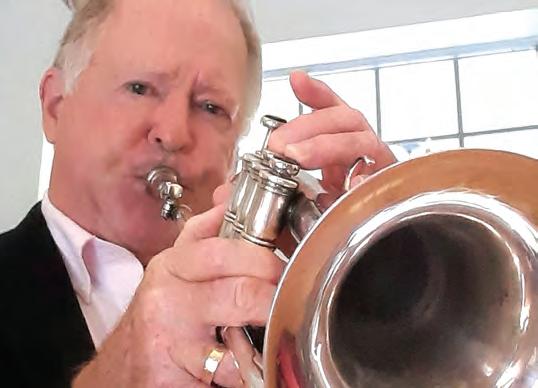
1 KEN CARPER B.M. ’75 of Naples, FL, got his master’s degree from Eastman School of Music and his Ph.D. from University of Hawaii. He plays trumpet and flugelhorn with Naples Concert Band, Bonita Springs Concert Band, and Bonita Brass Quintet, and is director of the Naples New Horizons Band.
1975
5 BOBBY DEITCH of Upper Nyack, NY, represented Berklee as a drummer in the Thursday Night Dues Band, under the direction of PHIL WILSON ‘04H. Deitch also performed in Berklee’s guitar and trombone ensembles and is a voting member of the Grammys and executive member of the Songwriters Hall of Fame.
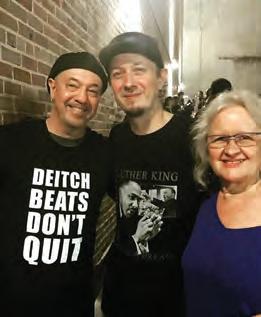
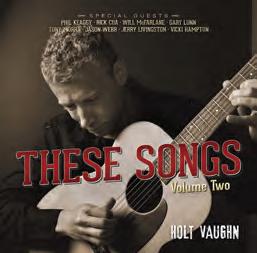
RONALD J. DOIRON B.M. of Miramichi, Canada, has owned and operated Ronald Doiron Music Studio for 43 years while teaching instrumental music. He taught music in public schools for 32 years.
FREDERICK MALOUF B.M. of Santa Cruz, CA, released Soulscapes, a collection of soul tunes and statements from within that are influenced by many styles of music. It is available on all streaming services and on Bandcamp.
JONATHAN LAX B.M. of Cordova, TN, performed at the International Trumpet Guild Conference in San Antonio, TX, and with Los Cantadores in Memphis, TN. He also performs with the Bartlett Community Concert Band.
1978
ALAN DOYLE B.M. of Port Richey, FL, graduated in 2017 with a M.A. in music therapy from the University of Limerick in Ireland and has been working as a board-certified music therapist.
PETER HUME of Northridge, CA, was a finalist in the R&B category at the 27th annual USA Songwriting Competition.
BETH ANN KENNEDY of Bozeman, MT, is the owner of Aunhail and is a SAG-AFTRA and AEA union member. Aunahil has been producing live theatrical events since the mid-90s. In 1995, she started directing Bending Towards the Light…a Jazz Nativity at Lincoln Center.
BILL MCGOLDRICK B.M. of Norfolk, MA, plays more than 100 gigs a year all over New England in the Bill McGoldrick Acoustic Duo.
ANGELO MARCIALIS B.M. of Chester, NY, retired from a rewarding career as a music educator and an active jazz musician to focus on landscape photography. Over the years, his landscape photographs have won awards in exhibitions in the tri-state area.
AARON TIN CHEE LOO B.M. of Pearl City, HI, is the executive director of the Next Stop Infinity Foundation, a nonprofit theater repertory company that was founded in N.Y.C. and is now in Hawaii. The first production is the original musical Angelz with Tails, a fantasy musical about service dogs helping veterans who have PTSD.
SCOTT ROBINSON B.M. of Teaneck, NJ, released his album Visions: Live at Vision Festival 2018, featuring Roscoe Mitchell and Tom Buckner. He also performed at
Mastering engineer Jett Galindo on building an inclusive industry, and the art of a finely tuned mix. BY DARRY
MADDEN
Roxette, the Bangles, Bananarama, Heart.
In the Philippines of her youth, JETT GALINDO
B.M. ’12 was awash in the sounds of a vibrant pop cover-band culture, one that extended straight into her home.
“My childhood was pop music,” Galindo says. Her mother and father had a business training and managing these cover bands, and young Jett was tasked with keeping her parents up on the trends and new songs on MTV.
Her path to becoming a mastering engineer began here, but included a few more stops along the way, because inside this pop music
kid was also a tinkerer, a techie, and a classical soprano.
When she was 19, Galindo’s choral group toured the U.S., and it was on this tour that she met a Berklee alumnus who connected her with the college. At Berklee, where she majored in music production and engineering, a professor introduced her to the legendary engineer Doug Sax. He ran L.A.’s Mastering Lab, the first independent mastering studio (opened in 1967) and helped shape the sound of a tremendous amount of pop music in the ’70s and ’80s, including Pink Floyd, the Doors, and the Rolling
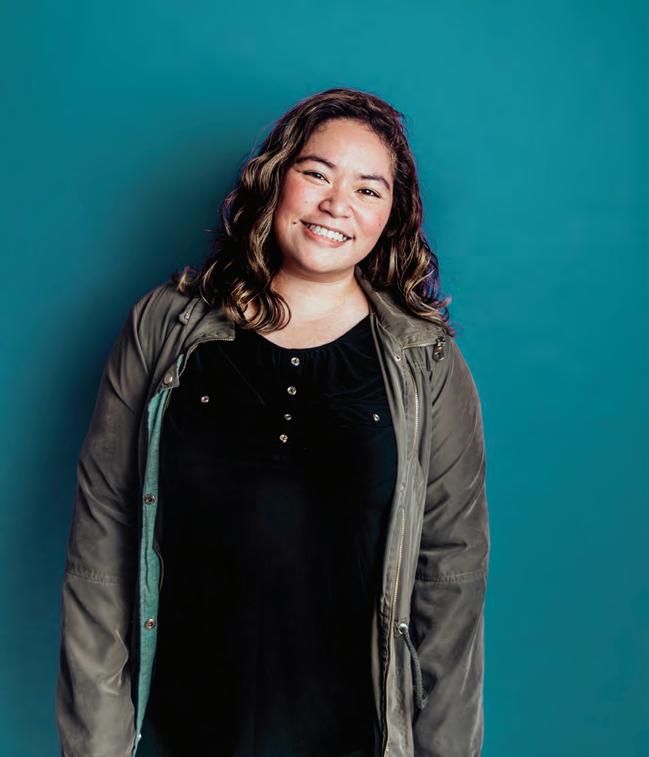
Stones.
Sax, whom Galindo cites as her mentor, died only two years after she arrived in Los Angeles to work with him. She stayed in L.A. and is now at the Bakery as one of its three mastering engineers.
Mastering, for those who don’t know the finer points of this often misunderstood part of the musical puzzle, is the final step in audio post-production. Its goal is to balance the stereo mix and ensure that the track sounds its best across all media formats.
“Mastering is essentially trying to make your music loud,” says Galindo. “That sounds simple enough, but it’s very hard because you also don’t want to make your music loud at the expense of its integrity. There is a tendency for people to just keep pushing the volume, but then you end up distorting it. Your music ends up brittle and saturated. It’s really a fine balancing act.”
As is so much in life, as Galindo can attest. In addition to her main job, she continues to perform in chorales, cuts vinyl at the Bakery, and is active in several nonprofits, including Women in Vinyl and SoundGirls, both of which represent women in audio. This representation is a cause that’s close to her heart.
“There’s still work to be done in getting
women into this field. There’s really no reason for it to be that less than 5 percent of the engineers engineering the Billboard Hot 100 are women,” she says, adding, “Organizations like SoundGirls are very important—it’s important that women feel that we should lift each other up.”
For Galindo, this belief extends to all underrepresented voices in the arts.
“I’ve been getting a lot of work from demographic groups that never had mastering services available to them before. The Philippines, I believe, still doesn’t have an independent, standalone mastering facility. It was only recently that pop music in the Philippines became properly mastered on a standard basis.”
When she was a kid, she says, the question in the Philippine music industry was: Why doesn’t the music in our country sound like the Top 40s?
The answer, she says, comes down to how the music is engineered: “A big part of that is making sure that your music sounds competitive when played against other music on a playlist, and making sure the frequency response of the music is within the same tonal balance curves as the Top 40s or a specific genre,” she says. “And a big part of that is mastering.”
Birdland Jazz Club in New York City with JOE LOVANO ’72 ’98H.
1982
LANDIN BATTISTINI B.M. of Brandon, FL, was a finalist in the jazz category at the 27th annual USA Songwriting Competition.
LOREN PARKINS B.M. of New York City is working as senior director of music and media licensing at Showtime Networks. He is responsible for negotiating and licensing music for all of Showtime’s promos and for working with labels, publishers, artists, and management.
1985
ANDRES POLLAK B.M. of New York City owns EastSide Sound, the longest independently owned recording studio in the city. A Chilean pianist, film composer, and engineer, Pollak is committed to building upon the house that original owner, Lou Holtzman, built more than 50 years ago.
MIHOKO TOKORO of Woodland
5 LAURA SCHWENDINGER ’85 of Madison, WI, won the $50,000 Charles Ives Opera Prize from the American Academy of Arts and Letters this year.
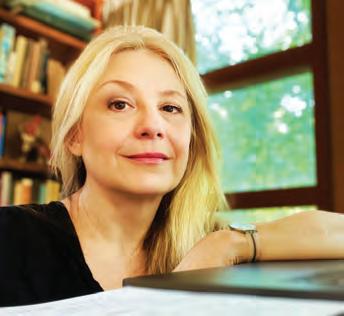
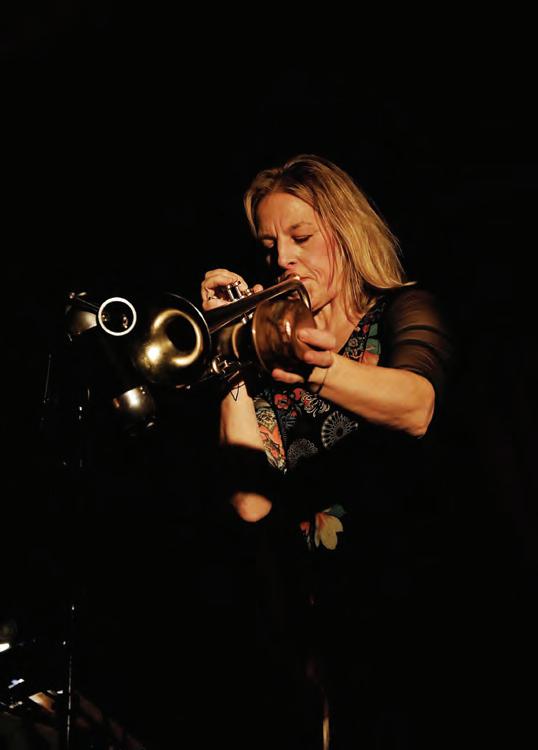
1 INGRID JENSEN B.M. ’89 of Ossining, NY, is the dean and director of jazz arts at the Manhattan School of Music and has upcoming releases on Blue Note Records with Artemis and Darcy James Argue, as well as a Secret Society double album to be released on Nonesuch Records.
Hills, CA, is working as project manager at Picture Head/ Streamland Media in the Localization Department of the Marketing Division, which creates trailers, TV spots, online ads, and social media posts for major streaming releases for Netflix, Apple TV, Amazon Prime, and Disney+ worldwide.
1986
STEVEN PIERMARINI B.M. of Acton, MA, is celebrating his 25th year as conductor of the Leominster Colonial Band. He also performs regularly with the New Liberty Jazz Band as well as his two-trombone quintet, 2Slick, along with Assistant Professor JOHN ARCARO
1987
SCOTTIE MILLER of Crystal, MN, released Carnival Cocoon, a poetry collection and album featuring his poem and song “Berklee!”
This is Miller’s 11th independent release. He also played keyboard and cowrote multiple songs on four-time Grammy-nominated singer Ruthie Foster’s album Healing Time.
1989
DOUGLAS P. HAMMERSCHMITT B.M. of Lynn, MA, released his 15th album, Melancholia. This dark solo piano album debuted at no. 1 on the Amazon New Age chart.
GERNOT WOLFGANG of Santa Fe, NM, was a finalist in the instrumental category at the 27th annual USA Songwriting Competition.
1993
ERIC BAINES of Van Nuys, CA, is the new bassist and background vocalist for the iconic band Chicago, which is celebrating its 55th year. Baines also hosts The Dive Bar Rock
5 MICHAEL LAU B.M. ’90 of Holtsville, NY, has been appointed the national chairperson for the Association of Independent Music Publishers.
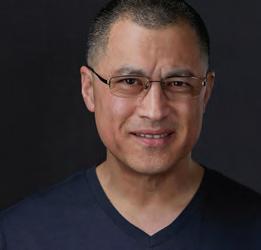
Star Podcast, which features interviews with musicians and music professionals in the Los Angeles area.
DAN BOSSHARDT B.M. of Hillsboro, OR, is a full-time music teacher at Lincoln Street Elementary School. Along with bassist Joe Aloia, Bosshardt wrote and recorded music for jazz quartet, inspired by public artwork. The Out There Jazz Suite will be released August 21.
GEORGE HADDAD B.M. of Redondo Beach, CA, won a Children’s & Family Emmy for Outstanding Sound Mixing and Sound Editing for a Live Action program for the Netflix series Sweet Tooth.
JOE KOWALSKI B.M. of Allston, MA, made his second short horror film, Perfida: The Diabolical, in which a reclusive musician is drawn back to live performance and his life takes a terrifying turn. Kowalski’s first film, Don’t Go in the Basement, was included in festivals and won several awards.
EARLE PUGHE B.M. of Concord, MA, contributed 27 transcrip-
tions of Piedmont guitarists to the book Deep in the South: A Music Maker Songbook. The book was released September 20 and is Music Maker’s first songbook.
1995
ERIC BARAO B.M. of Seekonk, MA, released his third solo album, From My Planet to Your Star, and cofounded the Boston power pop band the Cautions. He’s also scored several soundtracks (Turbocharged, Raising Matty Christian) and contributed music for the movie Balls of Fury.
PETER B. EMERSON B.M. of Waco, TX, is the cofounder and creative director of ITSUIC Music. His original work, He Rules the World: A Concert Telling of the Nativity Story, premiered in December in Austin, TX. It’s narrated and produced by Kevin Sorbo and stars Broadway actor David Gaschen.
1996
BRIAN CASPER B.M. of Millcreek, UT, is a partner with the law firm Klemchuk LLP. Last year he won a copyright infringement jury trial in federal court.
JULIAN GRACIANO of Buenos Aires, Argentina, published the third volume of The Tango Real Book, edited by MELOS (formerly Ricordi Americana). This extensive work includes all styles and periods of tango. The collection will have a total of six volumes with 700 standards.
BETO HALE B.M. of Woodland Hills, CA, is the owner, producer, and engineer at Los Olivos Recording Studios, producing independent artists such as Olya Lvova and Brandon Soriano. He’s also working on music to be released
in 2023, including a collaboration with Colombian Latin-alternative icons Aterciopelados.
1997
SEAN GOULDING B.M. of London, England, is an international music agent at One Fiinix Live after 15 years working at the Agency Group and United Talent Agency. OFL was started in 2020 by award-winning agent Jon Ollier, who represents Ed Sheeran, 2Cellos, Calum Scott, and others.
SEAN-DAVID J. MCGORAN B.M. of Olympia, WA, is the founder and director of the Tuned In Academy, with 450 students, a satellite in South Seattle, and a virtual team of faculty around the country. He’s also adjunct faculty at Regent University, John Brown University, and Grand Canyon University.
SHIE ROZOW B.M. of Valencia, CA, released Music for the Screen Vol. 1: Leo Pfeifer Short Docs, a compilation of four soundtracks for award-winning short documentaries by filmmaker Leo Pfeifer. Three of the scores have earned Telly Awards.
GREG ALLISON B.M. of Stittsville, Canada, released a self-produced, full-length album of original music recorded in his home studio.
EVAN Z. HALLER B.M. of Needham, MA, who perfoms as Music at the Blissful, released his third album for children, It’s Me, Evan!, which features catchy tunes and playful lyrics. He’s performing live shows around Massachusetts and plans to tour the Midwest this summer to promote the album.
3 ERIC BERGERON B.M. ’91 of Ellerslie, Canada, is storyboarding his 92nd episode of the award-winning children’s television show Paw Patrol
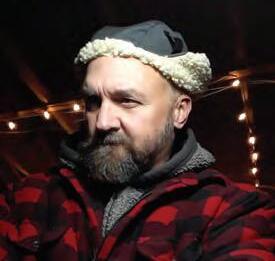
JAYMZ HARDY-MARTIN III B.M. of Hampton, GA, was the tracking and monitor engineer for Rihanna’s Super Bowl LVII halftime performance. Immediately afterward, he collaborated with music director Adam Blackstone and the NBA for its annual AllStar 2023 festivities in Salt Lake City, UT.
GREGG STEIN B.M. of Framingham, MA, is the founding partner and CEO of Triple G Ventures and CEO of SKOOG. CEO Monthly
named Stein the Most Influential CEO in Massachusetts for 2022. He coaches, mentors, and leads a portfolio of rising brands, from foundation through scale-up, worldwide.
MATTHEW CUSSON of Pittsfield, MA, was nominated for a Grammy in the category Best Arrangement, Instrumental or A Cappella. He also recorded as a featured artist and producer for 11-time Grammy nominee Dave Koz. He’s recently toured with
5 NEAL ADAMS B.M. ’98 of Seattle, WA, is a self-employed guitarist, music instructor, and composer who performs with several small groups as well as with two traditional big bands. Adams released the EP Neal Adams & Friends in 2022, exploring jazz/funk-based compositions and collaborating with Rhymer and the Big Dipper.
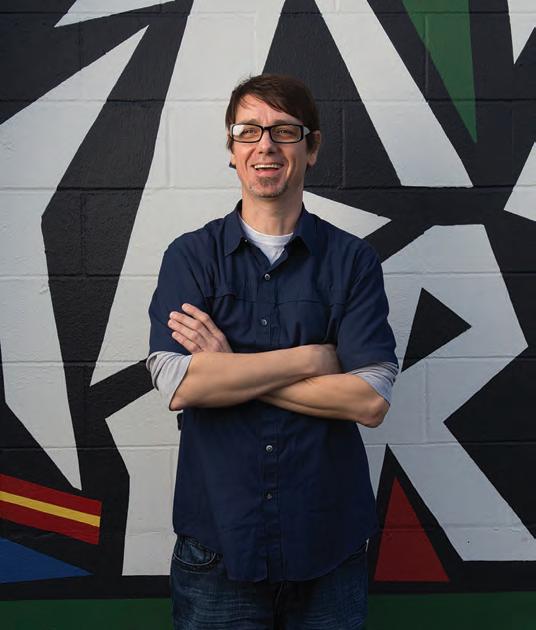
Christina Aguilera, Brian McKnight, India Arie, and others.
KRYSTAL DEMAINE B.M. of Beverly, MA, released her book The Roots & Rhythm of the Heart: Our Musical Connection to Identity, Spirit, and Lineage. It’s grounded in music, spirit, and the heart. Available in ebook and softcover on Amazon, Barnes & Noble, Apple Books, and most bookstores.
MATTY HARRIS of Manhattan Beach, CA, mixed songs on an album by Huddy featuring Travis Barker for Interscope Records.
of Van
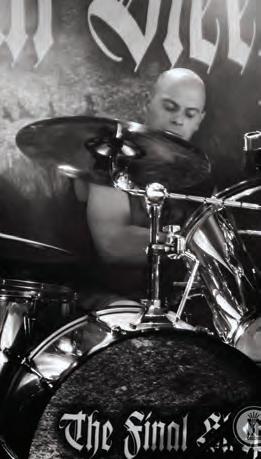
1 MIKE VAN DYNE B.M. ’01 of Nassau, NY, and his band the Final Sleep released their new album via Belgian label Death Farm Records, and have shared stages with many worldrenowned metal bands, including Fates Warning, Sanctuary, At the Gates, and All That Remains.
Nuys, CA, was hired by California State University, Los Angeles, this fall to be an assistant professor of Afro-Latin music, jazz, and commercial piano.
ANTONIO BELIVEAU B.M. of Thornbury, Australia, is a composer and music supervisor for the ABC sitcom The Conners, and was the former pianist and lead singer for Crash Kings.
AUBREY WILK B.M. of Commerce City, CO, is the principal of Downtown Denver Expeditionary School and its former dean of curriculum and culture. She’s also worked with EL Education to develop an interdisciplinary curriculum for grades 2–5 that engages students in project-based learning relevant to the local community.
TUFFUS ZIMBABWE B.M. of New York City was a finalist in the jazz category at the 27th annual USA Songwriting Competition.
5 GEORGI SARESKI B.M. ’05 of Skopje, North Macedonia, released Big Love, his ninth album of original compositions. It has nine duets for guitar and harmonica and is available on all music streaming platforms.
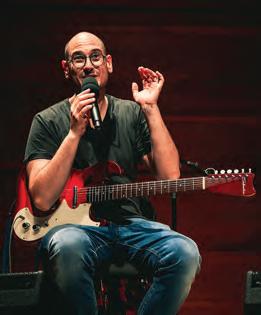

1 JESSICA TEICH B.M. ’07 of Glen Gardner, NJ, is a board-certified neurologic music therapist, a Ph.D. candidate at the University of Toronto, and a lecturer for the Academy of Neurologic Music Therapy (NMT). Teich studies the clinical use of music to address motor differences in people with autism.
KEVIN M. CASINI B.M. of Clinton, CT, is vice president of business and legal affairs for RME (Rights Made Easy), a modern music rights organization that prioritizes identification and accurate royalty collection for music uses across social media and user-generated content. He previously founded Ecco Artist Services.
JOSH GIUNTA B.M. of Brooklyn, NY, won his first Grammy, in the Best Contemporary Instrumental Album category, for his work on the Taylor Eigsti album Tree Falls
2007
ROSANA CABÁN B.M. of Brooklyn, NY, is a visiting assistant arts faculty member in the Collaborative Arts Program at New York University’s Tisch School of the Arts. She is teaching courses in music production, audio storytelling, and sound art.
ANTONIO LOPEZ B.M. of Ocean, NJ, earned a master’s degree in special education after graduating from Berklee. Now he shares his passion for music with students who have autism and multiple disabilities.

1 JOSEPH BRANCIFORTE B.M. ’07 of Mount Vernon, NY, won a Grammy in the Best Latin Jazz Album category for his recording engineer work on Eliane Elias’s album Mirror, Mirror. Branciforte runs Greyfade Studio in Mount Vernon as well as Greyfade, an experimental record label. Visit greyfade.com.
MICHAEL CONRAD B.M. of Nashville, TN, released his debut album, Bada Bing, under the band name Greedy Cherry, which serves as a vehicle for his multigenre songwriting. Conrad sings and plays bass on most tracks.
CÉDRIC HANRIOT B.M. of Paris, France, released his jazz album Time Is Color, which received a rare five-star review from BBC Magazine
2009
IVÁN CARRERO B.M. of Bogotá, Colombia, is the CEO of I-C Studios, a marketing entertainment company that counts among its clients Sony Pictures Television, Adidas, Samsung, and many other international brands.
JAMES ROBERSON B.M. of Los Angeles is a freelance film and television composer. He wrote the score for the feature film Heart of a Champion, which premiered in February. Roberson also prepared an original soundtrack release for digital streaming services to coincide with the film’s theatrical release.
DAVID BAWIEC B.M. of Westminster, CO, created the music for Jon Favreau’s The Mandalorian Experience at Star Wars Cele-
Merging his musical and mechanical skills, luthier Ben Wilborn carved a niche as an in-demand builder of high-end acoustic instruments. BY NICK BALKIN
For much of his youth, BEN WILBORN B.M. ’92 could be found playing music or working with his father, an amateur woodworker, in the basement shop of their Reno, Nevada, home. So when Wilborn set out to build a violin in his senior year at Berklee, this seemed like a reasonable goal. After all, he had a decent grasp on how the instrument worked, having played it since the age of 6, and he’d learned the basics of carpentry from his father. How hard could it be?
“Really, really hard,” he conceded after reading a book on violin construction that year and promptly scrapping the idea. “When I was young, I was extremely impatient, and impatience and lutherie do not blend very well,” he says. “When I started as a luthier, I was 40, and I’d gained perspective.”
After earning his bachelor’s in film scoring, Wilborn returned to Reno and formed an Americana band, the Lazy Eights, in which he sang, wrote songs, and played guitar, violin, and mandolin. The band toured for nearly a decade and built a strong local following but never achieved commercial success.
When the band broke up, Wilborn traded his pedalboard for a power drill to help a friend restore a warehouse in downtown Reno. This led to more construc-
tion jobs, and soon he was running his own contracting business. But while he liked the work and had a knack for it, he missed music and wanted to incorporate it back into his life. Everything clicked into place shortly after the birth of his daughter. Needing an activity to focus on while the baby was sleeping—one that wouldn’t make too much noise—he decided to give lutherie another try. This time, though, his sights were set on a different stringed instrument.
“I built a guitar… shaped object,” he says, “and even though it really kinda sucked, I saw the potential. It was just such a joyful experience.” So, with his wife’s blessing, he canceled his contractor’s license and launched Wilborn Guitars.
Wilborn’s new venture got a big boost from folk singer Gillian Welch ’92, who was the first artist to use and recommend his guitars. He’d met the future Grammy winner in a Berklee ensemble, and she later joined his college band, the Polka Masters. “Ben is a truly artful maker, with a brilliant eye, a gifted hand, and an exquisite ear,” Welch says in a testimonial she wrote for Wilborn Guitars.
While there’s no direct line from Berklee to lutherie (the college now offers a minor in instrument repair), Wilborn says the breadth
of his Berklee education gave him an edge in his field. “No one ever told me ‘This is how you sharpen a chisel’ at Berklee, but I learned about tone, timbre, sustain, decay—all the things that make music music, instead of just noise—and that has helped me infinitely in my quest to be a good luthier,” he says.
Wilborn’s signature achievement is his Comma Series, a line of guitars that features an innovative support design, with fan braces arranged like spokes on a wheel, and an offset soundhole to produce extra vibration and amplification. Starting at $11,000, they’re not cheap, but Wilborn, whose guitars are made to order and built en-
tirely by hand, says the experience of working with a luthier on a custom-build—rather than buying a factory-made instrument off the rack—makes his guitars well worth the cost.
It’s a price many are willing to pay: there’s a three-year waitlist to get a Wilborn guitar. Given this demand, he’s often asked if he’ll hire employees to help him build more instruments. But he’s a fully committed solo act.
“I just want to keep doing this,” he says. “I have the perfect gig for me. I’m doing mechanical work with my hands, building beautiful things that people appreciate. I’m solvent. And I’ve got music. What else could I ask for?”
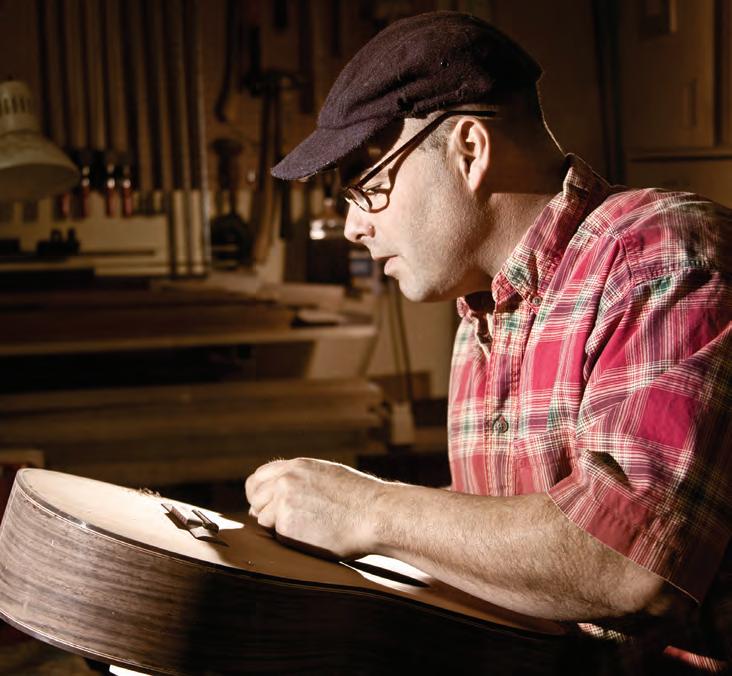
bration, and scored several of Netflix’s top feature releases as well as an animated film for Warner Bros. He was a music producer for the Paramount Studios’ Christmas tree lighting show.
ROBERT GILLIES B.M. of Bergen, Norway, has been signed to V2 Benelux (Mumford & Sons, Alice Merton, Con Brio) as a recording artist.
KIMBERLY PFLUGER B.M. of Marshfield, MA, was hired as senior marketing director of audio and music solutions at Avid, the company behind Pro Tools, Media Composer, Sibelius, and more. Pfluger previously led marketing teams at iZotope and Splice.
YUI YAMAMOTO B.M. of Burbank, CA, released three new singles in September. All are available on major streaming platforms.
EDWARD MORETA B.M. of Hyde Park, MA, founded the record label and recording/mixing/mastering studio E7studios, working with Univision Boston and with local artists. Artists under his label include LuzMel, Adriana Garcell, and Josean Jacobo y Tumbao.
KAYLEY BISHOP B.F.A. of Fort Myers, FL, won the top prize at the seventh annual Christmas Songwriting Competition.
MICHEL CORRIVEAU M.M. of Montreal, Canada, composed music for several international features and series, including Anna (Los Angeles Independent Film Festival winner for best score in 2016), A Breath Away, and Versailles. He’s also composed for the television series True North, which won two Gémeaux Awards for best score.
YOUNG-AE JUNG B.M. of Gyeonggi-do, South Korea, released her fourth album, Arirang Cantata, in October. It features traditional Korean instruments such as haegeum, daegeum, and gayageum as well as traditional Korean percussion, piano, double bass, and drums.
MATT SAVAGE B.M. of Somerville, MA, released The Groove Reawakens, his second album with the Matt Savage Groove Experiment in December. The jazz fusion album alternates instrumental and vocal tunes and features AARON GRATZMILLER B.M. ’11, JAVIER ROSARIO B.M. ’09, and ROBBIE PATE ’13.

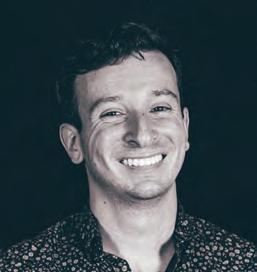
1 OREN HARTOV B.M. ’11 of Studio City, CA, released his debut instrumental jazz-funk record, Shaky Eddie. It features HAILEY NISWANGER B.M. ’11, NIGEL NEWTON B.M. ’13, PEPE HIDALGO RAMOS ’15, RICCARDO GRESINSO ’21, and Nick Dinucci, and was produced by JESSE HARTOV B.M. ’17
LANCE TOBIN B.M. of Boca Raton, FL, is the vice president of booking for Al Dana Amphitheatre in Bahrain and has booked performances for world-renowned artists such as Bruno Mars, Post Malone, Imagine Dragons, Kevin Hart, and Jack Harlow.
ANGEL JACINTO VELEZ B.M. of Oxnard, CA, is producing Silent Films Live 3, a concert benefiting Education Through Music–Los Angeles and featuring classic silent film selections with new scores by several composers as well as a special 100th anniversary performance of Harold Lloyd’s iconic film, Safety Last!
2014
THOMAS ANELLO B.M. of Brighton, MA, released one EP, two singles, and the album Words Won’t. Anello has amassed millions of views across Instagram, Twitch, and Reddit. He is sponsored by Elixir Strings and McPherson Guitars.
SHON SHACHAR BOUBLIL B.M. of
7 TANYA DMUCHOWSKI B.M. ’13 of Lowell, MA, is the lead singer and guitarist of heavy metal trio Stormstress. Its new single, “Buried You in the Snow,” is about a band member’s recovery from vocal cord surgery and about grieving the loss of a way of life that no longer serves you.
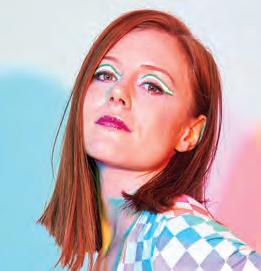
1 HOLLY CINNAMON ’16 of New York City is an actor, writer, and singer-songwriter known for her roles in Daredevil and Hocus Pocus 2. She released five singles in 2022 and is working on her first album. She’s appeared off Broadway and in film and on TV, including as a stand-in for Shiv Roy on Succession.
Perth, Australia, is completing his Ph.D. in physics at the University of Western Australia.
ZANE KUCHERA M.M. of Waltham, MA, released Empathy 2022, an album of 12 contemporary pop, folk, cabaret, and singer-songwriter tracks that were composed, arranged, and performed by Kuchera and created from lyrics written by authors from around the world.
2015
FÉLIX CARCONE M.M. of Paris, France, released a second live-experience game, The Live Holdup. His first game, The Live Thriller, was released in 2018.
SOPHIA CHRISTOPHER B.M. of Sydney, Australia, composed the songs, lyrics, and score for the pop film musical MumLife, which premiered at the Cannes Film Festival in 2022. She’s also been nominated for an Australasian Performing Right Association (APRA) Award for Best Original Song for “Silver Linings” from MumLife.
WARREN GRANT B.M. of Maspeth, NY, was the drummer for Albert Cummings’s latest tour.
TRACY YANG of Elmhurst, NY, recorded her 17-piece jazz orchestra debut album, OR, at Power Station Berklee NYC. It was coproduced by Darcy
James Argue. Yang is working on the post-production process and plans to release the album this fall.
GIULIANO D’ORAZIO B.M. of Worcester, MA, released his solo debut album, Giuliano, last fall. Its songs tell vulnerable stories that are both personal and relatable: stories of self-expression, sex, romance, acceptance, healing, justice, loss, and hope.
MARIA MIFSUD M.M. of Sannat, Malta, created a piano composition, “Remembrance,” that was published as a piece in the grade 4 Trinity College London piano syllabus for 2021–2023. This piece was also chosen as the soundtrack for the Trinity College London campaign video.
YOSHIE NAKAYAMA B.M. of Somerville, MA, is a second-year assistant professor in Berklee’s Contemporary Writing and Production Department. Her initiative, Songs for World Peace, hosted its third annual Peace Day Panel in September with guests from Musicians Without Borders, Community MusicWorks, and Music to Life.
ELISE BOEUR B.M. of Toronto, Canada, released a duo album, Fiddle Tunes, with ADAM IREDALE-GRAY ’15. Both are members of the Juno-nominated, Canadian Folk Music Award–winning quintet Aerialists, and in Fiddle Tunes they go back to their roots of joyfully exploring Celtic and Nordic fiddle traditions.
ANA KRSTAJIC M.M. of Belgrade, Serbia, composed the score for Where the Road Leads, a film that premiered in January at Slamdance Film Festival. It was one of 11 films that was screened in the festival’s narrative feature category.
NICOLAS SALINARDI B.M. of Santa Monica, CA, wrote additional music for all 10 episodes of Showtime’s The First Lady, worked as a score programmer on Doctor Strange in the Multiverse of Madness, and is writing additional music for the massive multiplayer online (MMO) video game Star Citizen.
DANIELE TRUOCCHIO B.M. of Los Angeles was included in the prestigious Forbes 30 Under 30 Entertainment Europe list and ac-
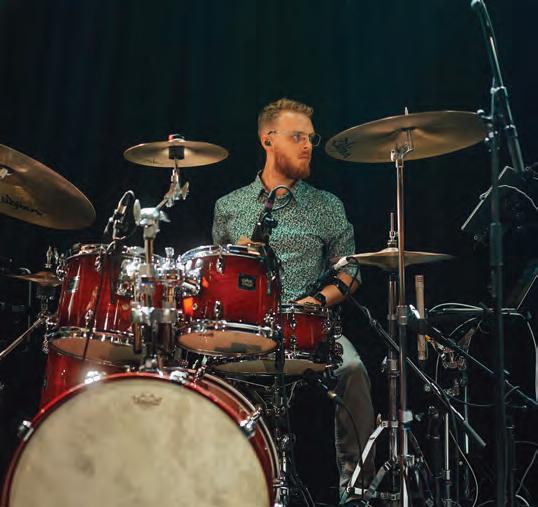
CHAVEZ CALVIN PARKER
M.M. ’18 of Dallas, GA, created the theme music for Tyler Perry’s television show Zatima, which airs on BET+ on Thursdays.
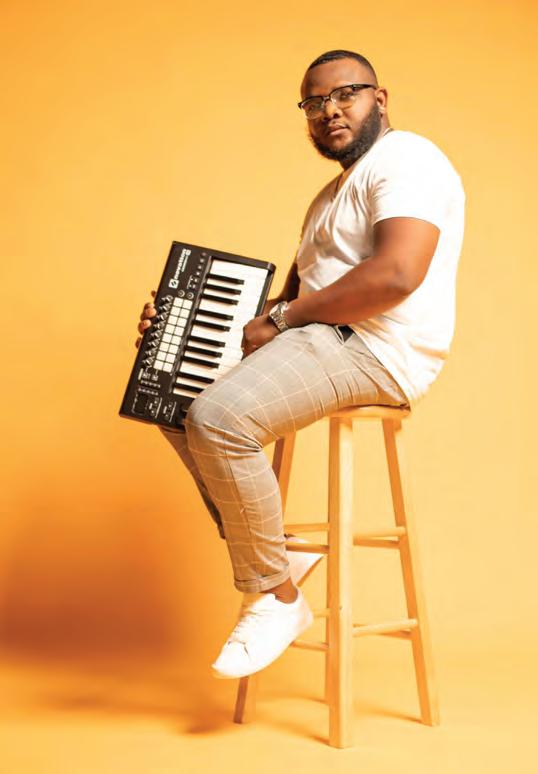
cepted into the Television Academy and Recording Academy as a national voting member. He is scoring the feature film The Martial Artist
LAWRENCE SHEA B.M. of Pawcatuck, CT, is the band director at Stonington Public Middle School.
MIKE CASEY M.M. of Los Angeles released a cowritten single, “Pasadena Sun,” which made Amazon Music’s Best of 2022: Jazz playlist, was featured in the popular video game Fortnite’s official playlist, and surpassed two million streams within six months.
INGRID L. GERDES B.M. ’05 M.M. ’19 of Boston became the new chair and head of leadership for the Boston chapter of the global nonprofit Women in Music.
ARIANA INFANTE B.M. of Culver City, CA, had one of her songs featured in an ABC promo video on YouTube.
CLAYTON MCDONNELL M.M. of Santa Monica, CA, is vice president of music services at 21 South Music.
PEDRO OSUNA B.M. of Los Angeles released his soundtrack for the film Argentina, 1985, Argentina’s submission to the 95th Academy Awards.
SERGIO PARAMO B.M. of Los Angeles works at Point Blank Music School. He produces under the name Mystery Jack and performs at festivals such as EDC Las Vegas and Beyond Wonderland for Insomniac Events. He has releases on Disruptor Records, Ultra Records, Cr2 Records, and more.
ERICA PARRA B.M. of North Bergen, NJ, was honored by the township with a proclamation for her outstanding musical achievements.
PATRICK PATE B.M. ’08 (BCM) M.M. ’19 (BCB) of Cambridge, MA, is in his 13th year as a music teacher at the Carroll School, an independent day school for children with language-based learning differences. His duo, Moon Island, also released its first electronic album.
WESLEY WARREN WILKES B.M. ’97 of San Diego, CA, died June 16, 2015, of pulmonary arterial hypertension, a genetic disease. He was 43. Wilkes was a music teacher and touring band member. He leaves his mother, Kennette Harrison; father, William Wilkes; sisters, Lisa and Grace; and nieces and nephews.
MARCO BIRRO B.M. ’19 of Montagnana, Italy, died suddenly on March 8, 2020. He was 26. A highly talented jazz pianist who was awarded a full-tuition scholarship to Berklee, Birro was also a gifted composer. He leaves his parents, Alessandra and Paolo; sister, Beatrice; grandparents; cousins; and friends.
ROBERT ROBISON ’73 of Racine, WI, died January 14, 2022, after a 17-year battle with Parkinson’s disease. He was 69. A talented musician, Robison played in the Patchwork Band and served as a choir director. He leaves his wife, Kathy; children, Michelle, Michael, Matthew, Marci, Carrie, and Curtis; brother, Gary; sister, Karen; many grandchildren; and several nieces and nephews. His son Chad; father, Robert; mother, Ruth; and brother Don predeceased him.
JASON WILLIAM HEINRICHS B.M. ’94 of Richfield, MN, died of a heart attack on February 7, 2022. He was 51. A music producer and DJ professionally known as Anomaly, Heinrichs collaborated with many musicians in the Minneapolis area and was a member of the Twin Cities–based hip-hop group Cenospecies. He leaves his parents, Richard and Jean; brother, Karl; niece, Justice; and several members of his extended family.
DAVID HARRY FINN ’75 of Montreal, Canada, died July 29, 2022. He was 70. Finn loved jazz and
played trumpet in several community bands in the Beaconsfield, Canada, area. He leaves his daughter, Kelly Cluett; son, Curtis Cluett; brothers, Bruce, Brian, and Stephen; and grandchildren, William, Ginny, and Charlie. His partner, Pia LaPorte, predeceased him.
JACK PEZANELLI of Northampton, MA, died September 28, 2022. He was 73. A faculty member in Berklee’s Guitar Department for 30 years, he retired when he became unable to teach due to illness. In his youth, Pezanelli had been a guitarist for Sammy Davis Jr.’s band. He’d also performed with Shirley Horn ’02H, Herb Pomeroy ’52 ’95H, Lou Rawls, and others. He leaves his wife, Harriett Feldman; sister, Lorna; and several cousins and nieces and nephews.
JOHN DANIEL MILLER III ’82, of Towanda, PA, died peacefully on September 29, 2022, after a long illness. He was 65. Miller was a talented musician who won two Midsouth Regional Emmy Awards for the PBS documentaries Luminous Impressions and Chihuly in Charlotte. He was also the technical director for the Bradford County Regional Arts Council. He leaves his wife, Katherine van den Blink Miller; sisters, Anne, Kristin, and Karin; and several nieces and nephews.
JOHN GIBERT COULTER B.M. ’84 of Arlington, MA, died November 5, 2022. He was 58. A professional flutist, Coulter was a founding member of the chamber ensemble Sounds and Seasons and had performed with members of the Boston Symphony, New York Philharmonic, and the Handel and Haydn Society. He also built and operated a recording studio, and was an audio and lighting technician. He leaves his
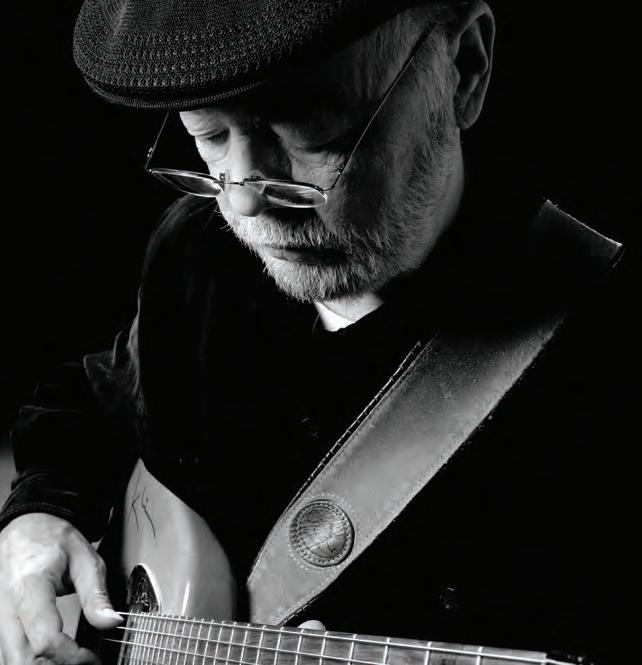
brother, Steve; sister, Joyce; and nieces.
JARRITT SHEEL of Springfield, MA, died November 12, 2022. He was 46. Sheel was an assistant professor in the Music Education and Liberal Arts and Sciences departments, having joined Berklee in 2018. He had toured internationally, worked with students in high school bands, and taught music courses at Valencia College and New York University as well as liberal arts courses at the City University of New York. He was a doctoral candidate at Columbia University. He leaves his wife, Antonia Sheel; children, Judah, Aden, and Sarah; and mother, Pamela Smith.
1 MICK GOODRICK ’67 of Boston died November 16, 2022. He was 77. A longtime member of the Guitar Department who cowrote its core curriculum, Goodrick was a highly respected teacher and mentor, and an inspiration to generations of guitarists and musicians. As a performer, he toured with Gary Burton ’62 ’89H and Pat Metheny ’96H. As an educator, in addition to teaching, he wrote the well-regarded book The Advancing Guitarist. JazzTimes called Goodrick “arguably the most influential guitar pedagogue in the history of jazz.” He leaves a brother, Ted.
ZAK GODWIN II B.M. ’90, of Cedar Hill, TN, died December 10, 2022. He was 57. A guitar tech who most recently toured with Joan Jett and the Blackhearts, Godwin often toured with Kenny Chesney, Vince Gill, and Hank Williams. He leaves his wife, Julie; brother, Pete; sister, Caitlin; and nieces and nephews. His parents, Robert and Pam, predeceased him.
WENDY HAWKINSON B.M. ’80 of Delray Beach, FL, died December 19, 2022. She was 72. A Venezuelan musician who represented her country at international festivals as an arranger and conductor, Hawkinson also composed, arranged, produced and published albums for many artists. She spent the last 20 years of her career as a music professor at Valencia College. She leaves her sisters, Linda, Nancy, and Marta; and her nieces and nephews.
KAITLYN JOHNSON B.M. ’21 of Atlanta, GA, died January 19, 2023. She was 23. A gifted classical pianist with a lovely voice, Johnson led praise and worship at Atlanta Westside Presbyterian Church. She leaves her parents, Byron and Kim; siblings, Kelsey, James Byron II, Jordan, and Jonathan; grandparents; and aunts and uncles.
3 LINDSEY WIEHL ’21 of Valley City, ND, premiered two composition commissions at academic music conferences: “Our Natural Satellite, Drifting Away” for bassoon and piano premiered at the International Double Reed Society in Boulder, CO, and “Hex’s Bonfire” for flute, bassoon, and viola premiered at the National Flute Association in Chicago, IL.
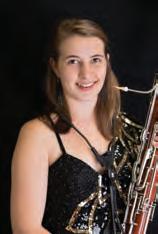
SAMANTHA ZENON B.M. of Calgary, Canada, is an alt-R&B musician and winner of 2022 YYC Music Award’s Solo Artist of the Year. Zenon’s debut EP, Genre Z, is filled with diverse time signatures, captivating lyrics, bold rhythms, and intentional use of space.
MICHAEL DUTKO B.M. of Southborough, MA, is the bassist for Groundlift, a trio that started at Berklee. Its latest single, “A Quick Fix,” was released in November. Backed by the Oracle Management since 2021, Groundlift recorded an EP with producer Steve Evetts and has played several shows.
MADELINE STEWART M.M. of Brookline, MA, is a violin and viola teacher at the Boston String Academy.
ADAM CALUS B.M. ’17 M.M. ’21 of Cambridge, MA, is the new director of the New England Conservatory Preparatory School.
ALEXIS IDAROSE KESSELMAN M.M. of New York City cowrote Joji’s “Glimpse of Us.” It went RIAA-certified platinum, passed 700 million streams on Spotify, and hit no. 1 on Spotify and no. 8 on the Billboard Hot 100. It was also nominated for Song of the Year at the ARIA Awards.
SCOTT OATLEY M.M. of Oak Park, CA, completed a bicoastal tour of California and the Northeast in partnership with Sofar Sounds. His new album, Songs I Never Wrote, due out this summer, features the new singles “Impress You” and “Long Long Time.”
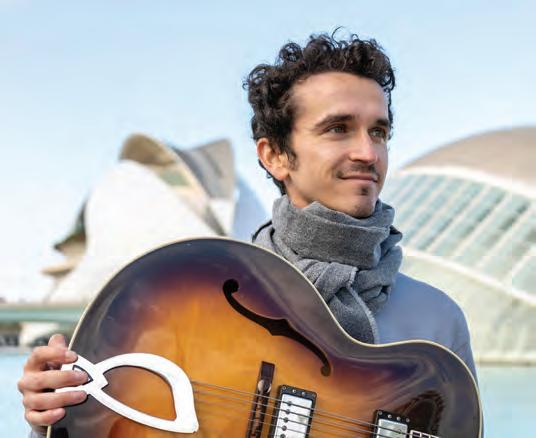
1 ELI JOSEPH SLAVKIN B.M. ’19 of Culver City, CA, is a composer, under the artist name Strings of Kin, at Lost in Sound Records, led by award-winning composer Jack Wall. One of Slavkin’s tracks, an arrangement of Erik Satie’s Gymnopédie No. 1, was added to the Spotify playlist Guitar Lullabies.
(CONTINUED FROM P. 64)
later that the reason I got the job was because of that trip—[Zimmer] thought anyone capable of a trip like that was worth getting to know better.”
William Ross, composer and orchestrator: “I believe that all of us are lifted to whatever level of success we achieve by the people we encounter in life. I can’t think of any exceptions to that principle.”
Rupert Gregson-Williams, composer: “I would always advise a young, inexperienced composer to do as much as possible, to work deadlines and different genres—and often for nothing—all this is useful for practice at the craft. You may collaborate with the next young Spielberg, too. I’ve met many young composers who aren’t prepared to do this, and want to jump straight into a career.” Many of these stories I relate to and often pass along. I recently spoke with a young bassist with two music degrees who asked me how she could find out more about music editing and perhaps enter the field. Here are a few tips I shared with her:
3 Find someone in the field to shadow as they work. You may be surprised that even very successful people will be happy to invite you. Sometimes it takes an intermediary who has a direct contact to open a door. As you find professionals to introduce yourself to, they may not be able to help you directly but ask them for someone else who may be more accessible or have more time for mentoring.
3 I constantly cross paths with Berklee alumni. There are so many in composing, sound editing, mixing, and music editing that it’s a constant reminder that these connections are invaluable for us. When you talk with colleagues and mention you are from Berklee, you’ll find an instant connection that can not only open doors but also bring friendships.
3 And yes, being in the right place at the right time is important, but there’s no way to plan or predict this one!
I hope these tips and stories can help us all navigate those paths that intersect with our careers and our lives.
STEVEN A. SALTZMAN B.M. ’77 IS THE AUTHOR OF THE MUSIC OF FILM: COLLABORATIONS AND CONVERSATIONS (WHICH CAN BE BOUGHT FROM ROUTLEDGE.PUB/ MUSIC-OF-FILM FOR 20 PERCENT OFF UNTIL JUNE 20 WITH DISCOUNT CODE AFL01) AND MUSIC EDITING FOR FILM AND TELEVISION: THE ART AND THE PROCESS
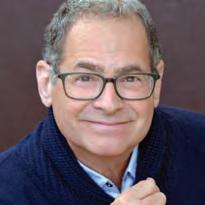
STEVEN SALTZMAN B.M. ’77 MUSIC EDITOR, AUTHOR
As 15 eager students of various ages and nationalities sat in front of me in a basement classroom in Los Angeles, I wondered, what can I teach or show them that they can’t find on YouTube? My course at UCLA Extension—Recording, Mixing, and Editing Techniques for Film Composers—is a real-world, intensive core class in the two-year film scoring certificate program. In it, I share a wealth of experience as a music editor who has been in the trenches, wrangling all the music for a film: the technical and interpersonal challenges of working with the composer, editors, director, music supervisors, and mixers on a project through to its completion.
Over the years, I have found that in our work there’s so much more than just knowing how to do the operations; it’s the behindthe-scenes and the personal interactions that contribute to our successful careers. I believe it is these untold and unwritten stories that are missing from music education today. These are the experiences that inform us—beyond the technical knowledge—of
the intricacies of working within the industry and that inspired me last year to write my second book, The Music of Film: Collaborations and Conversations, which opens up the world of film music from the inside through personal narratives drawn from a series of interviews and conversations with professional composers, music supervisors, music editors, and picture editors. The book demonstrates how music for film and television works according to insiders in the industry. Here are a few excerpts:
Nathan Barr, composer, on helping a friend move: “I left my job, bought a school bus… and we drove 16,300 miles from New York to Brazil. It seemed like a lark at the time and a big distraction…from any meaningful movement in the direction of a job. But when I got back, a friend passed along a job listing that read, ‘Prominent Hollywood film composer seeking driver/assistant’ …the composer turned out to be Hans Zimmer. I didn’t find out until years
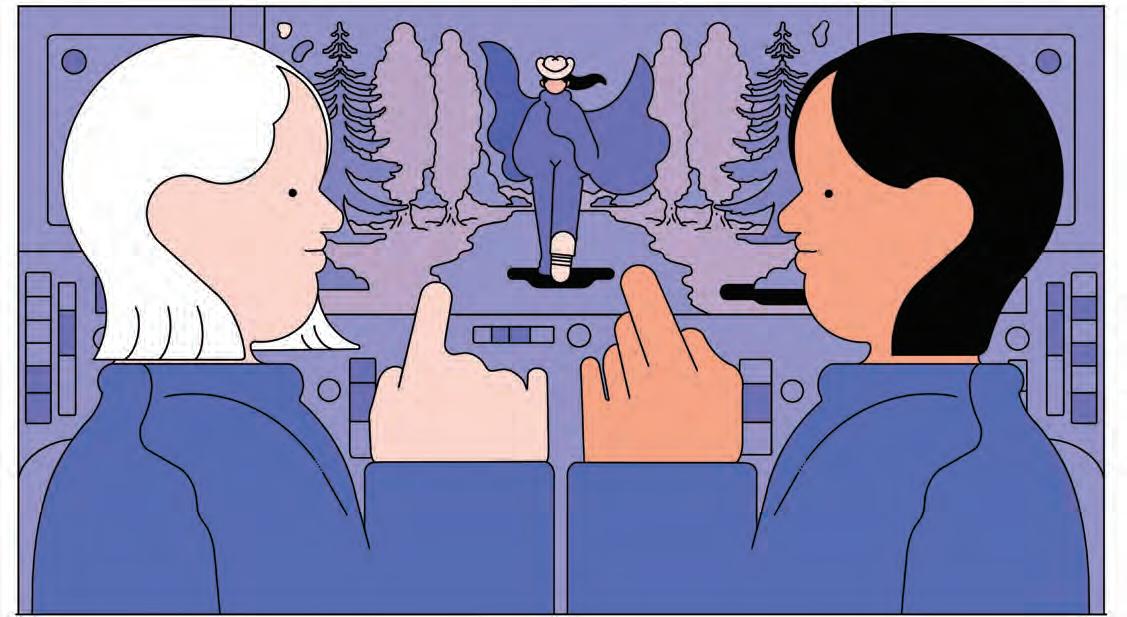
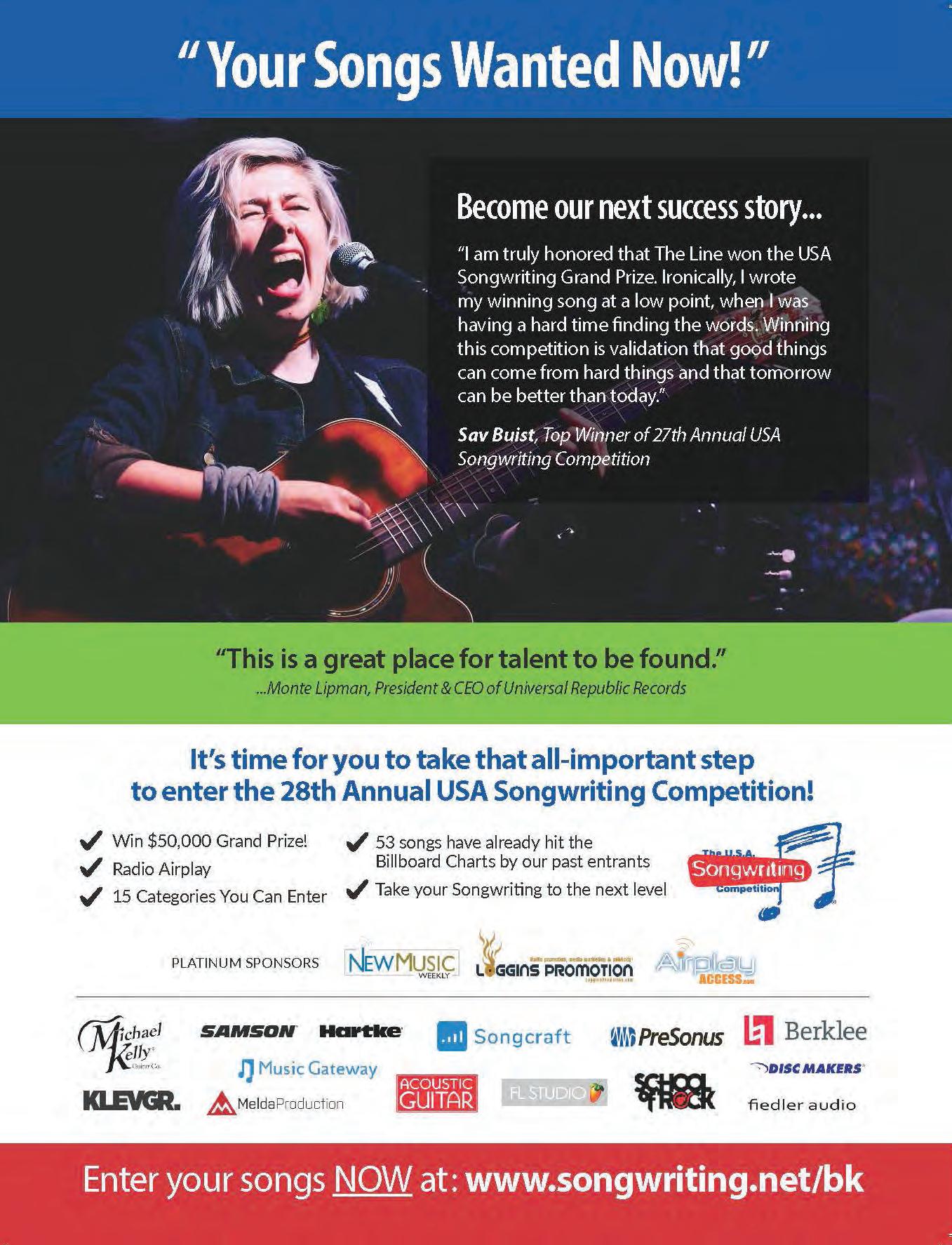
“It’s important to be able to talk about copyrighted work, using what’s necessary from that copyrighted work to make that commentary—and nothing more. But nothing less either.”
SEE PAGE 22